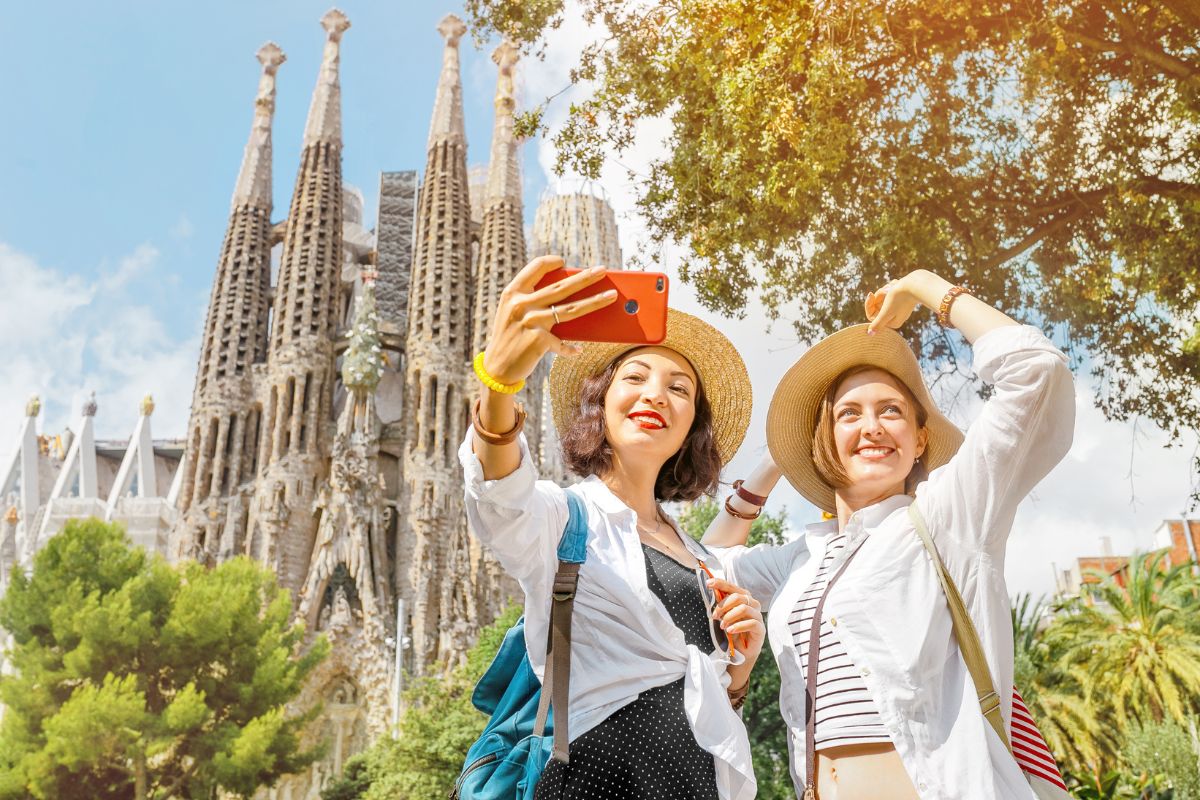Barcelona’s blend of architectural wonder, lively urban neighborhoods and sandy beaches draws millions of tourists from across the globe, making it the most visited city in Spain.
Home to over five UNESCO World Heritage sites and Europe’s largest football stadium, Barcelona is the only city awarded the Royal Gold Medal for Architecture.
Marvel at Antonio Gaudí’s Sagrada Familia alongside the contemporary bullet-shaped Glòries Tower, which are but a few of the many best tourist attractions in Barcelona.
Explore the metropolis by walking or cycling — you’re in one of the most bike-friendly cities in the world — and roam around its grid of equally square blocks designed for easy transport.
While on the go, you can search online for more things to do in Barcelona, as public Wi-Fi is available everywhere — just one of the perks of traveling in a smart city.
1 – Sagrada Familia
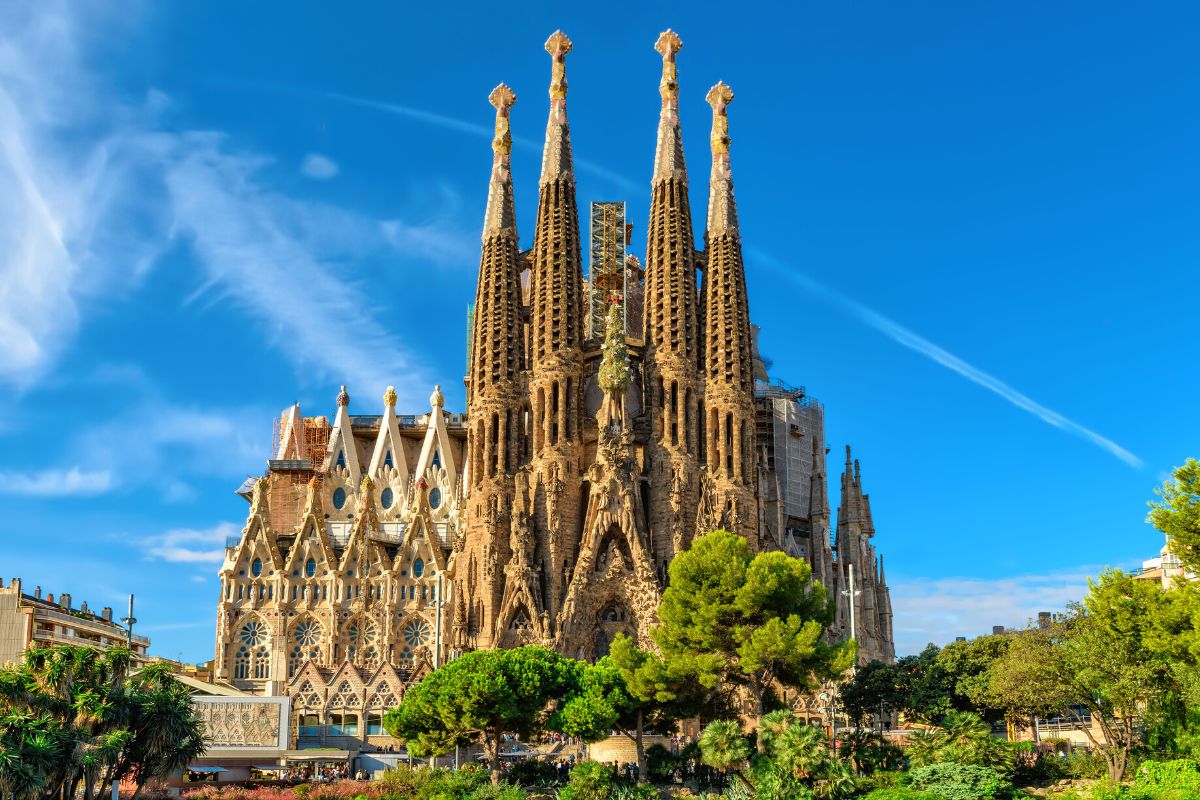
The Sagrada Familia (Holy Family) is one of the many crown jewels not only in Barcelona but in all of Spain, exemplified by Catalan architect Antoní Gaudií dating back to 1882.
Originally started by Francisco de Paula del Villar, the project was taken over by Guadí in 1883, until his death in 1926.
To date, the continuous renovations and constructions have not stopped in 140 years since the start of construction, meaning that this neo-Gothic-inspired church has been the longest-running construction project in Spain’s history.
Visit the emblematic church in the heart of Barcelona, contemplate the nativity facade amongst all the intricate carvings, and visit the museum detailing more details of the temple’s history, and the continuous updates on the temple.
Read more about Sagrada Familia ticket price, last minute tickets and Sagrada Familia guided tours.
2 – Park Güell
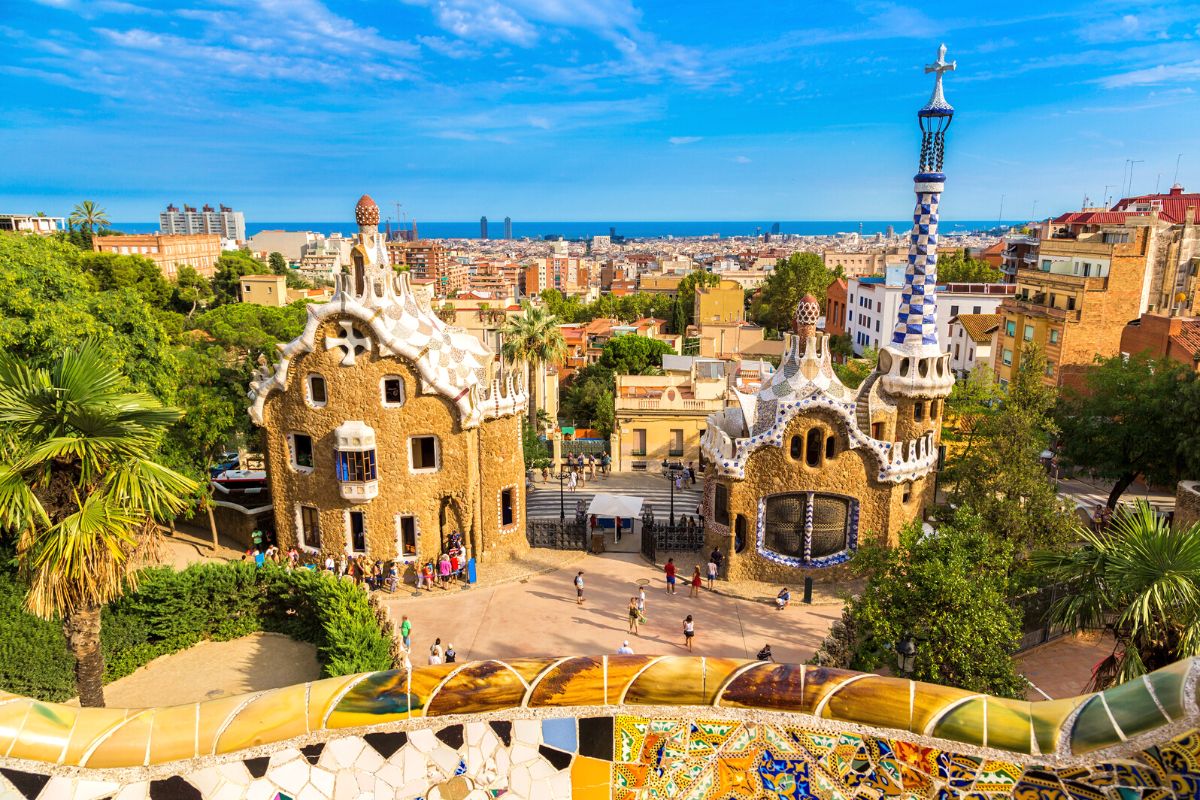
Visit another work of Gaudí’s at Park Güell, situated on Carmel Hill, and bask in the spectacular views of the city below, and even the Mediterranean Sea.
Named after the businessman Eusebi Güell who commissioned the park and was a fan of Gaudí’s work, the park opened in 1926.
Walk through the famous Portico of the Lavandera, check out the stunning Austria Gardens, see with your own eyes the Casa del Guarda (gatehouse), and take note of the broken ceramic pieces creating perfect designs on the benches of the park.
Consider visiting the Gaudí House Museum in Park Güell, the home of the famed architect, filled with personal items, and an opportunity to learn more about the person behind the famous architectural gems in the city.
3 – Casa Milà
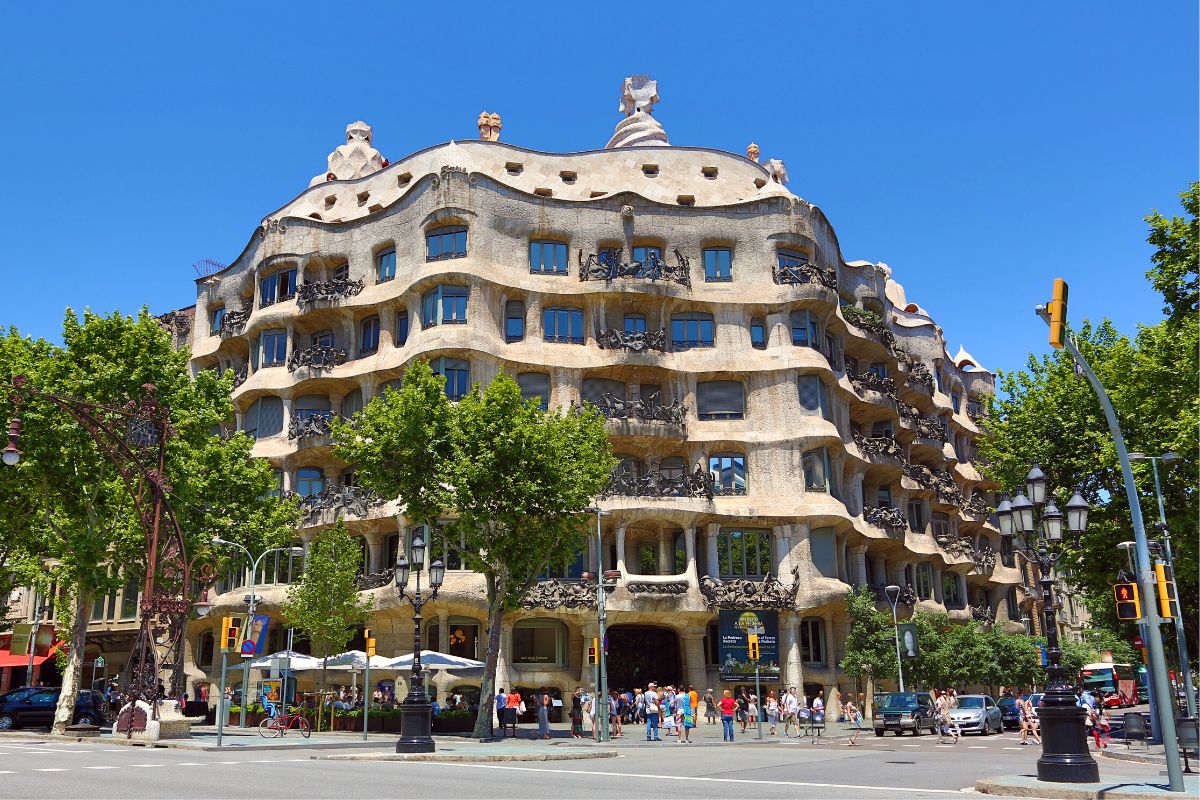
Casa Milà (also known as La Pedrera) is another iconic piece of work and one of the best tourist attractions in Barcelona to see for its Catalan Art Nouveau style, and rocky appearance.
Drawing constant crowds, the Casa Milà is located on Passeig de Gràcia, Barcelona’s most important street in 1900.
Gaudí was commissioned by a couple to design their building on the famed street, and eventually, with legal, and financial conflicts between Gaudí, the couple, and the city, the building transformed into an apartment complex, housing a variety of offices, homes, and centers throughout time.
Today, visitors can book tickets online for 25 euros, or 28 euros in person to see its exquisite interiors, or walk past and view the outer incredible facade, for free.
4 – Cathedral of Barcelona
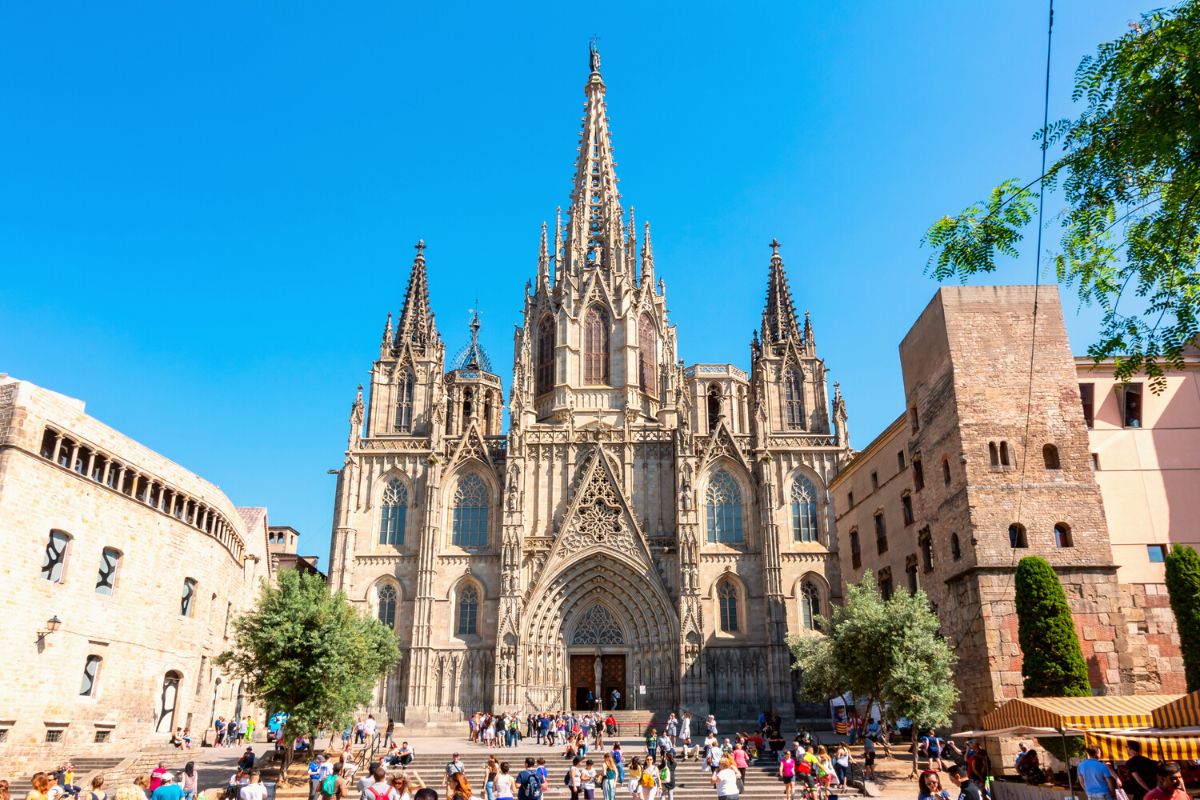
Fully known by its formal name of The Cathedral of the Holy Cross and Saint Eulalia, after the city’s patron saint, the Cathedral of Barcelona is said to have origins in the 13th-14 century.
Presenting a gothic design, it is considered one of the most important and largest cathedrals in Catalonia.
Step inside the cathedral for 9 euros and absorb the golden details of the pieces of the altar, detailed paintings of the passion of Christ, the “Heart Chair” where the choir is situated, and the high chair where the priest sits. Lastly, walk slowly past the stained glass windows, understanding their depictions.
For the price of 15 euros, get access to the Diocesan museum, access to the rooftop, and the chapter hall, with an audio guide.
5 – Arco de Triunfo (Triumphal Arch)
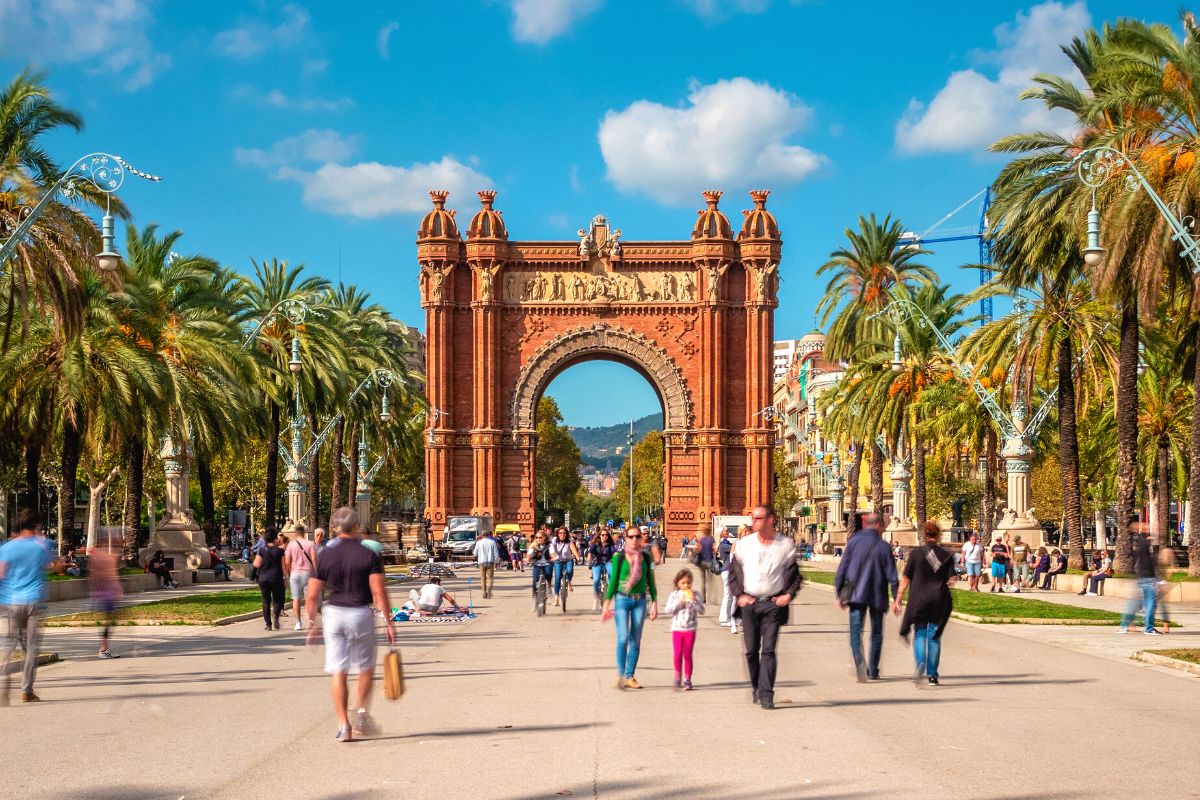
Built in 1888 by architect Josep Vilaseca i Casanovas, the Arco de Triunfo was built for the Universal Exhibition as the welcome gate that invited guests to walk through and into the Parc de la Ciutadella.
Nowadays, some locals consider the gate to have been a gateway into 19th century Barcelona, with its neo-Mudejar style and high-arched design.
Adorned with impressive designs, and a lot of symbolism, take the time to visit the arch and get close to viewing it for yourself, or book a walking tour to get even more in-depth information about the arch from a local.
Learn about the inscribed 49 Spanish provinces, as well as the coat of arms of the city of Barcelona.
6 – Ciutadella Park and Barcelona Zoo
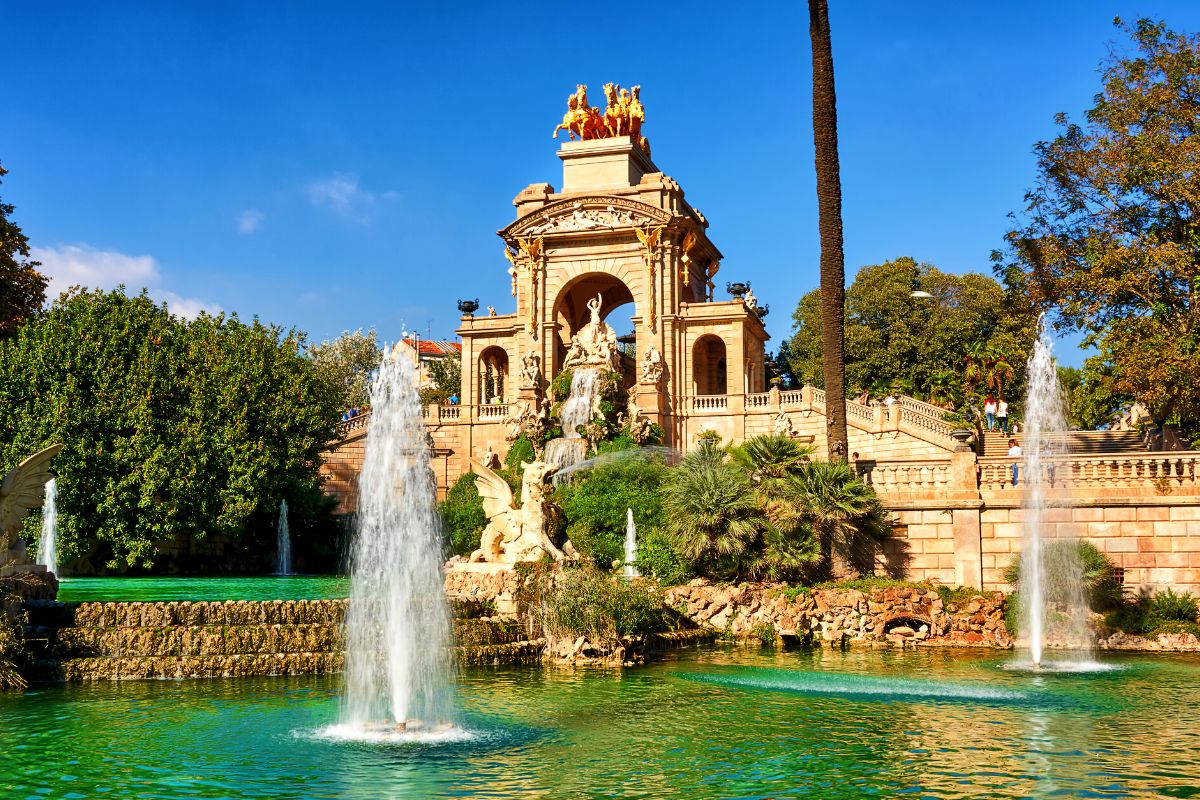
Visit the Ciutadella Park, where the lush forest welcomes families with serene walking paths, dense forests, quaint ponds, and the exciting and well-kept Barcelona zoo.
Inside the zoo, find a myriad of animals from tigers, to birds, and gorillas – once home to Snowflake the albino gorilla until their death in 2003.
Step inside the Catalan Parliament, one of the must-see attractions in Barcelona for the Museum of Modern Art inside. Go further into the park and you’ll find the Zoological Museum and the Geology Museums as well.
Adorning the sight and sound of the park is the Cascada del Parc de la Ciutadella, a stunning fountain with 2 tiers, that is known as a monument for its beauty and work in part by Gaudí.
7 – Casa Batlló
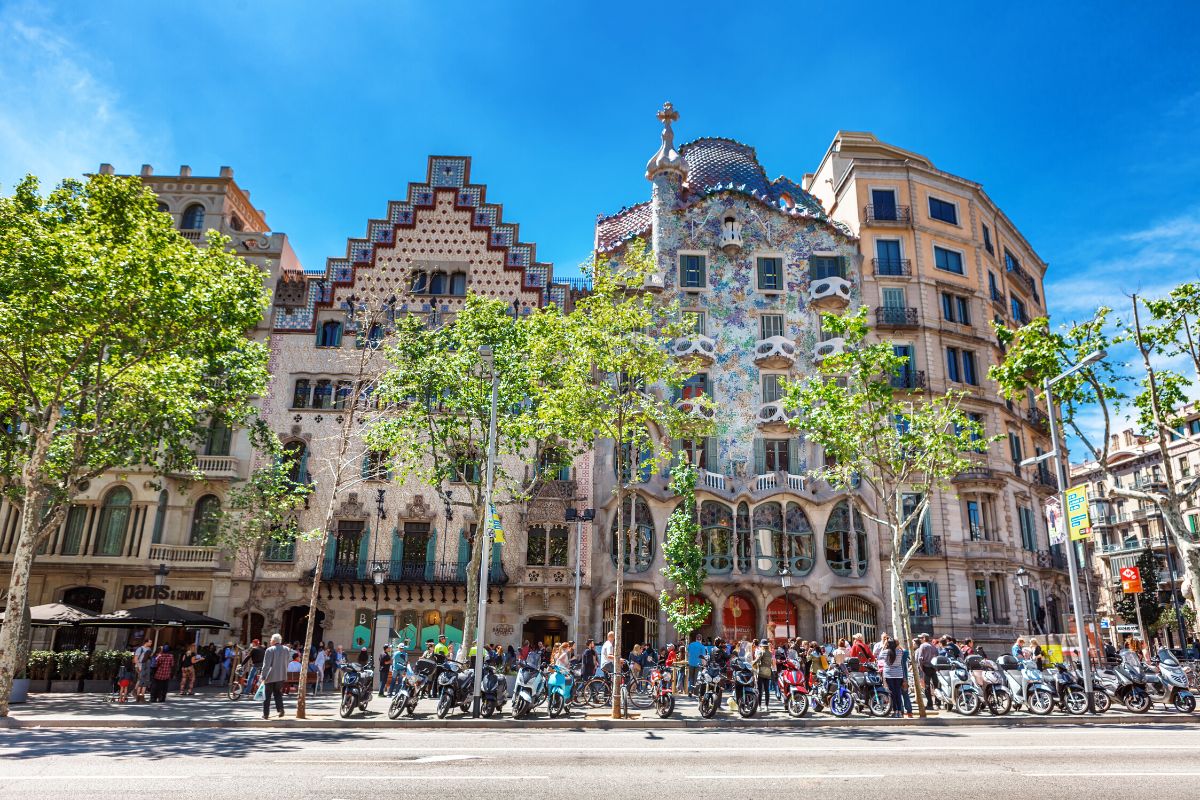
Along with the Sagrada Familia, Casa Batlló is another famous work by Gaudí, a building in central Barcelona and a great example of the artist’s modernist work.
Registered as a UNESCO World Heritage Site, this masterpiece attracts about 1 million yearly visitors who gather outside to witness its exquisite exterior — before heading inside to view the intricate designs up close, learning about the inspiration and thought that went behind the designs.
Originally built with the help of aristocrat Josep Batlló, whom the building was named after, Josep and his family lived on the bottom floor while the top was rented.
Gaze at the exterior, see images of skulls and bone and visit at night when it’s illuminated, shifting the look of the facade to a whole new level.
Hot tip: Discover the rich history and modernist architecture with the best city tours in Barcelona, offering an immersive journey.
8 – Picasso Museum
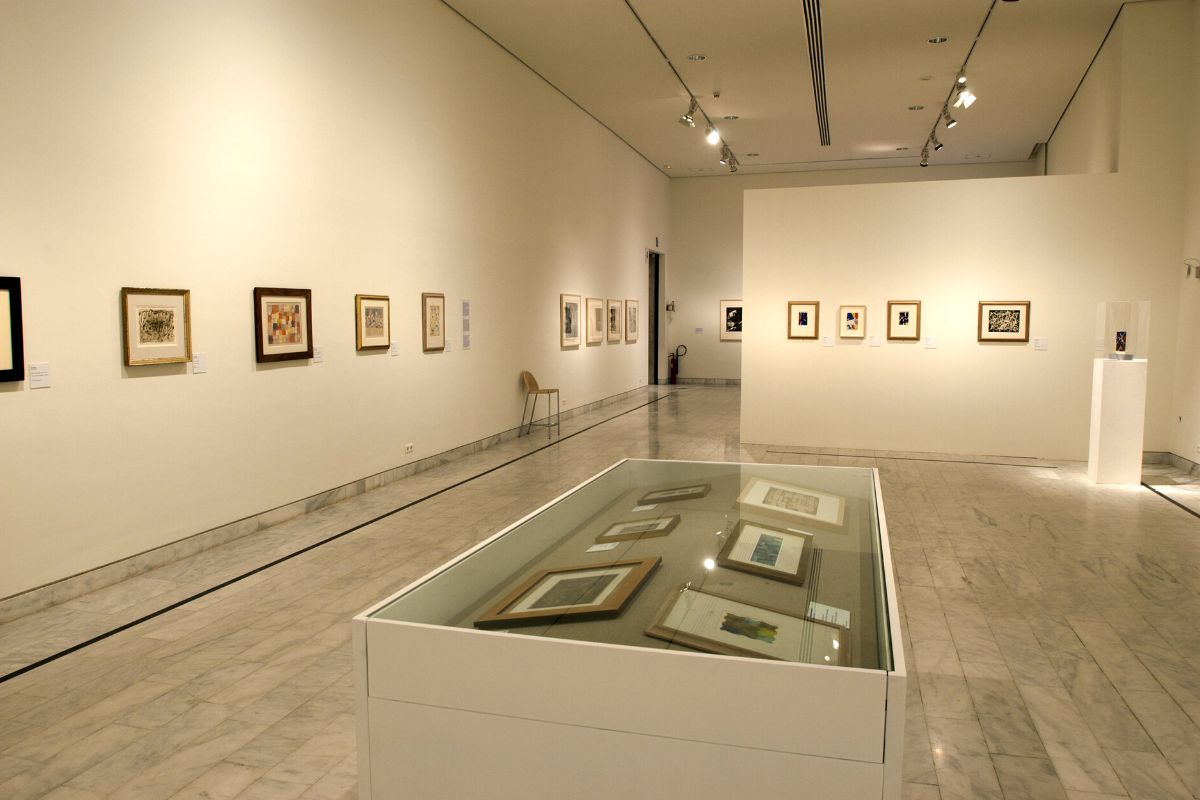
Housing over 4,000 of the famed painters’ most popular works of art, step inside the Picasso Museum, dedicated to showcasing the best of Pablo Picasso’s works from the 20th century.
Inspiring many during his time, one of Pablo’s most influential moments was leading the Cubist movement, an art style seen throughout his work inside the Picasso Museum.
Visit the museum to get a chronological order of his best work, and get the stories behind some of the artwork that made him famous such as his version of the painting by the 17th-century Spanish artist Diego Velasquez “Las Meninas”.
Check out the rotating exhibitions, all consisting of different works from Picasso, and collaborations with other artists.
Admission starts at 11 euros for adults.
9 – Palau de la Música Catalana
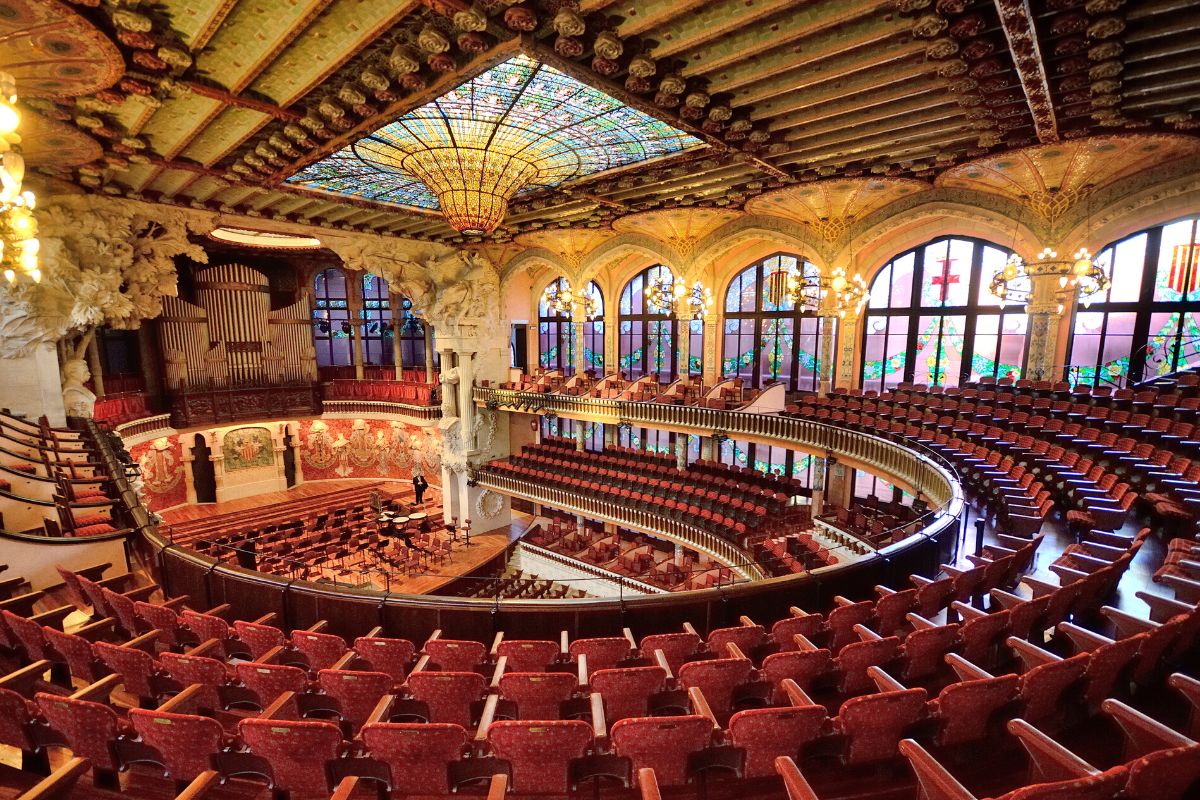
A work of art by the artist Lluís Domènech i Montaner is the stunning Palau de la Música Catalana (Palace of Catalonian Music), recognized as a UNESCO World Heritage Site, unique of its kind to receive such prestige.
On the exterior, check out the stunning pillars adorned with floral designs, as well as the sculptures of music geniuses like Bach and Mozart.
Another great example of Modernist art, step inside the Palau de la Música Catalana and take in the grandeur of the stained glass ceiling, ornate mosaic work, gold details all around, and bright chandeliers.
Visitors can attend a concert inside the concert hall, or take a tour of the grounds to get the fascinating stories and concerts that the walls have presenced since 1908.
10 – Camp Nou
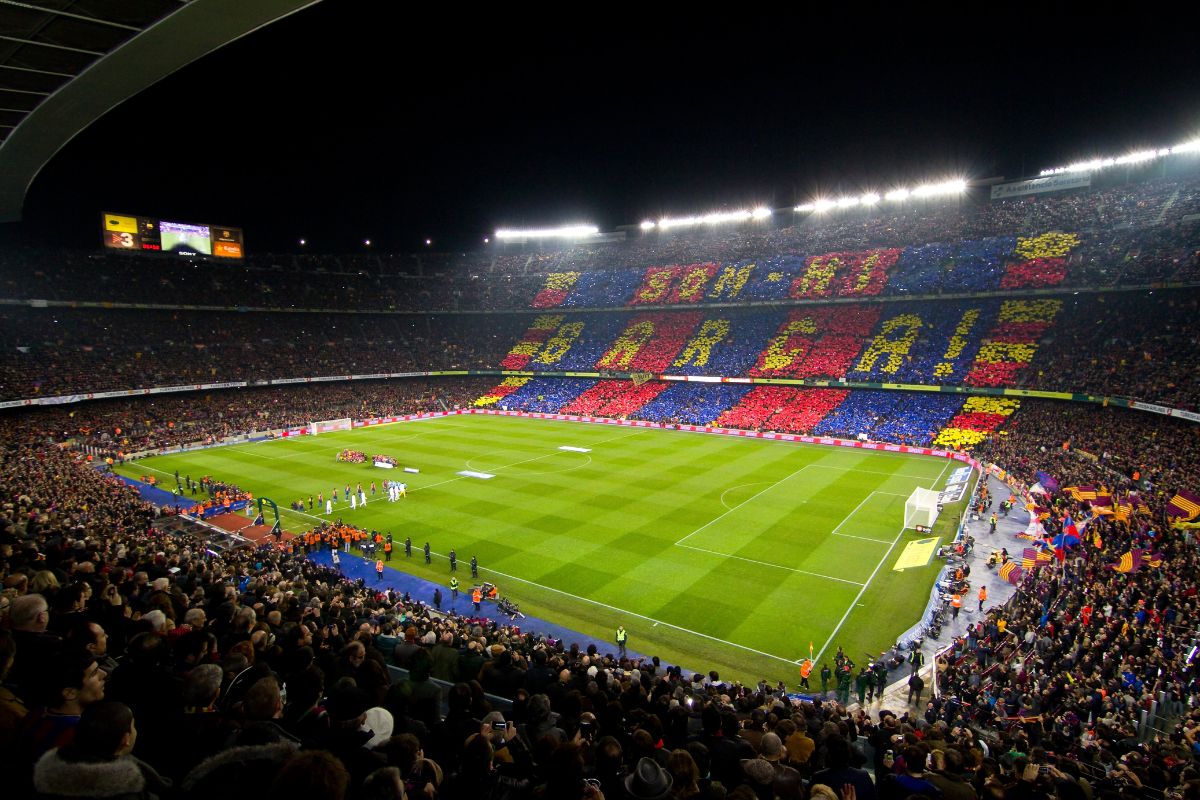
FC Barcelona fans get excited over Camp Nou, the official stadium home of the famous soccer team. Inside, fans can check out a guided tour of the stadium, and take a reflective moment on the field that has seen many triumphs through the years.
Step inside the FC Barcelona Museum, and learn about the historical triumphs and losses, view the trophies and recognition, and step inside the locker rooms.
Purchase one of the ticket packages, offering a variety of additional activities such as the FC Barcelona Virtual Reality experience, an audio guide to browse the museum, or even the chance to play a little soccer yourself. This experience is also perfect for kids.
Camp Nou (Spotify Camp Nou) is located east of the Barcelona city center.
11 – Mercado de La Boqueria
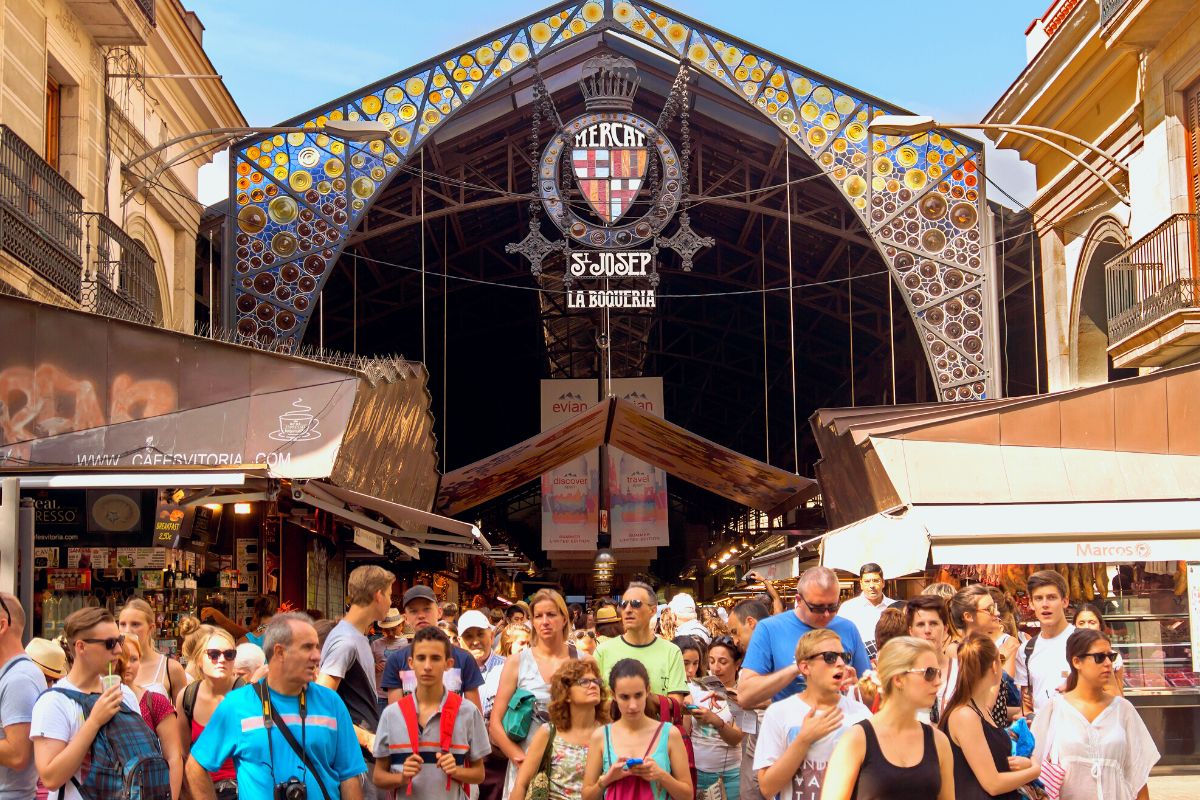
Arguably Barcelona’s most popular food market is Mercado de La Boqueria, and for good reason.
Walk through the halls of 300 food stalls of delicious scented foods, attention-grabbing food displays, mouthwatering sweets, savory dishes, and refreshing smoothies and drinks to recharge yourself with.
Located in the old part of Barcelona, and directly next to the famed La Rambla, don’t miss one of the best tourist attractions in Barcelona to eat to your heart’s content, and people-watching locals and tourists come together.
Boqueria signifies a place that sells meat, and while there is meat sold inside, vegans and vegetarians will also enjoy foods catering to their tastes.
This market is one of the first markets in Barcelona, opened in 1827, and still serves barceloní and barceloninas today.
12 – Casa Vicens Gaudí
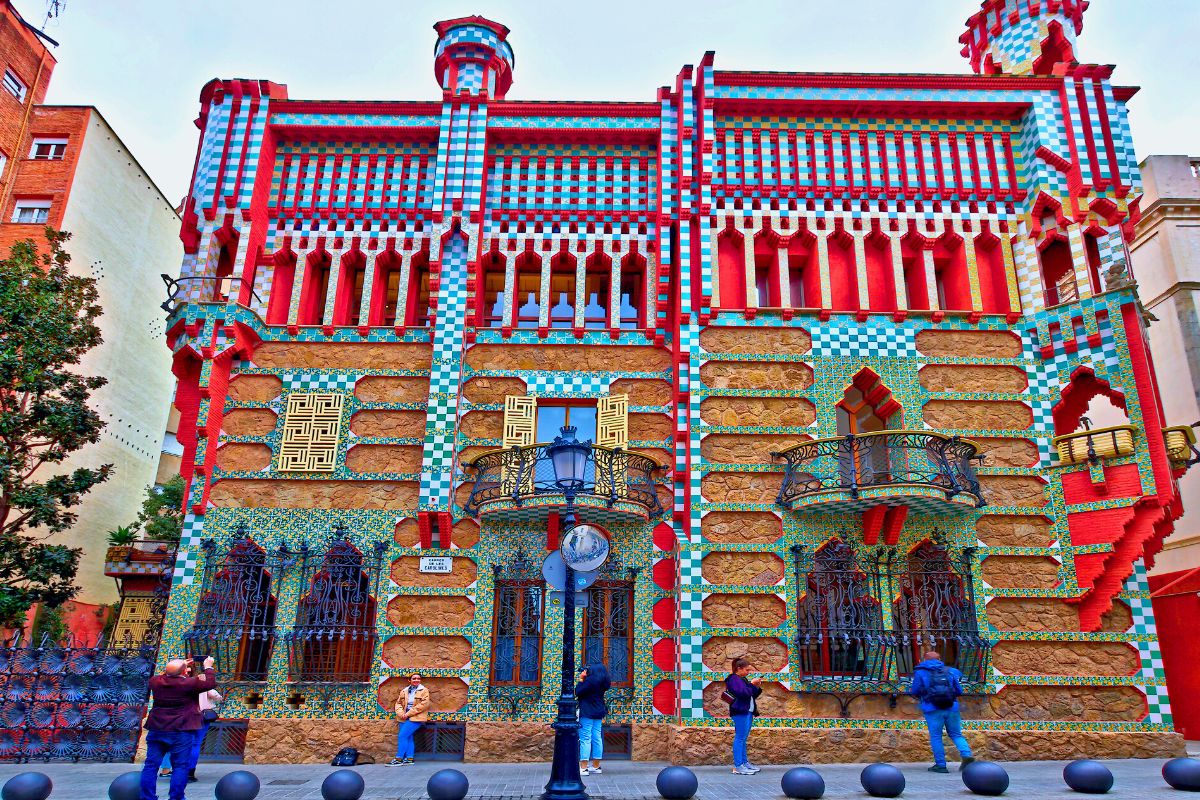
Step inside the highly adorned Casa Vicens Gaudí, situated inside the Gracía neighborhood, considered to be another great work of Gaudí not to miss, as it was his first official project in Barcelona.
Built between 1883-1885, Casa Vicens Gaudí is an important piece of architectural design not only in Spain but Europe, as it is one of the first few examples of different art movements at the time, that was new.
Inside, relish the sight of extraordinary motifs, mosaics, colors, and decor, as you learn about the architectural techniques involved in creating the facade of the building.
With various ways to explore and enjoy Casa Vicens Gaudí, check out their website to choose the more than 3 ways to experience Casa Vicens Gaudí.
13 – Museu Nacional d’Art de Catalunya
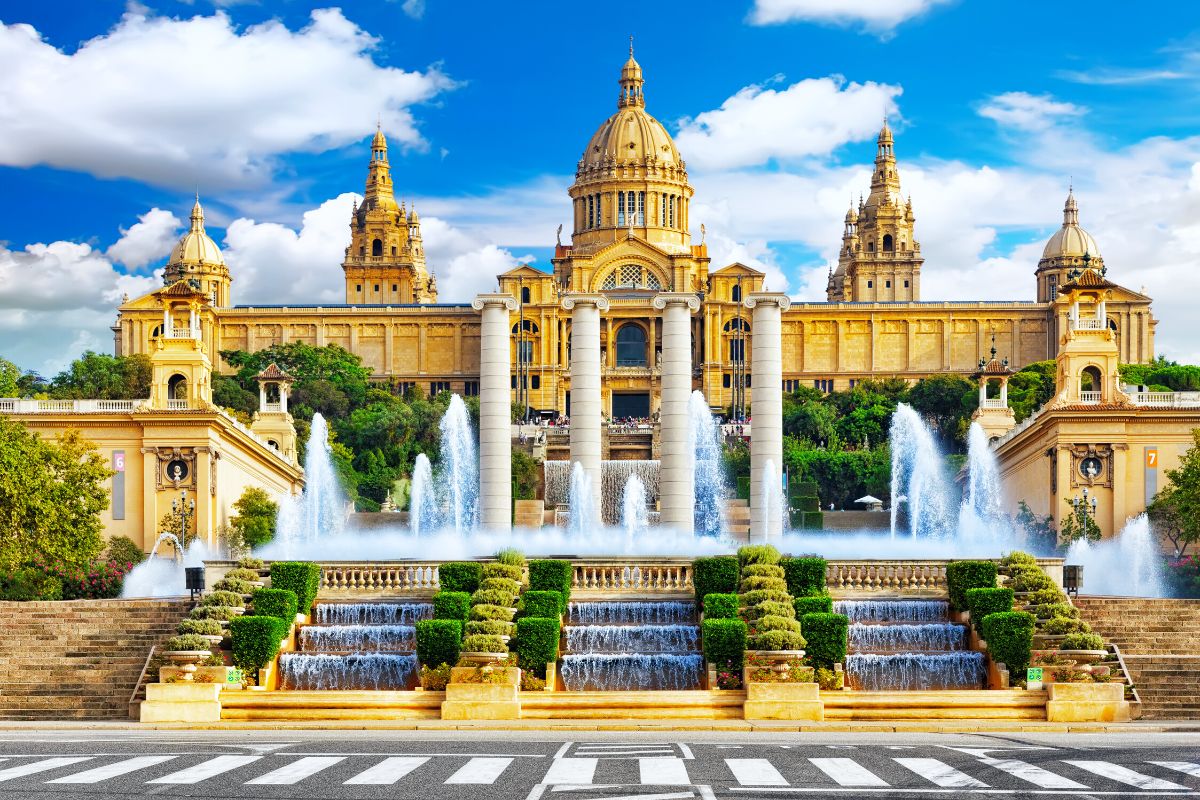
Get a visual taste of Catalonian art inside the National Museum of Catalan Art, housed in the Montjuïc National Palace, offering privileged views of Barcelona worthy of a moment or two.
Overflowing with art pieces that date back to the Middle Ages of Barcelona, all the way forward to today, visitors will see a variety of renowned Spanish artists from Barcelona and their best works.
The museum first opened its doors in 1943, showcasing examples of medieval art, and then in 1995, it expanded its space to include pieces of art that represented the Romanesque era.
Today, visitors can see contemporary photos of the last few years, thus, giving the visitors an expansive look at various mediums and depictions of art through time in Barcelona.
14 – Güell Palace
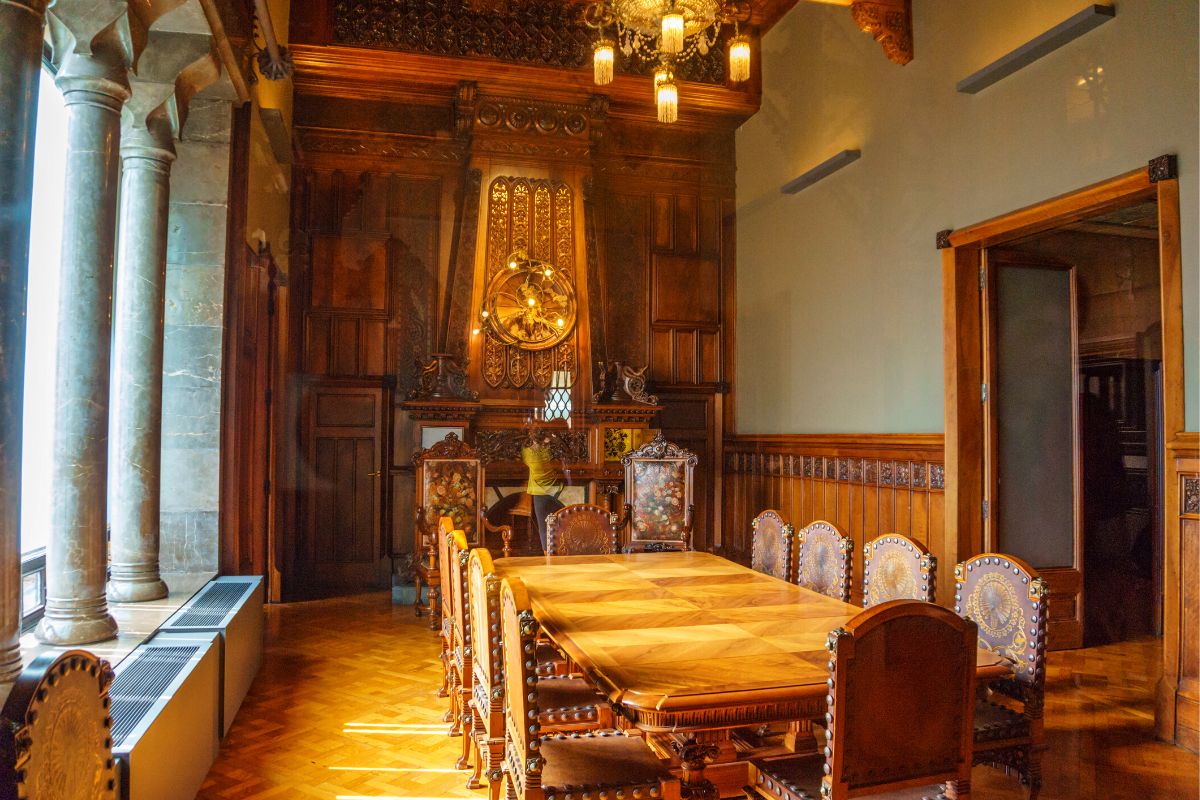
Güell Palace is a home built for the businessman, Eusebi Güell, designed by Gaudí, in 1886.
Situated in the Raval neighborhood, the Güell Palace is known to be one of the first major examples of Art Nouveau, using various forms of inspiration, use of space, and light, culminating in this building attracting visitors all over the world.
The interiors are reason alone to visit the palace, getting inside the mind of Gaudí as he completed one of his first works, the more visitors go down the hallways, and rooms.
On the tour, step into the basement to find a horse stable, and walk through the central hall, presenting a fascinating architectural design, with impressive acoustics that visitors can listen to while the sound of the organ plays.
15 – Magic Fountain of Montjuïc
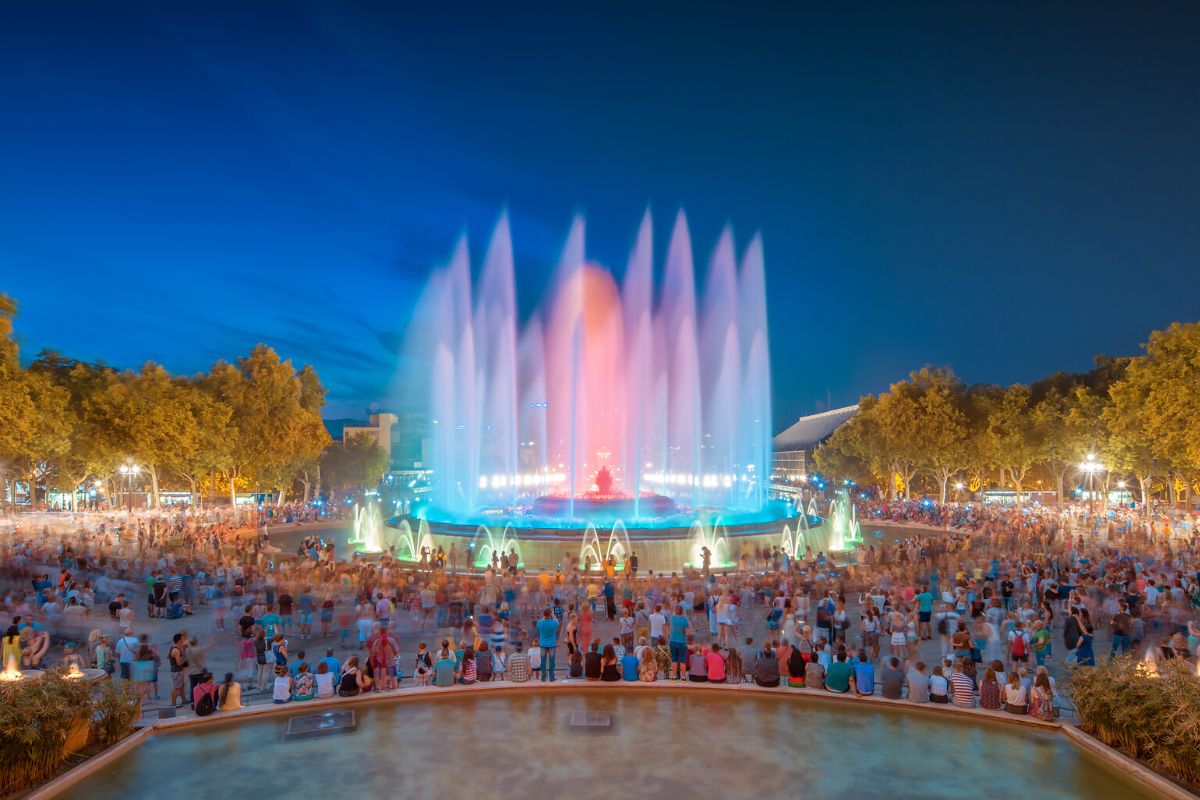
Built in 1929 for the International Expo, the Magic Fountain of Montjuïc is a circular light and sound fountain show, with multiple nozzles creating a wonderful spectacle of entertainment.
With the tune of hits from the 80s, cartoon themes, and Spanish classic songs, the Magic Fountain is sure to keep both children and adults entertained.
Since 2010, the fountain has received eco-friendly adjustments using groundwater and LED lights to continue this 93-year-old tradition. It’s situated in the neighborhood of Montjuïc, on the street called Avinguda Maria Cristina, or a 30-minute walk from the iconic La Rambla.
The showtimes are Tuesday – Saturday, with frequent shows between 11 am – 1 pm, 4 pm – 6 pm, and on Sundays from 11 am – 3 pm.
16 – Barcelona Museum of Contemporary Art
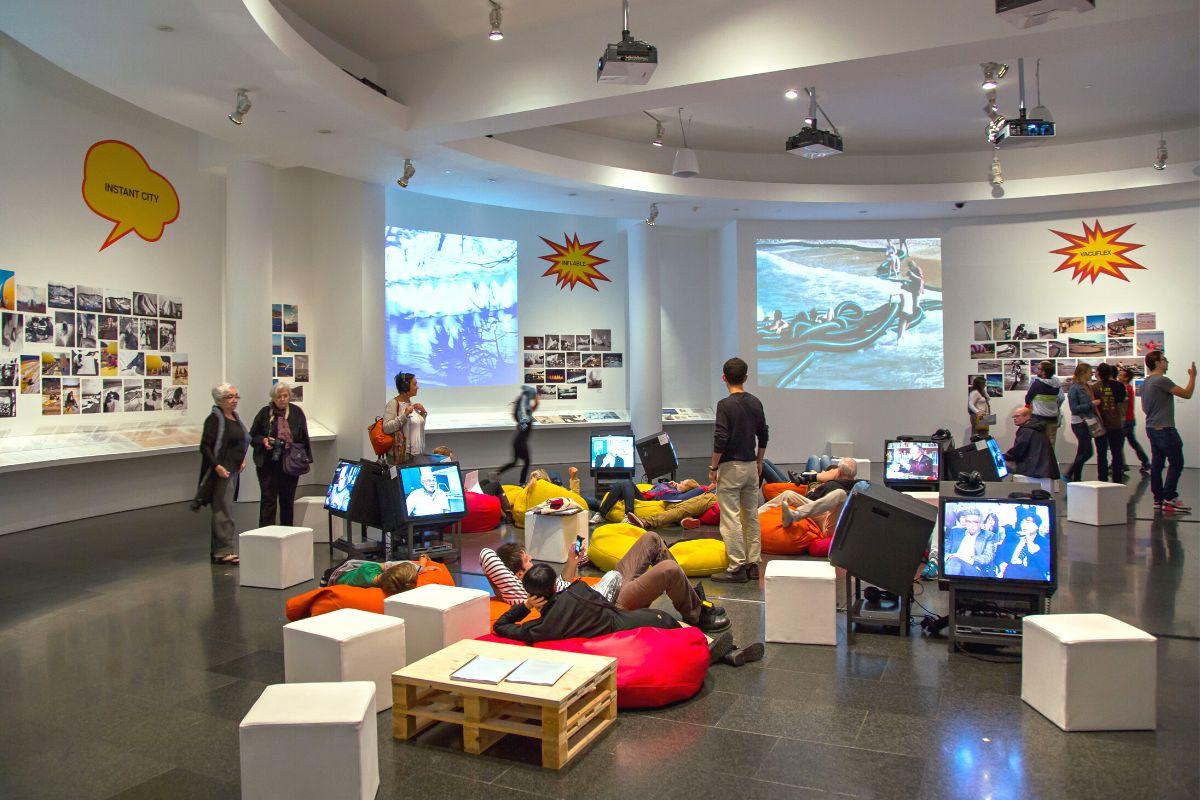
Located in the famed La Raval neighborhood, is the Barcelona Museum of Contemporary Art. Offering various examples of creative, and stimulating art pieces, the collections inside the museum are designed to encourage critical thinking and debate amongst the museum-goers.
Browse through the collections, mostly constituting Catalan artists dating back from the 60s, and onward. Learn about the different art techniques common in the different eras of contemporary art, as you learn about specific artists and their inspirations.
Visitors can expect to see a variety of collages, drawings, sculptures, objects, assemblages, recordings, and a few more different mediums of art.
Tickets to the museum begin at 11 euros per adult entry.
17 – Plaça de Catalunya
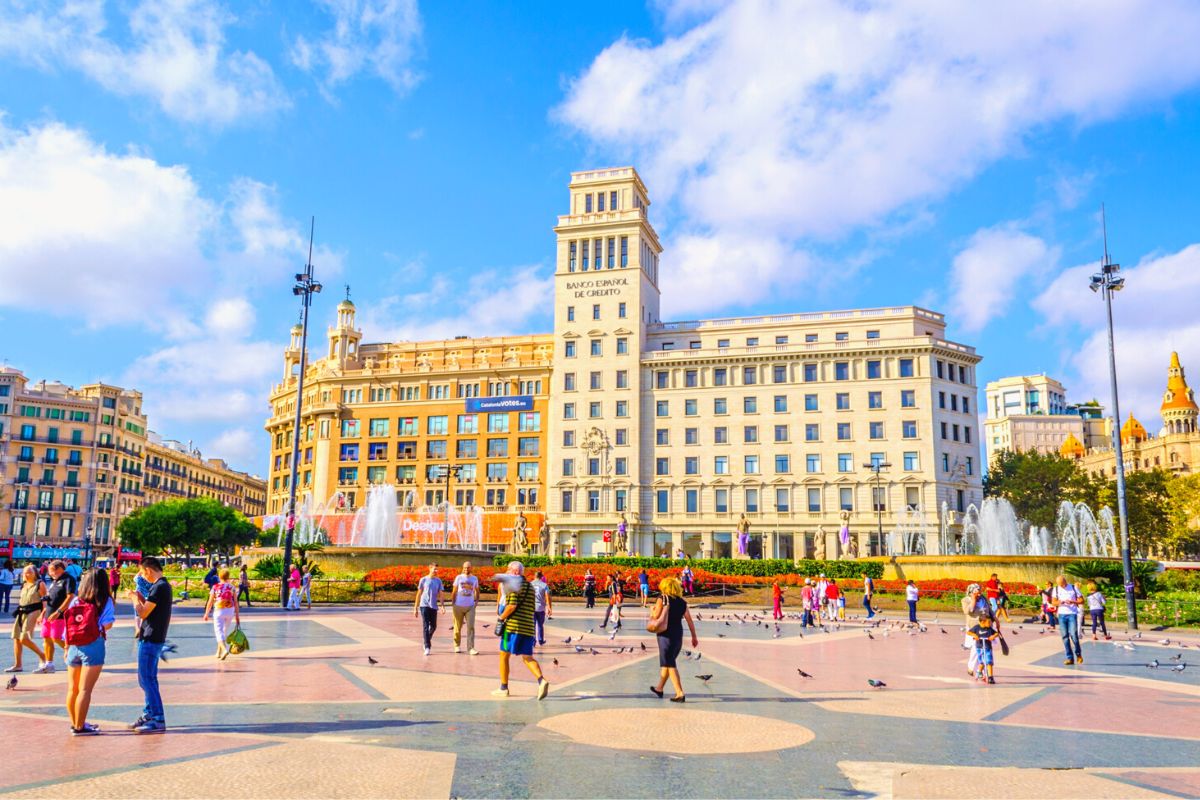
A favorite meeting spot for friends and local tours is the Plaça de Catalunya, located in the heart of the city and inaugurated in 1927 by King Alfonso Xlll.
Before becoming the exciting plaza that it is today, it used to be the center space where some of the best hotels in the city were found, built in time for the International Exhibition of 1929.
Although none of those hotels exist today, many shops can be found surrounding the plaza, from clothing brands to technology stores. It’s a great place to relax while staying in the heart of all the action.
Learn about the 4 sculptures, representing the 4 capital cities in the Catalonian region, as well as 2 additional sculptures representing labor and wisdom.
18 – Casa Amatller in Barcelona’s Apple of Discord
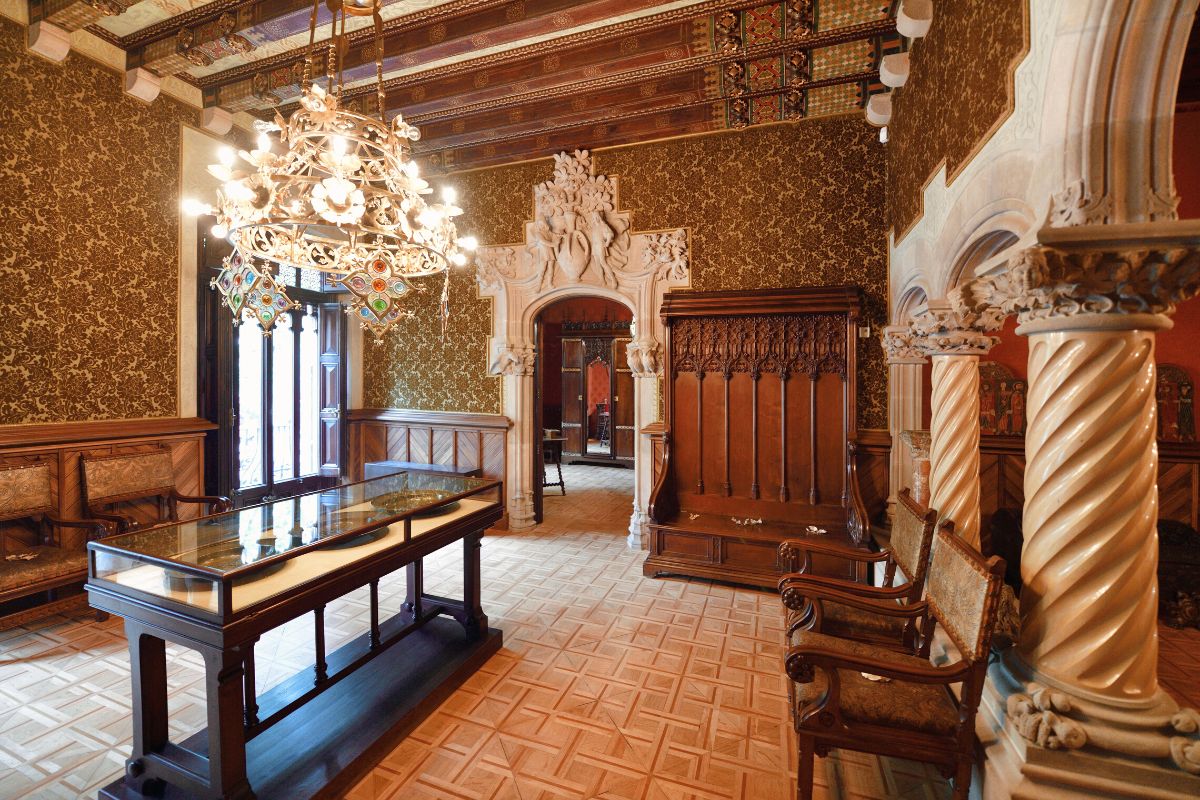
Situated next to the popular Casa Batlló, is the Casa Amatller, a great work of architectural design and a clear example of the Modernisme style of Art Nouveau in Barcelona.
Forming part of Barcelona’s Apple of Discord, the Casa Amatller is situated in the block in the city where 2 more of the city’s most architecturally diverse and fascinating building designs and colors reside.
The house was designed for the Amatller family by Josep Puig i Cadafalch, a notable chocolatier family, whose chocolates are still circulating.
Inside, visitors can learn all about the family, the inspiration behind the design of the building, take a look at the serrated roof, the interesting color mix, and the integration of the family’s interest into the house.
19 – Basilica of Santa Maria del Mar
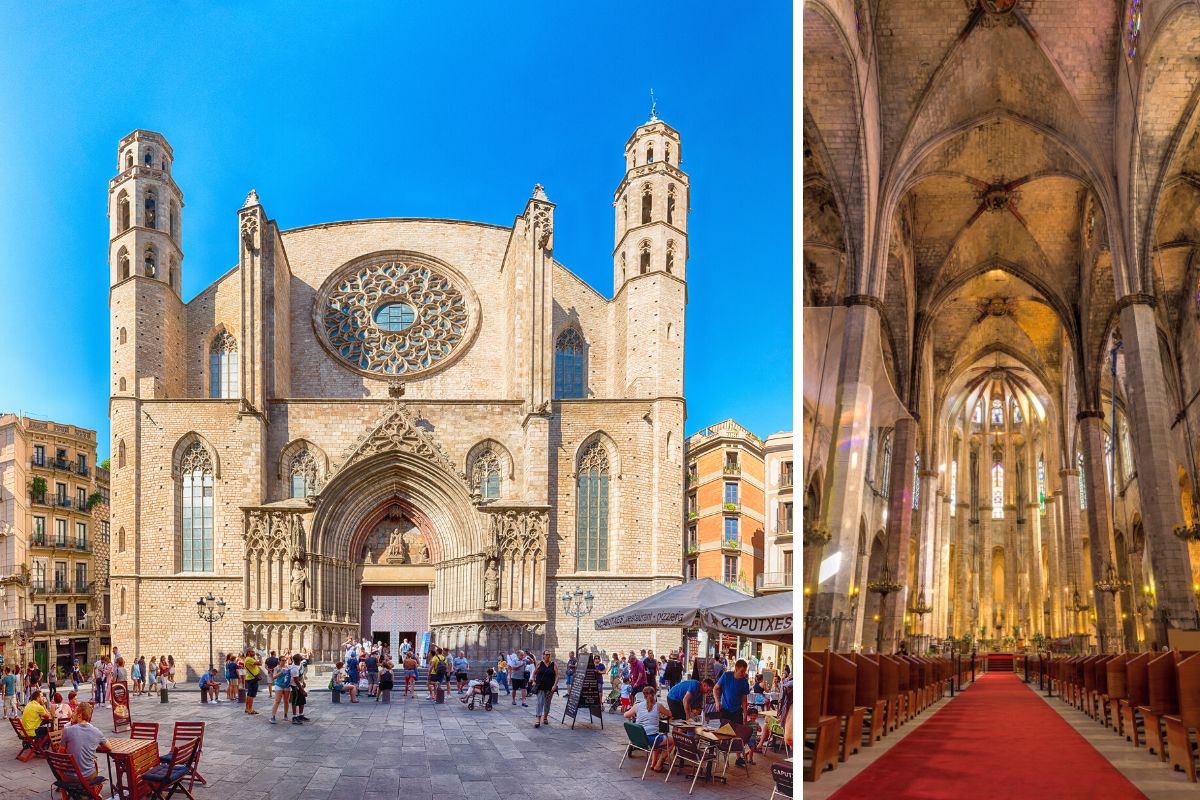
Dating back to 1329, the Basilica of Santa Maria del Mar is a religious house that was built in record time based on the time it took to build a structure of its kind in the Middle Ages.
Taking only 55 years to finish, today, it’s one of the last examples left of Gothic-style architecture. Feel the sense of vastness when you step inside, taking a look at the high vaulted ceilings, and the magical light that streams from the windows.
Step closer inside, and view the tombs of important people associated with the basilica. The basilica was also known as the holy house for the sailors.
Get tickets to reach the rooftop of the church, and get amazing sweeping views of the city all around you.
20 – Montjuïc Cable Car
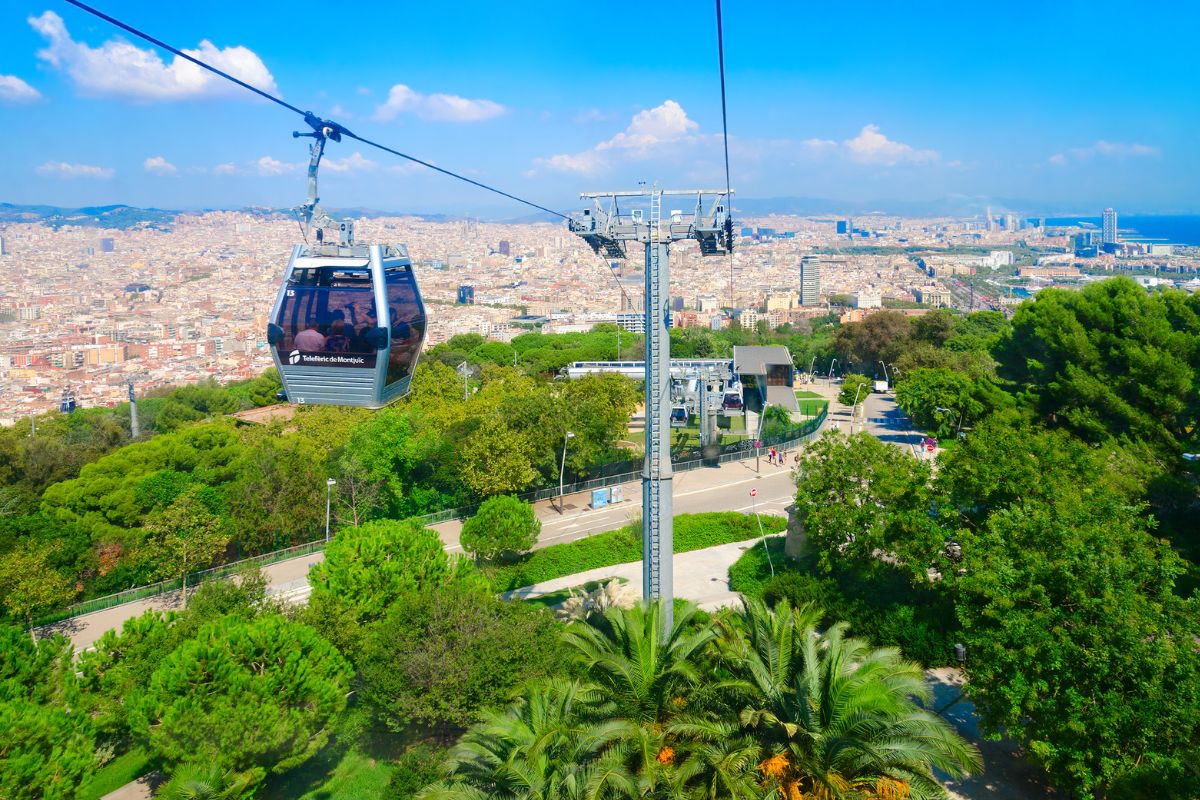
Get outstanding views of Barcelona and the Mediterranean Sea from the skies above on the fabulous Montjuïc Cable Car.
The cable car transports visitors some 750 meters above, usually taking around 5 minutes, and finalizing the journey on top of Montjuïc Mountain, and the Montjuïc Castle that sits on top, perfect for picture taking.
Another site to catch on the journey is a stop at the l’Alcalde viewpoint, with sweeping views of the sea, coast, and the Cinto Verdaguer and Joan Brossa gardens, offering a refreshing city break.
The tickets start at 9 euros for a single journey and 12,78 euros for a roundtrip ticket for adults. If you’d like to save 10% off your ticket purchase, make sure to purchase online ahead of time.
21 – Joan Miró Foundation
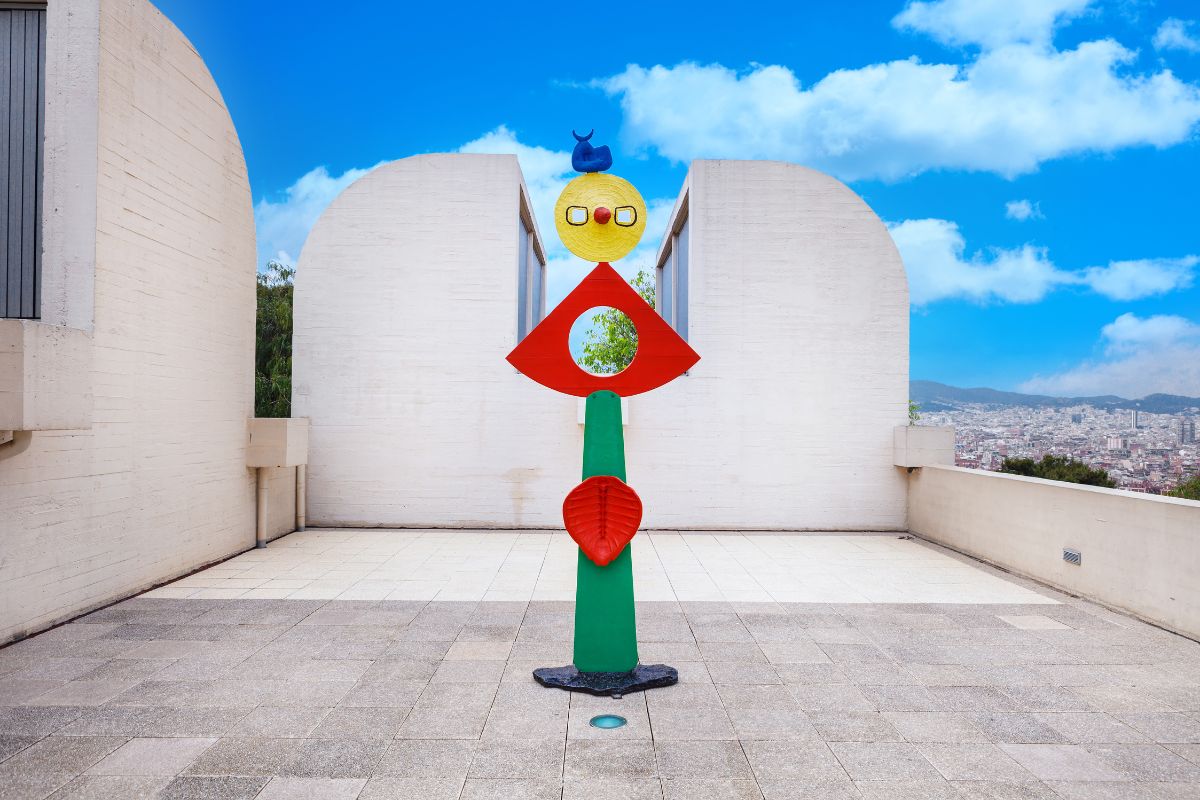
Joan Miró was a famous artist from Barcelona who was well known for his sensitive and often rebellious expression of socio-political events through art happening during his lifetime.
The Joan Miró Foundation is a museum that was started by Miró himself, and opened to the public in 1975, housing more than 10,000 paintings, drawings, sculptures, designs, and photos, many of which the earliest piece comes from 1901.
Making art available to the public was Miró’s intention, and today, the museum continues and hosts a variety of exhibits and events, one of which not to miss is the “Nits de música” which happens every Thursday.
Step up to the rooftop terrace to view Miró’s sculptures, as well as view sights of the city from above.
22 – Barcelona Aquarium
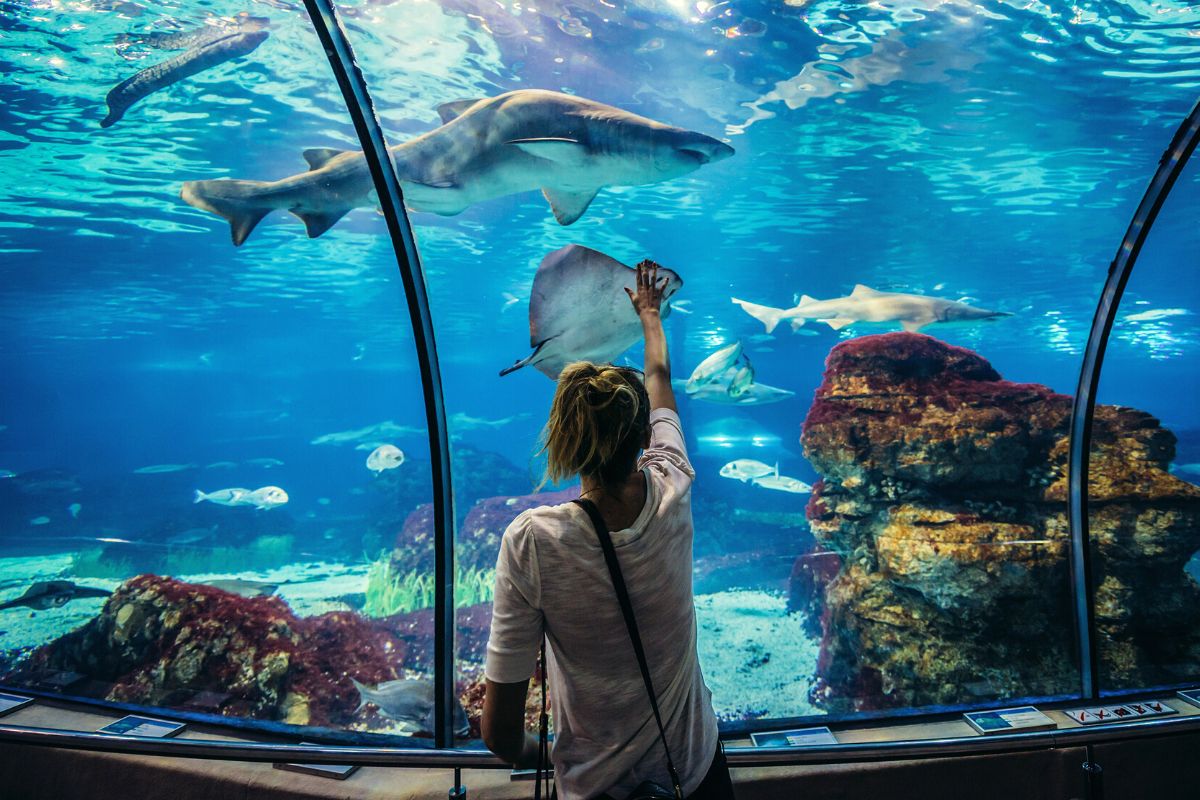
Located in Old Port on the coast of Barcelona is the wonderful Barcelona Aquarium, home to approximately 11,000 animals and representing 450 different marine life species.
Brimming with different activities to do and witness, such as shark cage diving, and family games, the aquarium also has more than a few exhibits, showcasing animals from the ocean inside the Oceanarium such as moray eels, the sand tiger shark, the sandbar shark, and more.
Check out sea animals from the Mediterranean, like sharks, Atlantic wreckfish, guitarfish, stingrays, the bullet tuna, and more.
Walk through the 80 meters long water tunnel, where visitors will become immersed in sea life from all corners as if walking through the bottom of the sea.
Tickets for adults are 24 euros.
23 – Barcelona History Museum
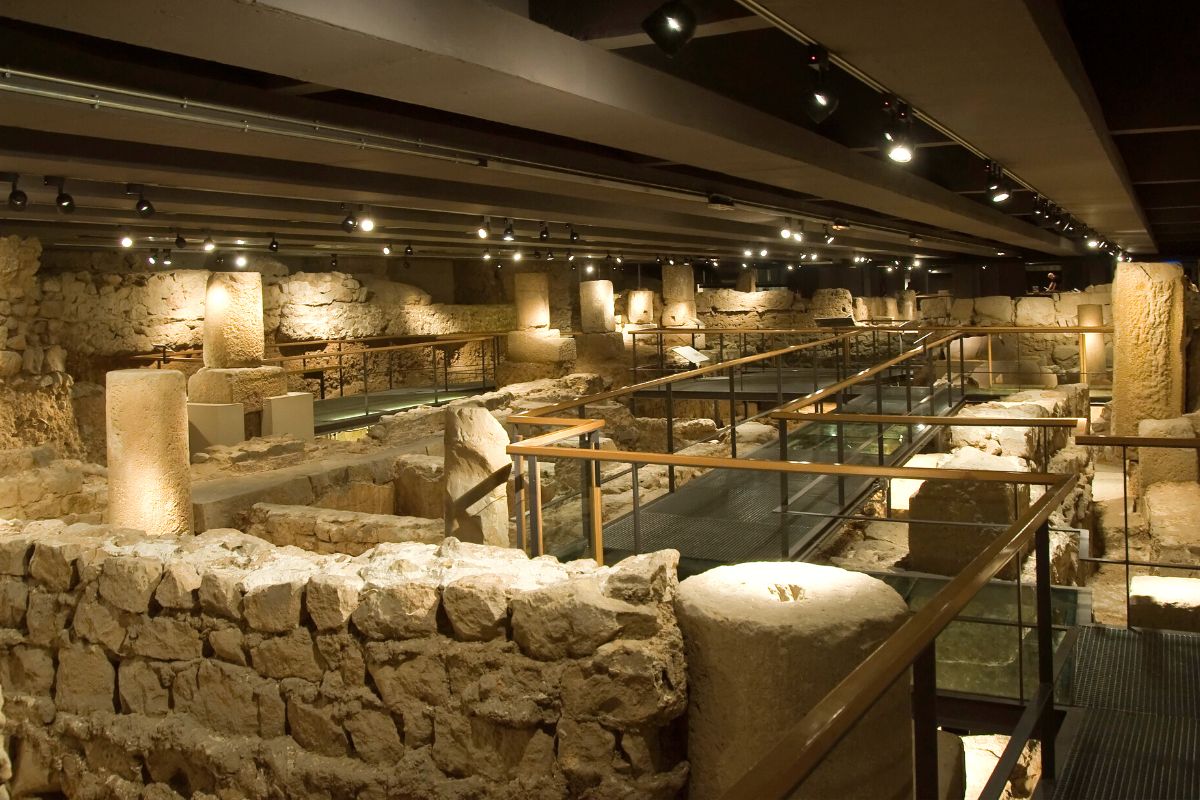
Settled in the heart of the Gothic Quarter, is the Barcelona History Museum, housing remnants and artifacts of the beginnings of the city, which used to go by the name of Barcino.
Explore the monumental Roman ruins, said to be some of the largest Roman excavations found outside of Rome.
Learn about what daily life consisted of for the Barcino natives during the Roman era, from wine-making practices, pottery and ceramics utilized, foundations of Roman churches, and remaining sections of the Roman walls that guarded the city.
Many of these remains are in good condition, which requires little imagination to get the full picture of the beginnings of this impressive city.
Tickets start at 7 euros for adults, with free admission on Sundays after 3 pm.
24 – Sant Pau
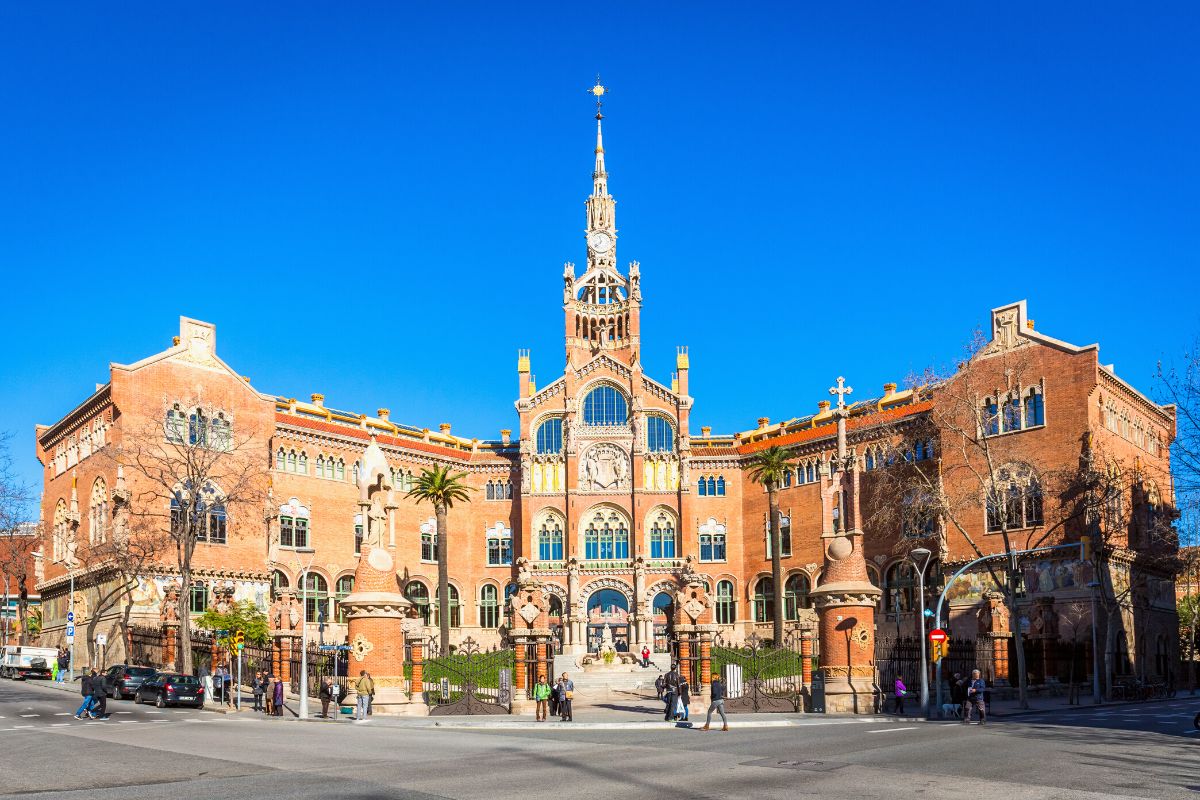
Walk straight into the world’s largest Art Nouveau complex, created by Lluís Domènech i Montaner between 1905-1930.
The Sant Pau is a large pavilion space, led by the Hospital de la Santa Creu i de Sant Pau, a prime example of Catalan Art Nouveau, with underground tunnels where visitors can walk through and check out the galleries underneath.
Let your eyes wander through works of colorful ceramics, mosaics, and stained glass.
A tour through the entire complex will bring visitors face to face with the historical use of the hospital de la Santa Creu i Sant Pau, as well as stunning gardens, said to be the inspiration behind the Art Nouveau style.
Walk through the Recinto Modernista, a garden city created to care for the ill.
25 – Poble Espanyol
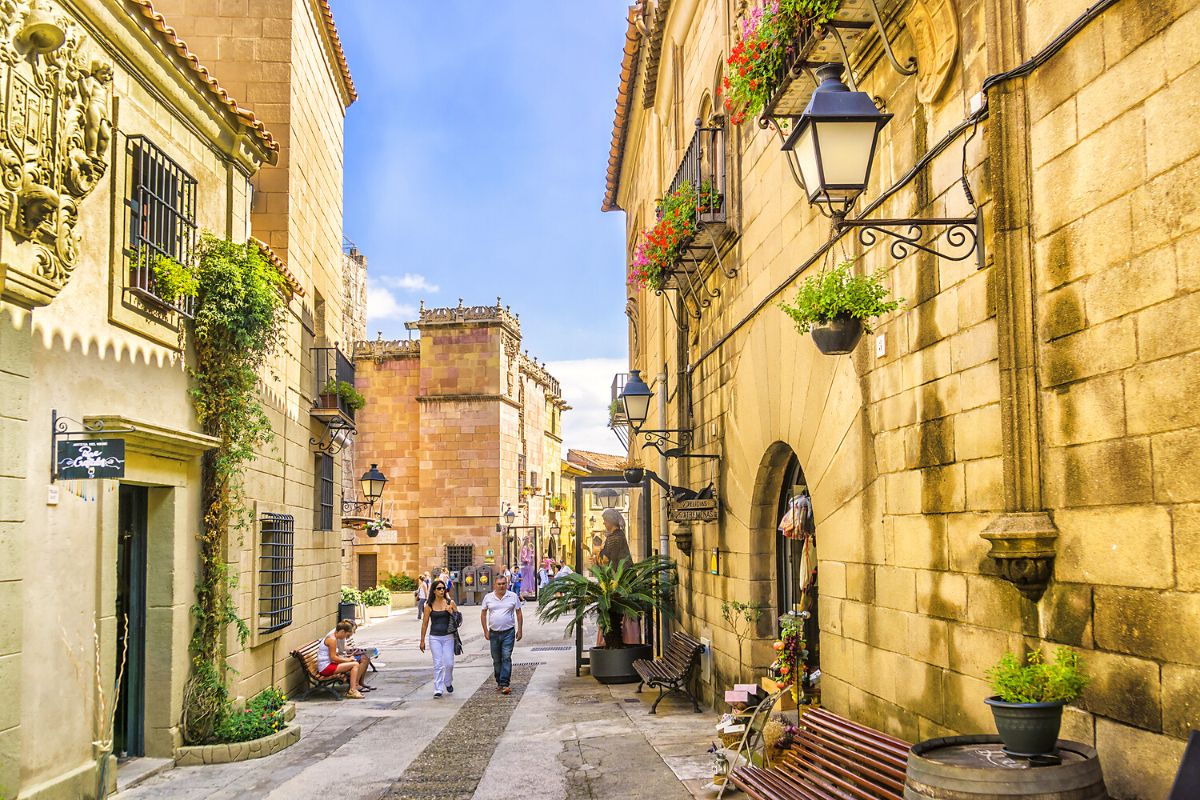
Check out the open-air architecture museum connecting artisanal work, and tradition, for people of all ages, dating back to 1929.
Consisting of 117 artfully designed buildings, more than 15 artists hard at work, 300+ works of art, and more than 40,000 square meters to explore, it’s no wonder that approximately 1.2 million visitors stop by annually.
Take your sweet time exploring one of the art-inspired Barcelona attractions not to miss, especially with its close proximity to the Fountains of Montjuïc, only a 6-minute walk.
Venture through its colorful streets, checking out the locally crafted art, modern art pieces, cultural activities, and fun events, such as Rumba concerts, and mosaic workshops.
Stop by the exhibit, “A photographic journey. The construction of Poble Espanyol” to see the changes in this space.
26 – Gothic Quarter
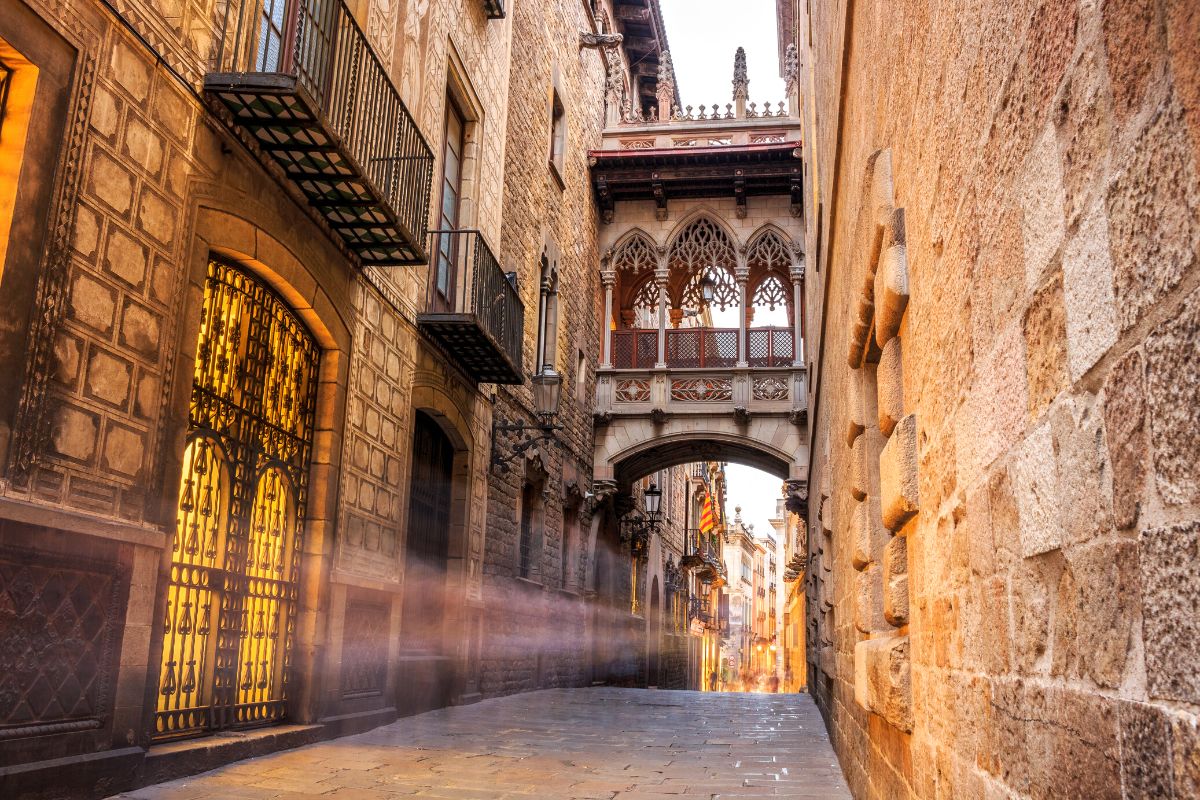
One of the main tourist attractions in Barcelona has to be a stroll through the Gothic Quarter, the cradle of the historic center of Old Barcelona.
Feel captivated by the alluring, centuries-old architecture, and dark facade, dating back to medieval times, meshing with modern times with the abundance of coffee shops, restaurants, high-end hotels, and street performers.
Take a walking tour of this emblematic corner of Barcelona, drenched in historical information to learn and appreciate the city more.
While strolling the pedestrian-friendly streets, make sure to stop by the iconic Barcelona Cathedral, Plaça del Rei, Cappella di Santa Agata, and the famous Museu Picasso, among a plethora of other things to do and see.
Just a 12-minute walk from Las Ramblas.
27 – Parque de atracciones Tibidabo
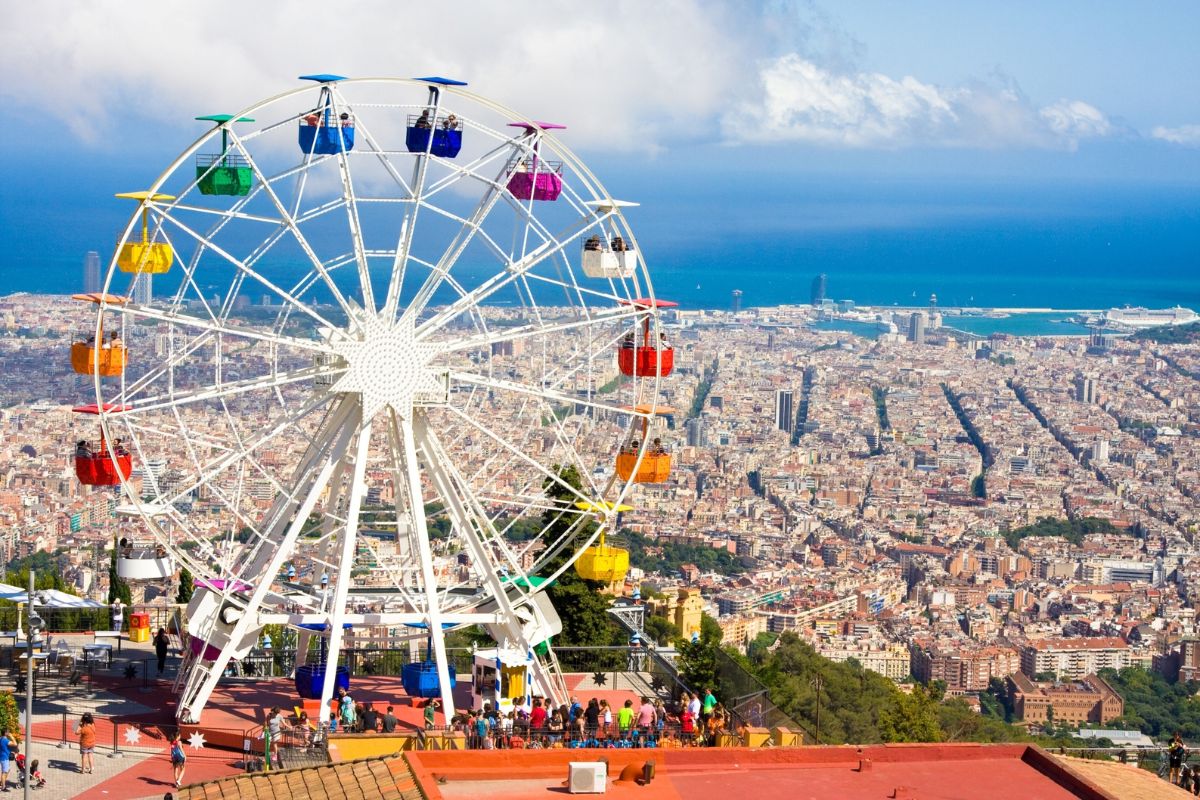
Make long-lasting memories at Tibidabo Amusement Park, located on the top of Tibidabo mountain, dating back to 1905. This museum is Europe’s third oldest amusement park and Spain’s overall oldest and continuously opened amusement park.
Those who seek adventure will feel the amplified rush of hopping on a roller coaster on the mountain, some 575 meters above sea level. Take note of the privileged views of the city, especially gorgeous during sunset hours.
Take the exciting funicular ride to the amusement park, and enjoy the 30+ activities and rides, or take a guided tour of the park grounds, learning interesting information about the beginnings of the park.
Tickets start at 35 euros for adults, including the funicular ride, and 14 euros for children.
28 – Gran Teatre del Liceu
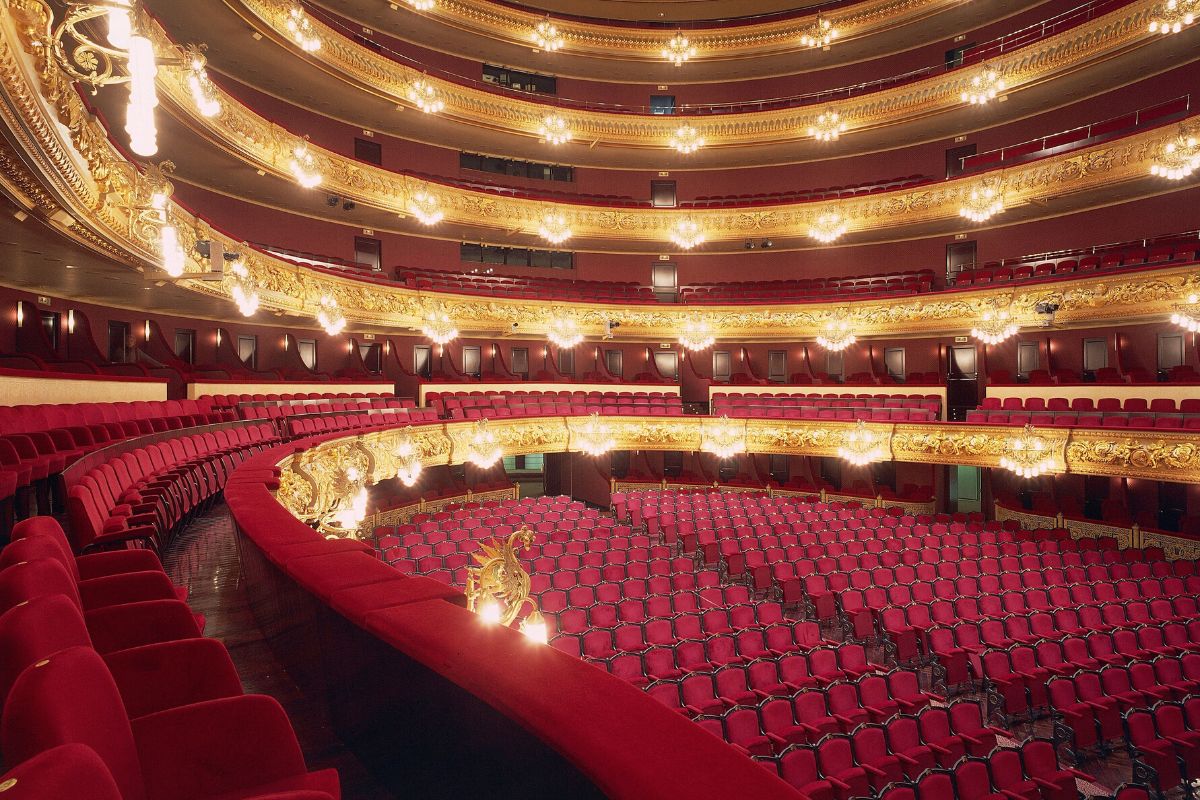
Situated in the heart of La Rambla, is the Gran Theater of Liceu, or just the Liceu, one of Europe’s leading and largest opera houses, with 5 tiers of seating, and with a capacity of 2,292 seats.
Typically, performances relating to ballet, opera, and symphonic concerts make up the majority of concerts at this art institution, so if that is something that is of interest, make sure to plan your travels to meet the main performance season, ranging from September-July.
Theater tours are also available, taking guests through the various important sections of the theater, sharing an in-depth history of the theater and its purpose in the high society of Barcelona.
Housed inside are paintings by the famed Spanish artist Ramon Casas.
29 – Montjuïc Castle
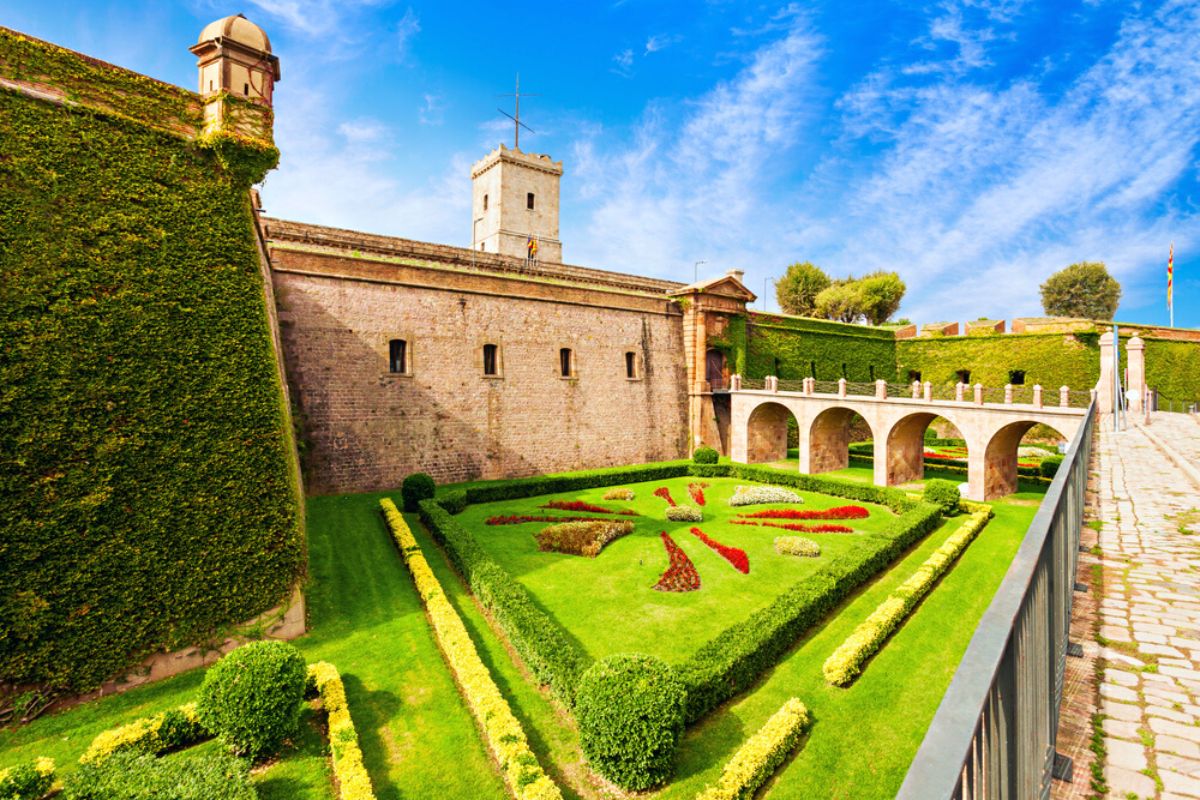
Sitting on the tops of Montjuïc mountain is Montjuïc Castle, the first fortress built in Barcelona, perched up around 173 meters above sea level, dating back to the 18th century.
Walk through the ornate entrance, checking out the defensive walls, the parade ground, surrounded by bed chambers, and other special rooms.
Visit the tallest part of the castle with arguably the best views of Barcelona at the terrace and watchtower, and get an outstanding view of the Port of Barcelona by checking out the sea-facing wall.
With countless more sights to see inside and around the castle, make sure to plan your trip early in the day to make the most of your time there.
Tickets start at 9 euros for adults, purchased online.
30 – Barcelona Botanical Garden

Located not too far from the Montjuïc Castle is the Barcelona Botanical Garden, attracting crowds of locals and visitors to see examples of various flora and fauna typical of the Mediterranean climate as well as the Canary Islands.
Visit and learn about the role that nature plays in everyday life, efforts to try to conserve the planet, and of course, the stunning natural beauty of colorful plants, flowers, and trees.
With an overall size of 14 hectares, take a tour, and really learn from the professional botanists all there is to know about the importance of some of the specialized plants while learning about the exciting future plans of the garden spaces.
Tickets are priced at 5 euros, with free admission on Sundays after 3 pm.
31 – Gaudi Crypt
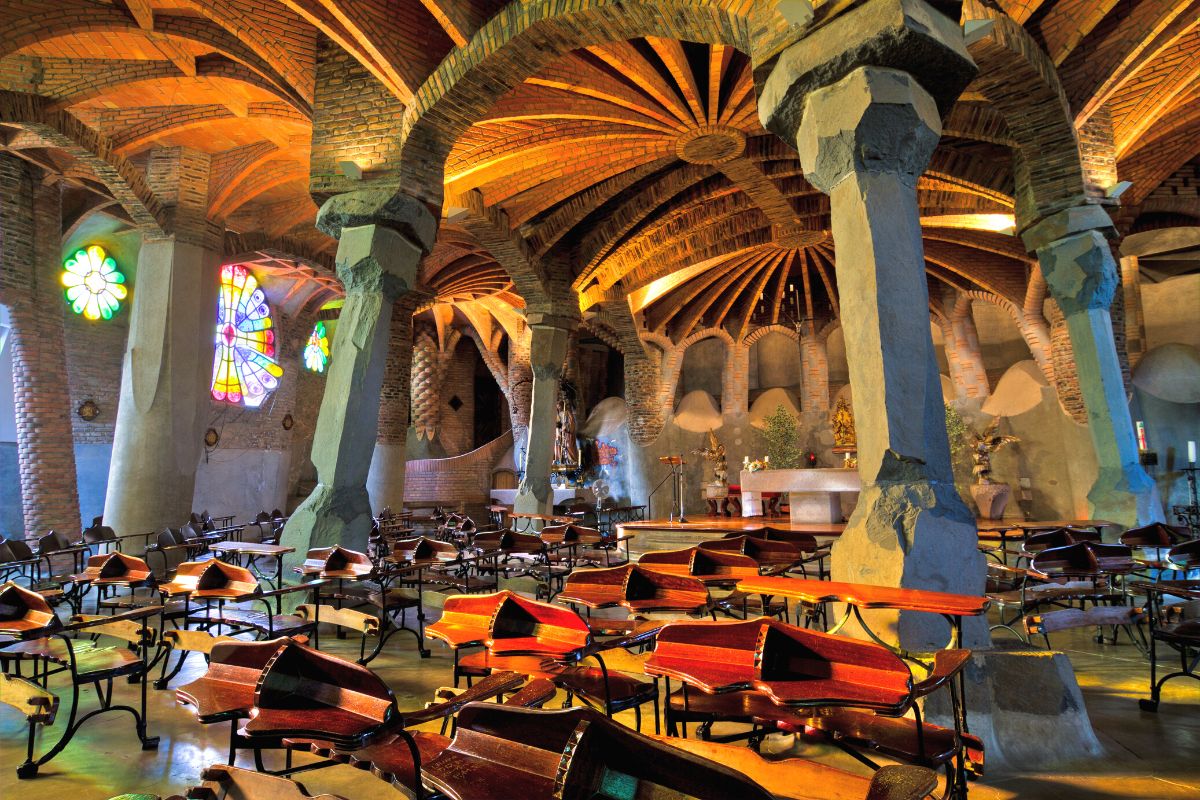
Considered to be one of Gaudí’s most important pieces of architectural work is the Gaudí Crypt, originally intended to be a church, dating back to 1898.
The Gaudí Crypt, which is located in the working class neighborhood of Colonia Güell, is located west of the city center of Barcelona.
Visitors can check out the fascinating architecture of the crypt, much of which is also seen in the construction of the Sagrada Familia. Notice the stone and rugged look of the crypt as it forms part of the hill.
View the irregular pillars, magnificent stained glass windows, and the imagery of crosses all through the crypt.
Tickets to visit start at 8,50 euros for adults with an audio guide, and Gaudi Crypt is open from May to October.
32 – Parc del Laberint d’Horta
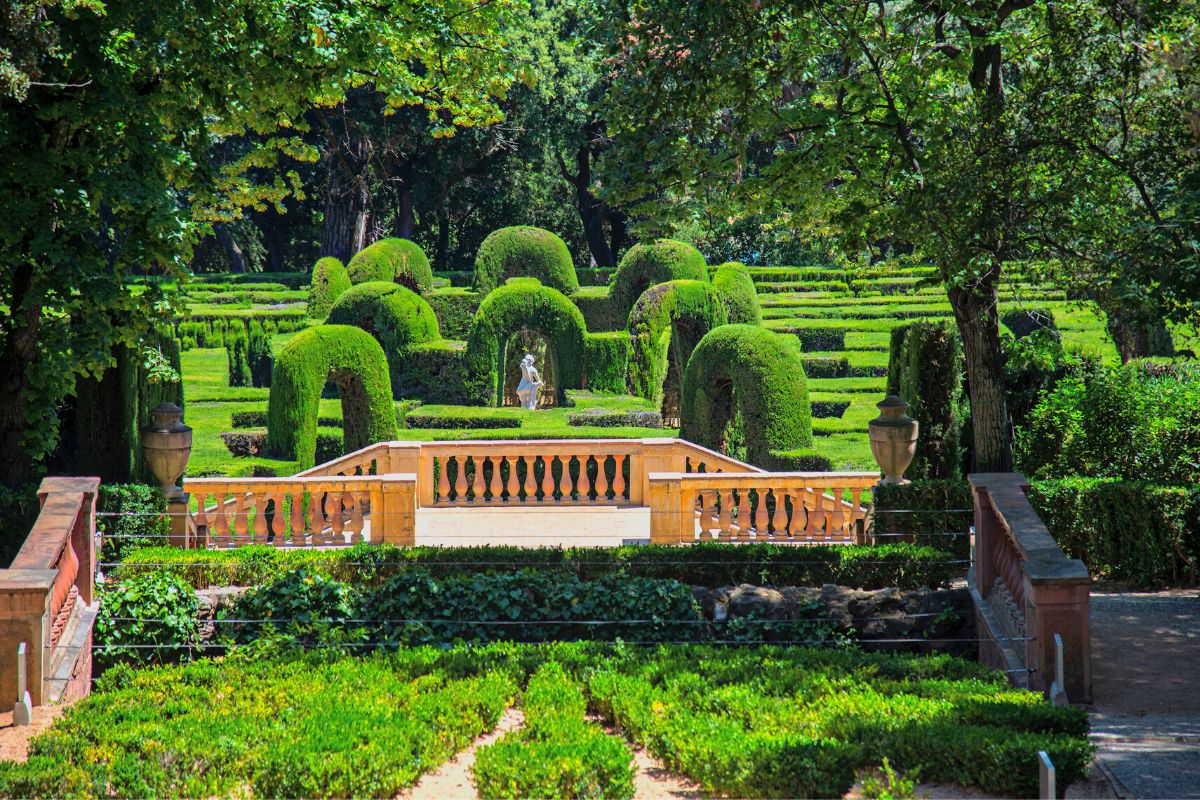
Stroll through the romantic gardens of the Pac del Laberint d’Horta, located north of the city center of Barcelona, known as the oldest park in Barcelona.
Enjoy the almost 55 hectares of gardens, trees, shrubs, and a labyrinth of cypress trees, where at the turn of every corner, statues describing mythological creatures stand tall in their grandeur.
Enjoy the quaint ponds, fountains, waterfalls, colorful gardens, and lush forestry inside the neo-Classical style garden, which had its origins in 1792. Stumble across temples dedicated to some of the mythological Gods and terraces with exquisite views.
While strolling, check out the adorable Torre Soberana, located within the park, which was built in the 14th century, as well as the Moorish-style castle with beautiful geometric-style architecture design.
33 – Museu d’Història de Catalunya

Get a deep dive into the history of the region of Catalonia, inside the History Museum of Catalonia.
Make rounds through the exhibits, placed in chronological order, dating all the way back to the times of cavemen, to the Romans, the Iberians, and today.
Additionally, this is a great place to check out to learn more about the recent struggles Catalonians have faced to preserve their heritage after the oppressions they have suffered at the hands of certain rulers.
The terrace of the museum is a place not to miss, for incredible sweeping views of the Old Port, as well as the IMAX cinema and aquarium located inside.
The museum is located in the Old Port district, making it an unmissable Barcelona attraction.
34 – PortAventura
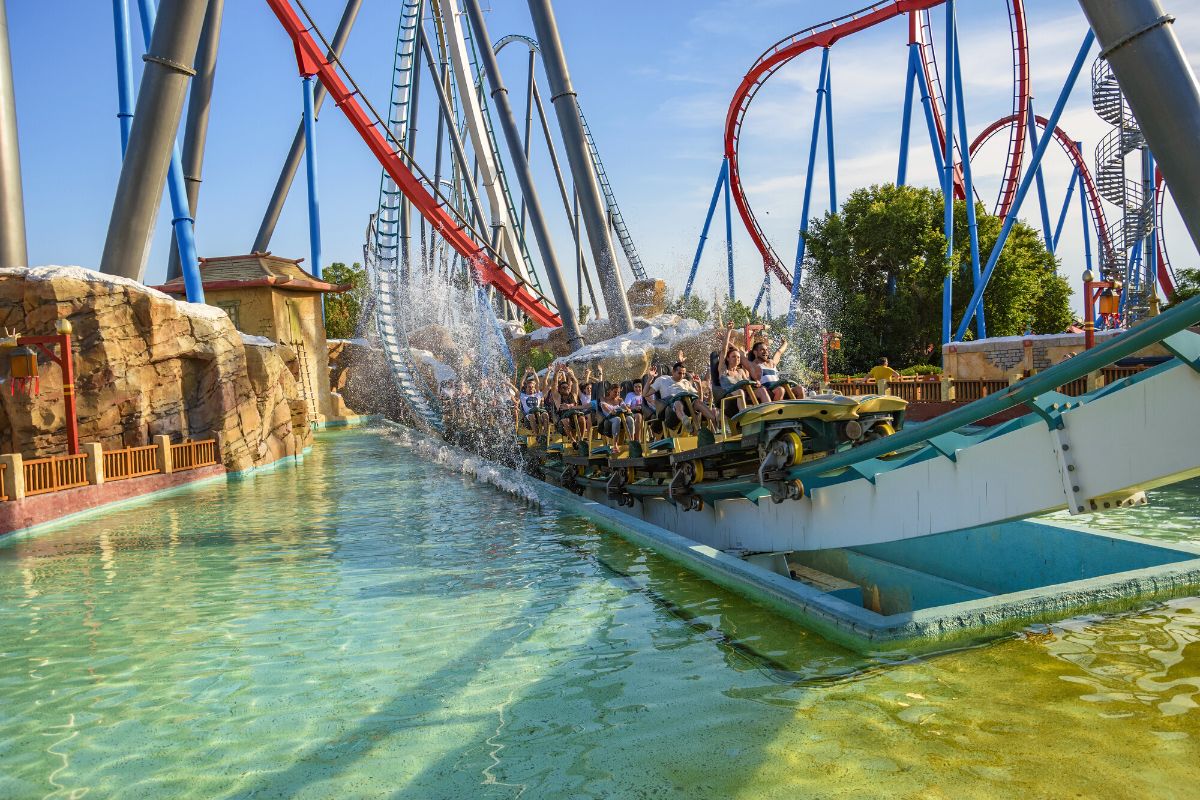
Another great amusement park option for mechanical game lovers is PortAventura, located 1 hour from Barcelona, in Tarragona.
Overflowing with fun, enjoy the over 15 different attractions and games inside the park, including one of the most popular rides, a hyper coaster, and one of the fastest and tallest rollercoasters in the park.
Other than amusement park games, friends and families can also have fun attending one of the park shows, from the PortAventura parade to the FiestAventura spectacle, each offering an unforgettable evening of fun, laughter, and joy amongst other amusement park guests.
Make it a weekend-long escape, and consider staying in one of their 5 different hotels located in the park, enjoying the 3 golf courses, the beach, and a superb water park.
35 – Temple of the Sacred Heart of Jesus
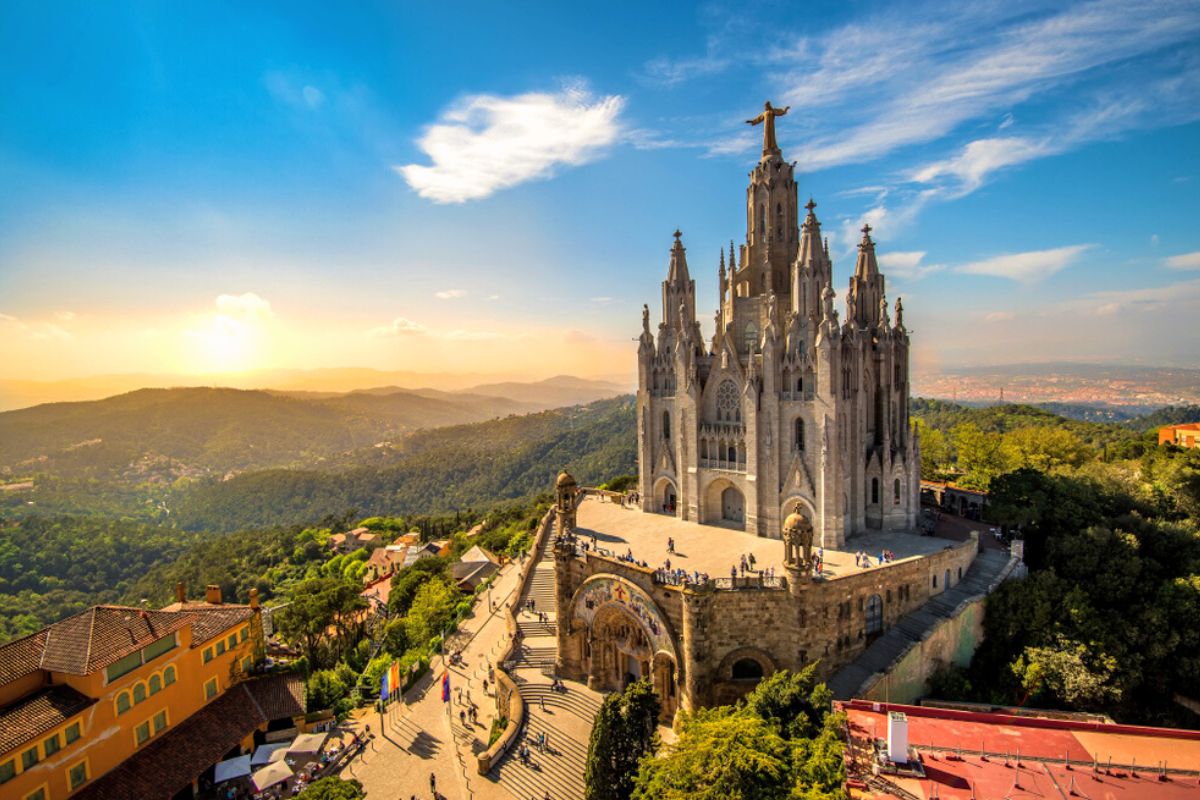
Sitting on top of Mount Tibidabo is the beautiful Temple of the Sacred Heart of Jesus, boasting unbeatable views of Barcelona and, even on an extremely clear day, views of the Balearic Islands.
Built between 1902-1961, the temple has visible differences in architectural style and even color of the material, using a mix of stones from the mountain, and later on stones from Girona of a slightly different color.
Walk inside the church, and notice the inscribed details of the life of Christ inside, all of the religious symbolism, glorious stained glass windows, and on the outside, the giant golden statue of Jesus.
Take the elevator inside, and then climb the rest of the way up to a circular balcony for the highly coveted views.
36 – Turó de la Rovira
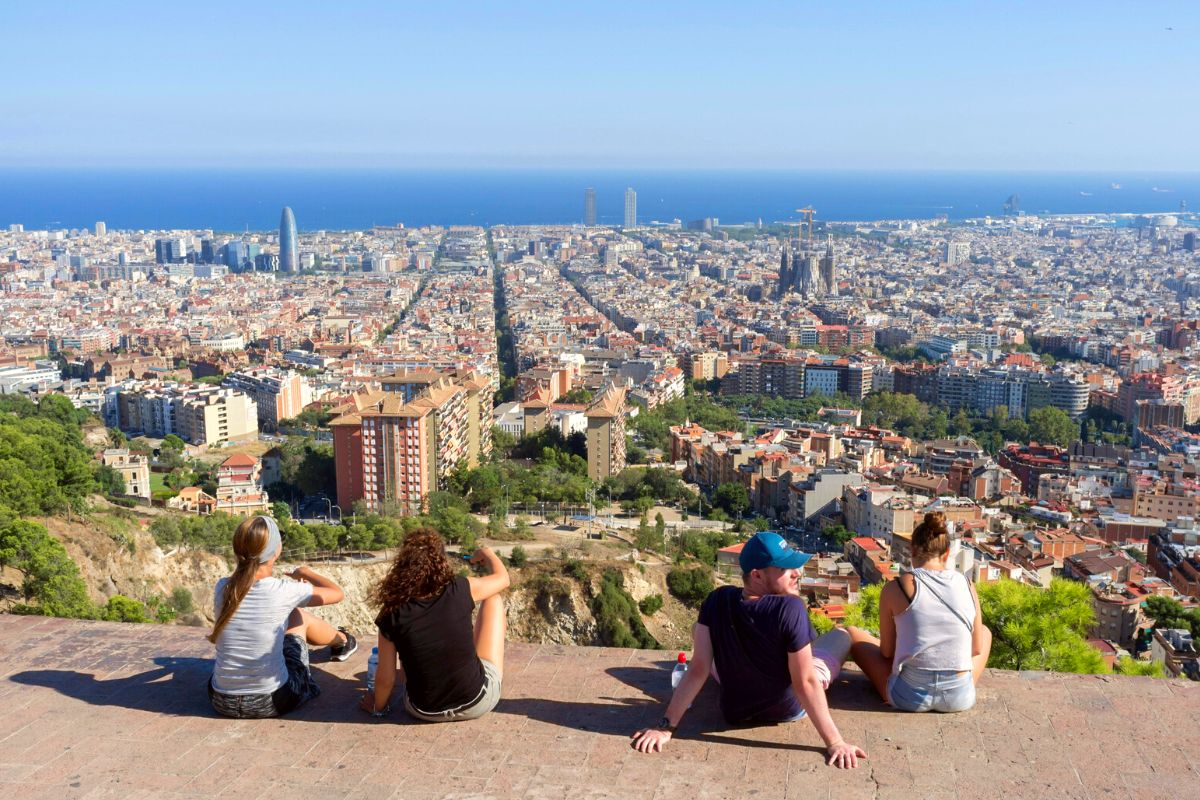
Barcelona is full of outstanding viewpoints from various parts of the city, and one more to add to your list of fun things to do in Barcelona is paying a visit to Turó de la Rovira.
The Turó de la Rovira (known as Bunkers del Carmel) was established to protect the city from bombs during the Spanish Civil War. Today, locals flock to this beautiful site to contemplate views of their city and the sea in the distance.
Visitors can make the trek up to the Horta-Guinardó district, a 23-minute drive north of Barcelona city center. Make sure to bring your own refreshments though, as you won’t find many vendors when reaching the top.
The Turó de la Rovira is free to enter.
37 – La Barceloneta
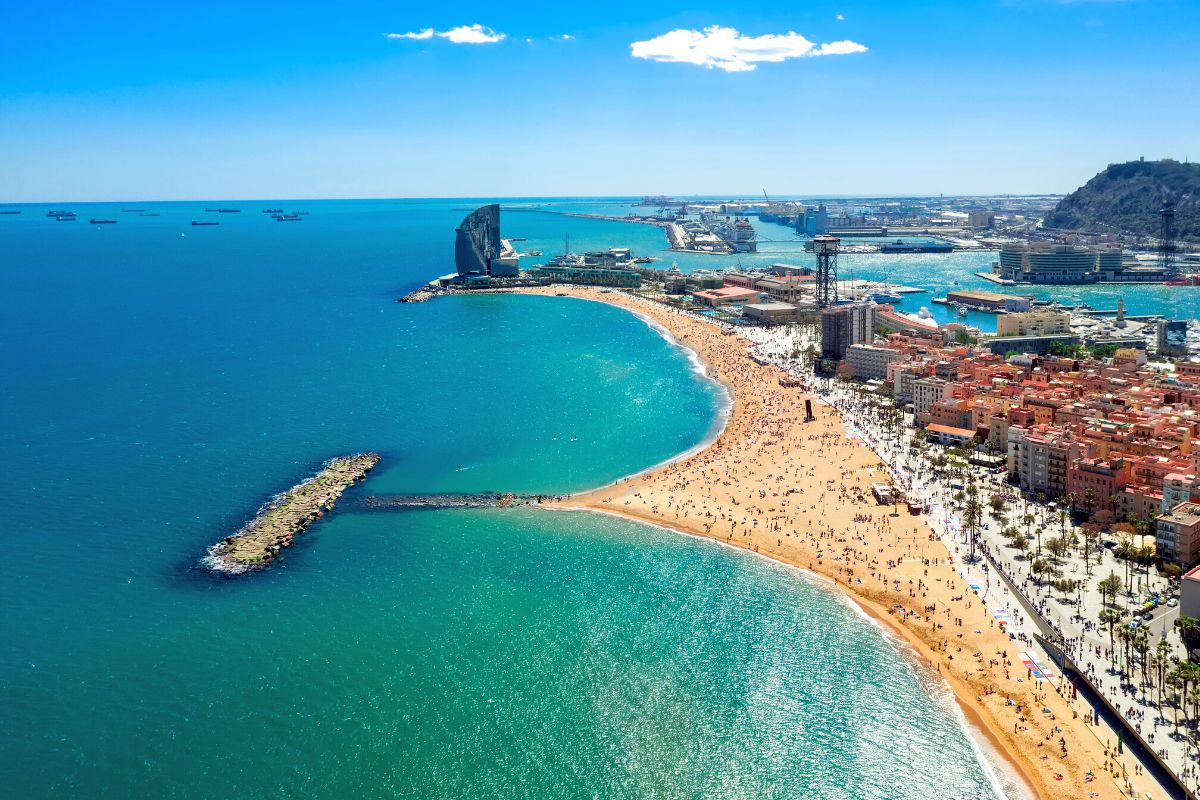
Check out the historic neighborhood situated beside the Mediterranean Sea, La Barceloneta.
Unique in its appearance, the seaside neighborhood is a place worth exploring and paying attention to the facade of the buildings, looking a bit darker than the rest of Barcelona, due to the salt content in the air.
The neighborhood is a great place for nightlife, especially as it’s steps away from the Mediterranean Sea, which always brings out the most passionate vibes in Barcelona.
Take advantage of the splendid Mediterranean waters on the beaches of La Barceloneta, the city’s main public beaches, always promoting fun, lively parties, and a good time to sit and unwind.
Take a snack to La Barceloneta, and watch as the sunset begins to turn into night.
38 – Museum of Natural Sciences of Barcelona
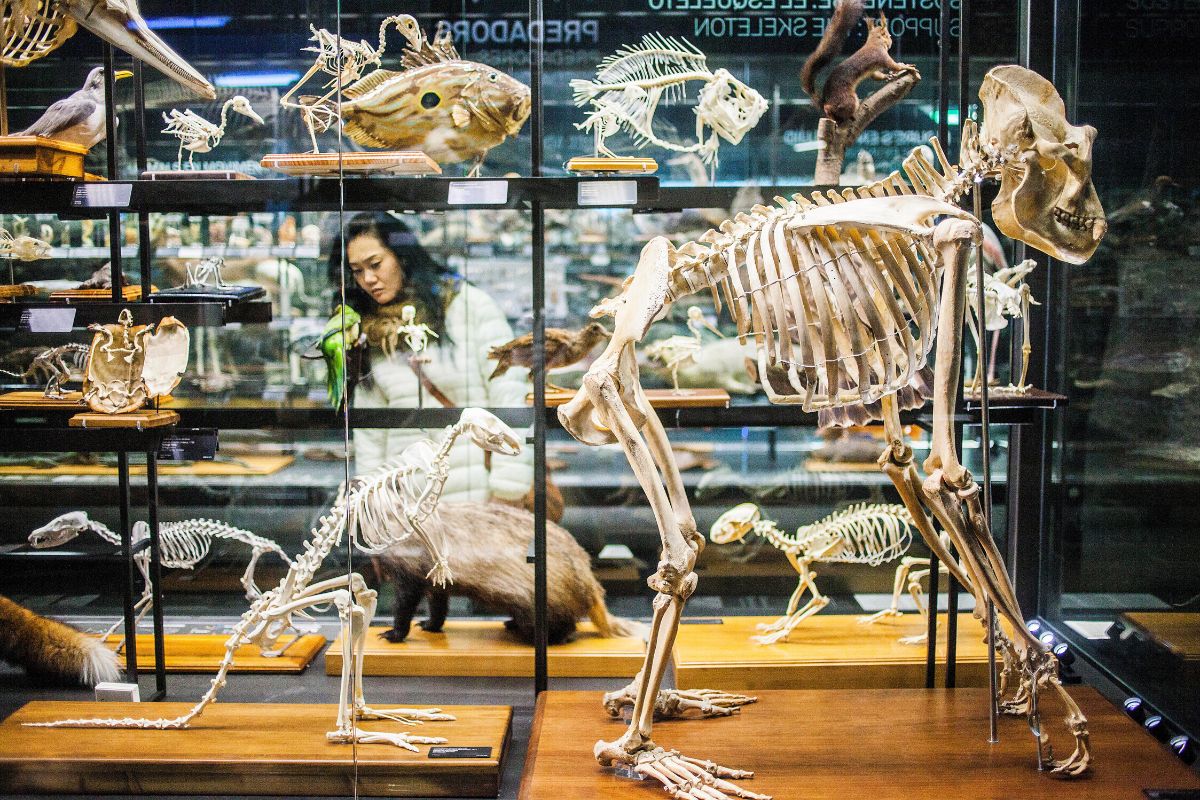
Known as the Museu Bleu (Blue Museum), it is the Museum of Natural Sciences of Barcelona, situated within the Diagonal Mar district.
The museum is dedicated to ensuring an informative and entertaining time learning about the evolution of the earth, from its many species, including wildlife, humans, plants, minerals, and more.
Using technology to create an ambiance of full immersion, travel back, and go through a chronological span through time and space, viewing the different stages of life development on earth, especially in Catalonia.
Arrive to modern times, and learn about current climate issues the world is facing, creating pondering perspectives and ideas to help save our planet.
Tickets start at 2,70 euros and an additional price to view special exhibits.
39 – Estrella Damm Brewery
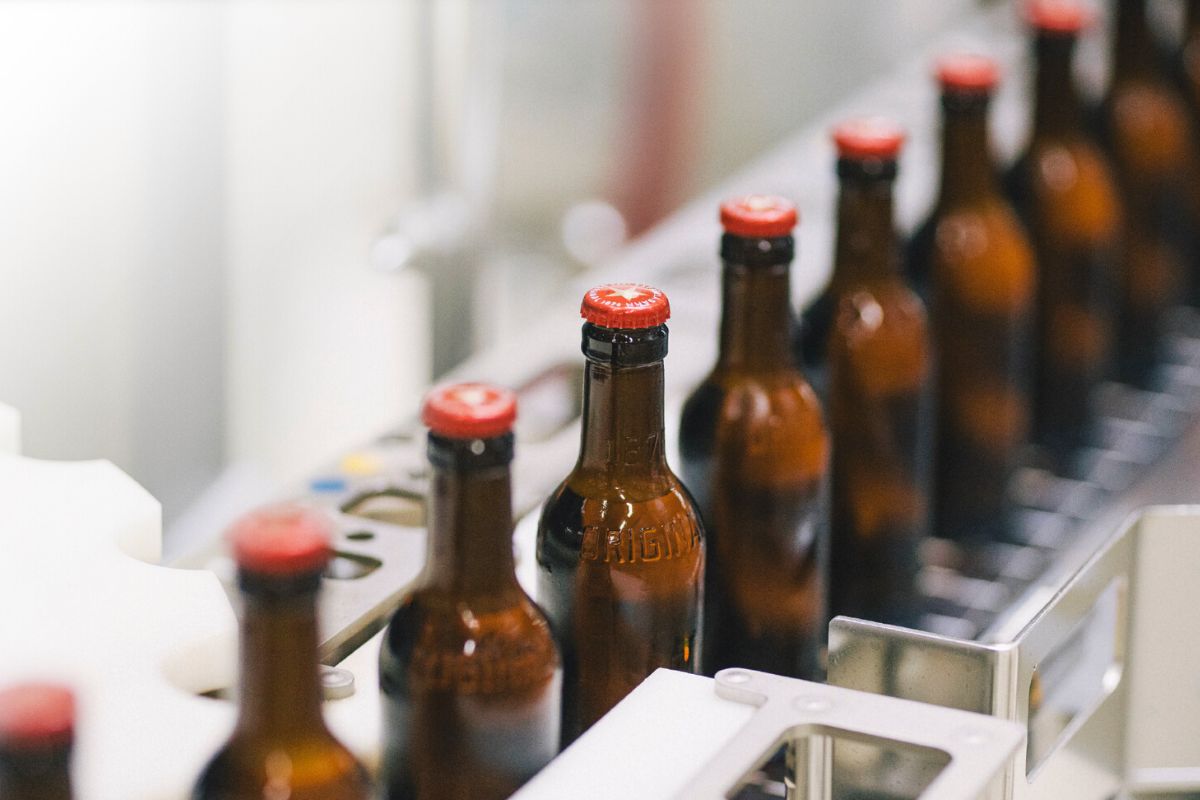
Gather your friends for an informative tour and a great time inside the Estrella Damm Brewery, learning about the crafting process of making one of the most notable beers near the Mediterranean.
Concocting beer brews the same way since 1876, take a tour to get a tasting of the variety of beers that form part of the Damm Brewery, such as Estrella, a beloved lager beer in Spain, as you walk through the Kettle Room, the Power Generator Room.
Take in the historical archives, and learn about the stories that have made history with the brews.
Visitors can make reservations at either the Old Brewery, or the El Prat Brewery, both offering tours in English, Spanish, and Catalan, located a few blocks away from the Sagrada Familia.
40 – Museo de Cera de Barcelona (Wax Museum)

Snap a photo of yourself with your favorite celebrity or historical figure – their wax figure anyways, inside the Wax Museum of Barcelona. Walk through the halls of the 150 different wax figures wearing real clothing, requiring a few double takes.
The museum houses figures of the Royal Spanish Family, famous TV series characters, and historical figures within 28 sets spread out through the museum.
Have a coffee or drink inside the whimsical Bosc de Les Fades cafe, located towards the end of the wax museum, to seal your experience with a golden touch. Reserve a voucher online and pick between two drink packages that will serve you a set amount of drinks and snacks.
The basic entrance into the wax museum starts at 20 euros.
41 – Illa Fantasia
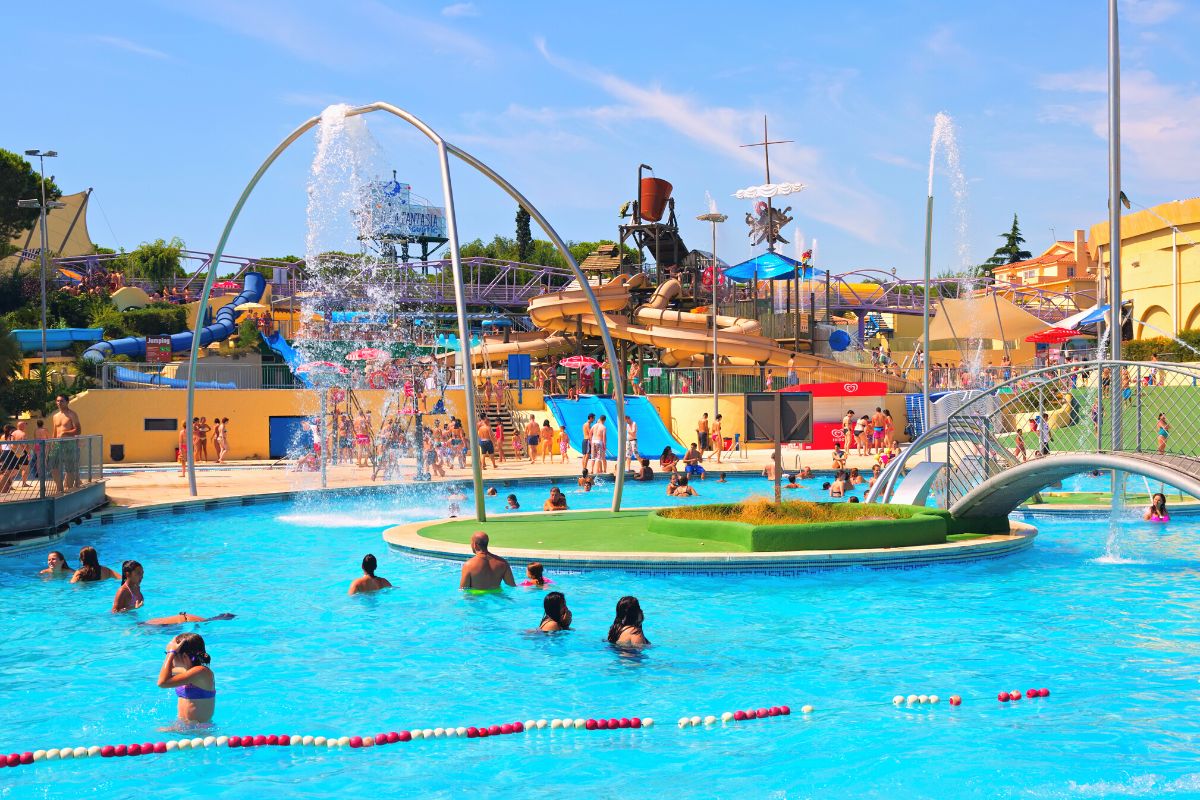
Located 30 minutes away from Barcelona city center is Illa Fantasia, a fun water park guaranteed to make the kids in your travel group squeal with joy.
Enjoy a refreshing dip in the pool, or take your adventures to the next level on one of the many water rides and games, ranging from topsy turvy water slides, tall spiral slides catapulting you into the water, artificial waves and currents to longboard on, and even a water maze.
Children and adults will love decompressing, and truly making great memories at the water park, open from June-September, from 10 am – 6 pm.
For access to the park for the full day, adult tickets start at 29 euros, and children’s tickets start at 17 euros.
42 – Casa les Punxes
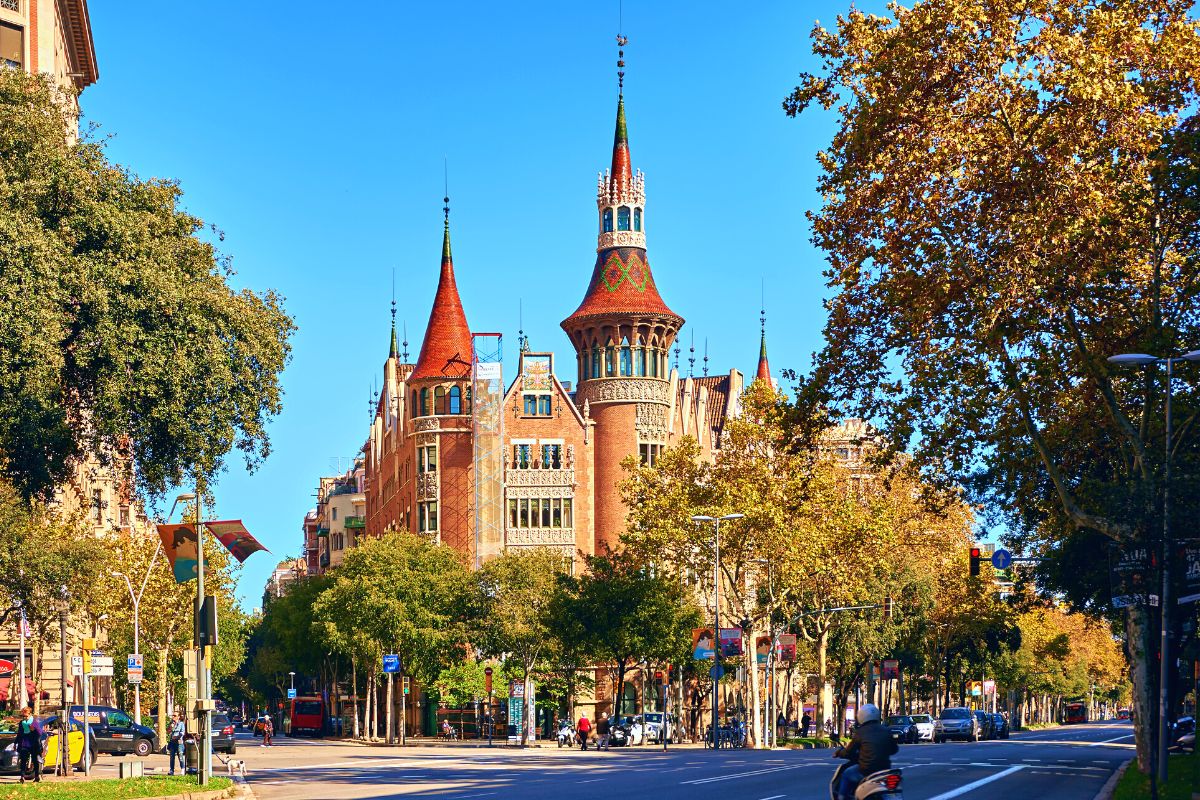
Gaze at the fascinating architectural design of the Casa les Punxes, located 16 minutes driving north of the Gothic Quarter designed by architect Josep Puig i Cadafalch in 1905.
Inspired by the Neuschwanstein Castle, a medieval castle in Bavaria, the building shows a variety of different materials and styles used from stained glass windows, ceramics, iron, and a variety of sculptures.
Tours are available to go inside, and explore the interiors, learn about the history of the building with the innovative floor-to-ceiling projections, as well as observe the interior decor.
Plan to spend around 1.5 hours exploring the various corners of the building, with the option of an audio guide. The tours culminate on the building’s roof, offering vast views of the surrounding city.
43 – Basílica de Santa Maria del Pi
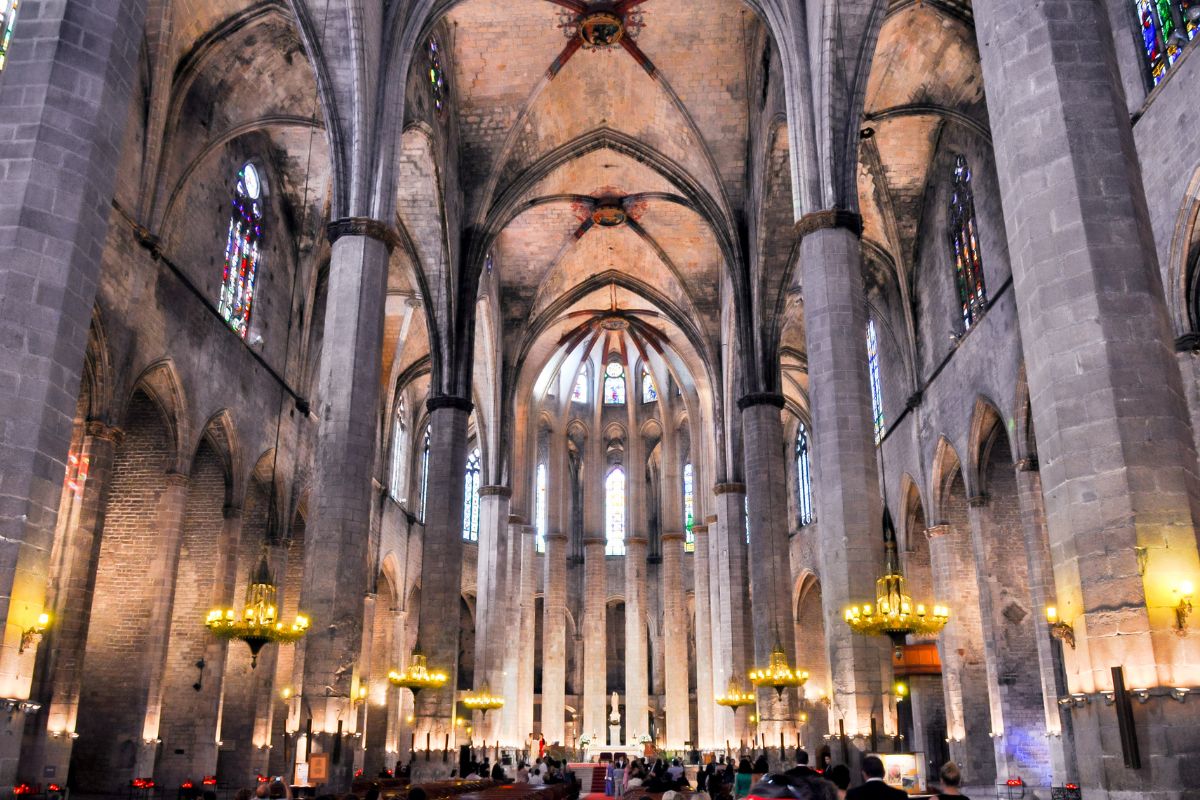
Within the iconic Gothic Quarter is the Basílica de Santa Maria del Pi, a 15th-century church.
Take in the dark facade, and the resounding bells, one of which used to be the biggest in the country. Enter inside the church and observe the tall cross-vaulted ceiling, the light coming in through the stained glass windows, and a gothic image of the Virgin of the Pines.
Enter the museum, and look at some of the church relics, as well as silverware and goldware found inside, or climb up to the top of the church tower to get a birds-eye view of the Gothic Quarter.
Revisit the church when they host one of their many Spanish guitar concerts, for 19 euros. Check their calendar to see the dates.
44 – Maritime Museum
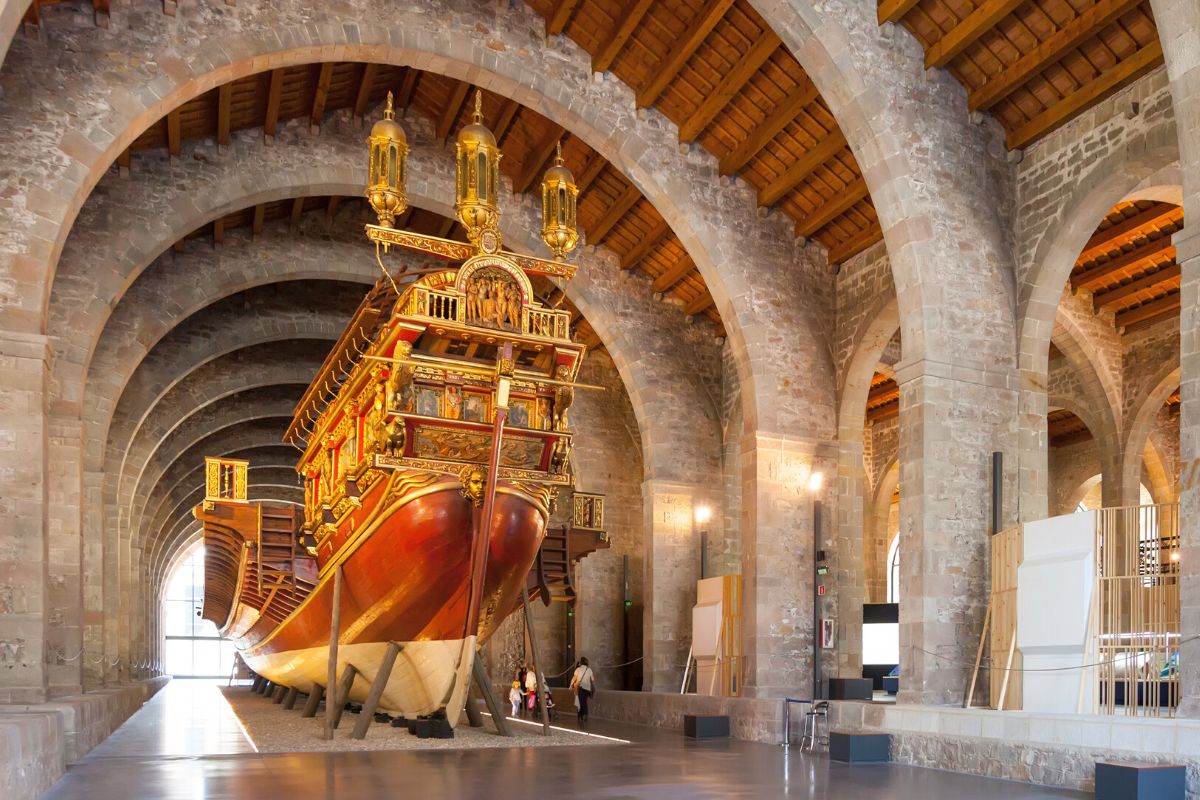
Learn about the Maritime history and culture that took place in Barcelona’s Old Port, and go beyond the Mediterranean’s maritime history.
Inside the museum, find exhibits showing old photography of the port, ship archives sharing the shipbuilding industry in Catalonia, Barcelona’s Royal shipyards, and a retelling of medieval ships, and other vessels and their fascinating stories.
The intent of the museum is to share with the public the history and connection between the sea, Catalonia, and the people to create knowledge and education. A way to do that is with the accessibility to interactive activities, inviting visitors to travel back in time.
The museum is located a few blocks away from the Wax Museum, in the heart of Barcelona’s city center.
Tickets start at 10 euros.
45 – Jewish Quarter
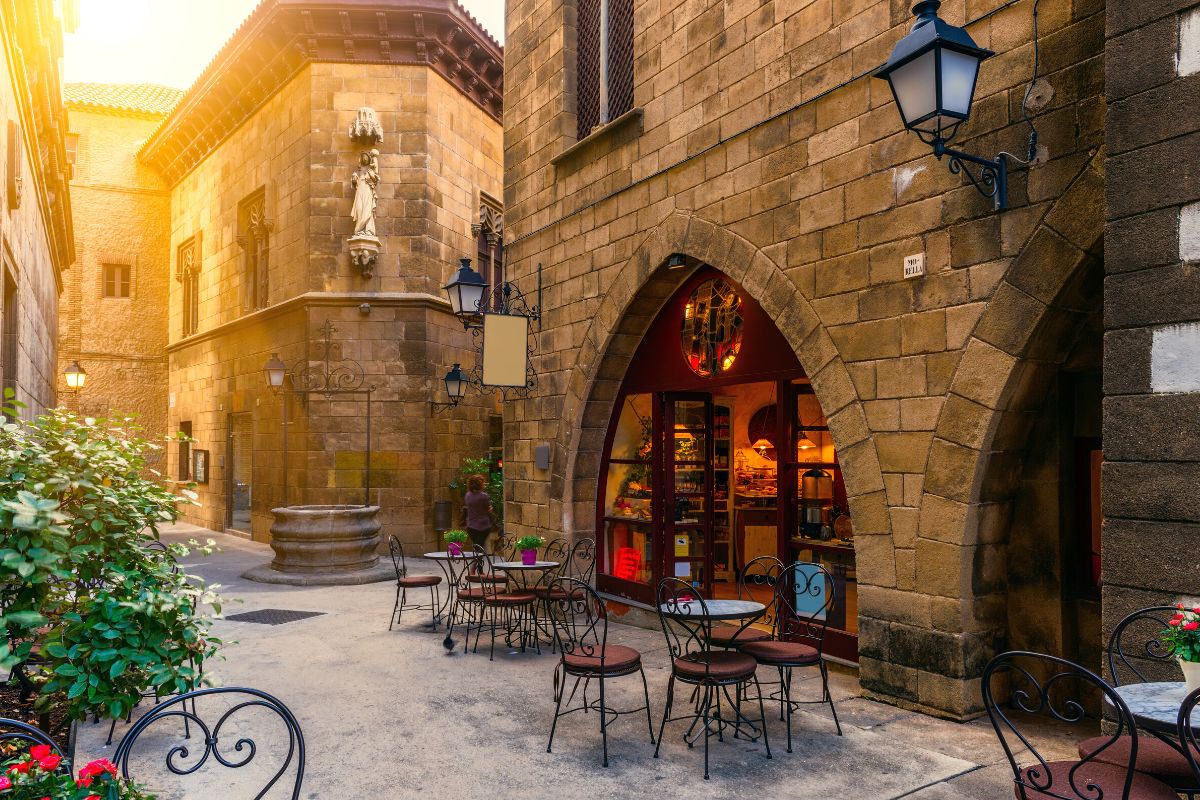
Also known as “El Call” meaning community in Hebrew, the Jewish Quarter is located in the heart of the Gothic Quarter.
Take a guided tour of the historic narrow streets, and learn about the dark past that the Jewish community of Barcelona endured, settling in the city as far back as the first century A.D.
Walk past one of the oldest Synagogues in Europe, Shlomo Ben Adret Synagogue, housing a museum inside, to learn about its restoration back into a synagogue after being converted into a Christian church during the Spanish Inquisition.
Visit the Jewish History Museum, to get an all-encompassing explanation of the history of the neighborhood, or simply take a closer look when walking the streets of the quarter, noticing the inscribed Hebrew words.
46 – Caribe Aquatic Park

Located 1 hour away from Barcelona in Tarragona is the Caribe Aquatic Park, the perfect place to take your children to refresh after a few days of sightseeing.
Indulge in the more than 14 aquatic rides and games, from free falling waterfalls, leisure pools, and fun water slides, as well as refreshing gardens to cool off in.
Step inside the Caribbean-inspired sections of the park, each taking inspiration from The Bahamas, and other aquatic sections called Barracudas and Cayo Cookie, with unique games waiting for your kids to discover.
Enjoy dining in the park a choice of different restaurants, and stick around for the entertainment shows that will make core memories for the kids.
47 – CaixaForum Barcelona
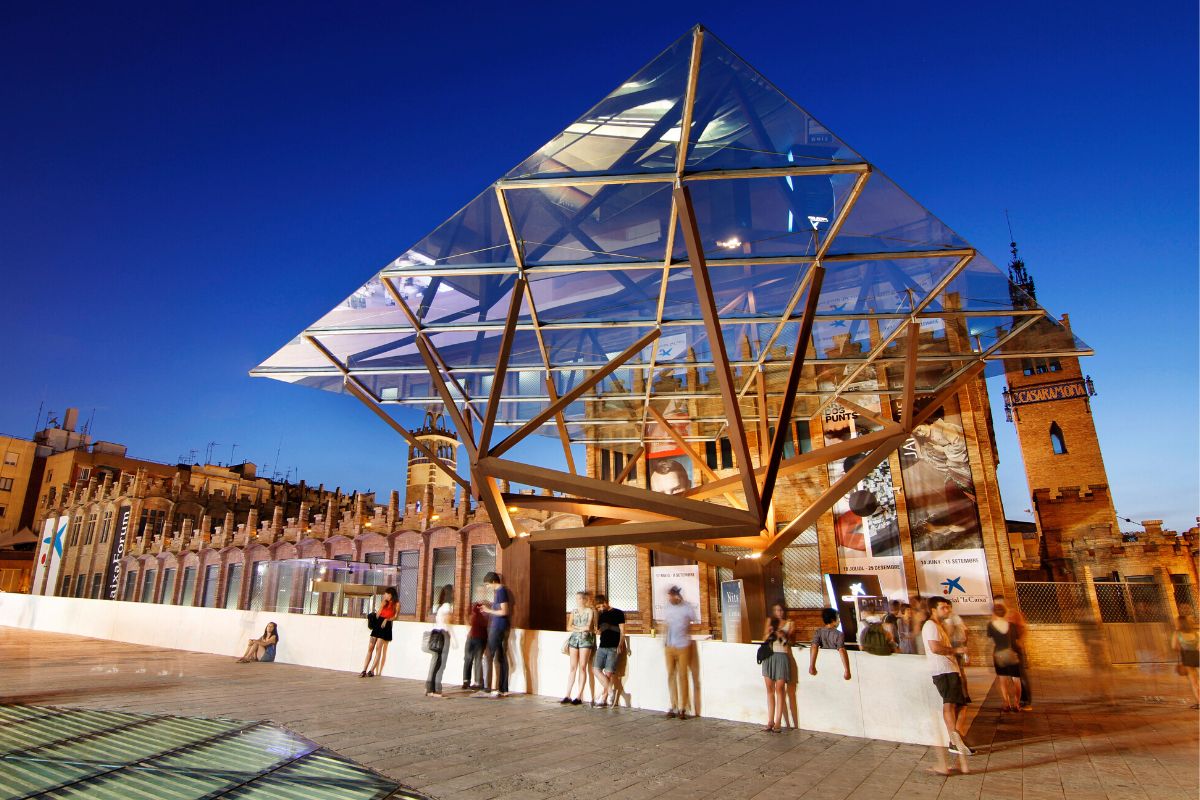
Explore the contemporary art scene inside the CaixaForum Barcelona arts complex, housed in what used to be a clothing factory.
Boasting a facade in the Catalan Art Nouveau style of Modernism, and taking inspiration from great castles, the art forum impresses both locals and visitors as they pass the steel and glass tree, to enter the art space.
Browse through the different exhibits, from a tattoo exhibit to an exhibit about symmetry, to film screenings, art workshops, and concerts. It’s a great place to socialize, discuss art, or go solo and enjoy yourself.
Check out the permanent exhibit “Symphony” taking visitors on a virtual and immersive journey through music at the hands of some of Spain’s greatest symphony conductors.
Ticket prices are based on activity.
48 – Barcelona Erotic Museum
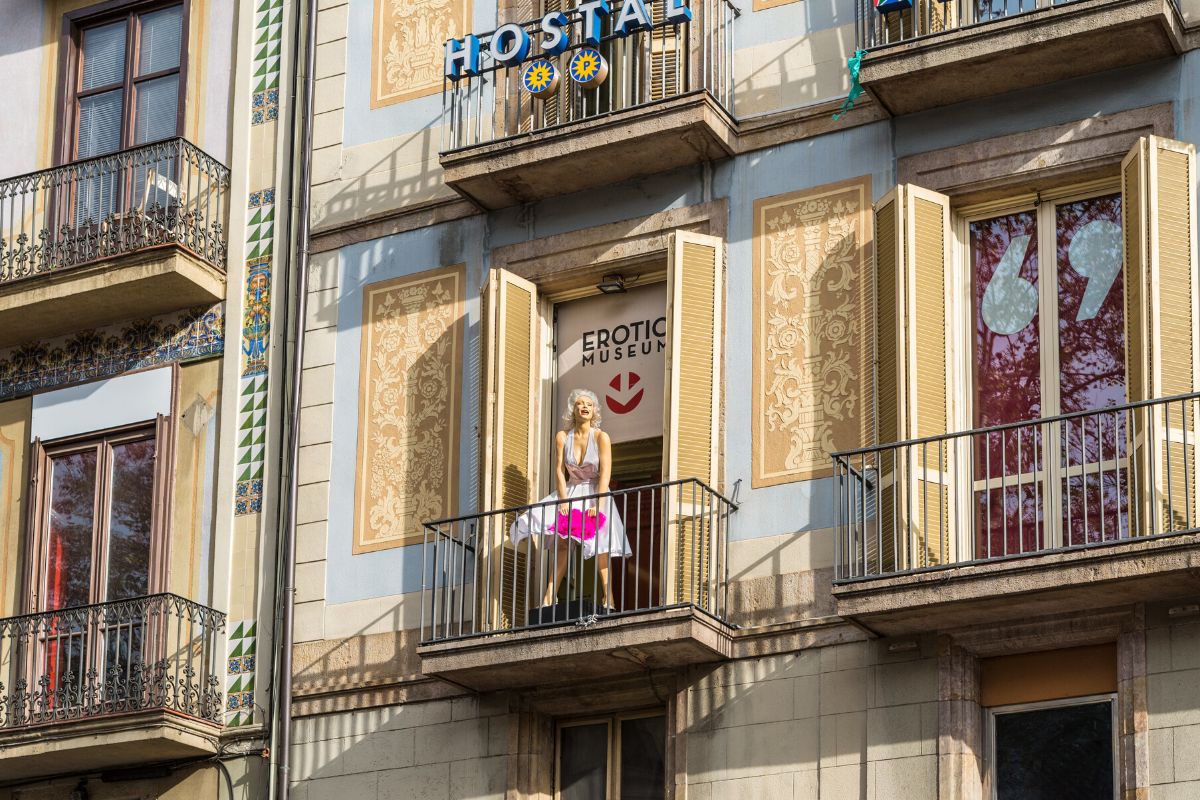
Similar to and connected to the Erotic Museum of Amsterdam, the Barcelona Erotic Museum is the first of its kind, and the only one in Spain, worth a visit to explore the different art, imagery, and concepts of sex and eroticism throughout time, in different eras of human existence.
Walk through the various exhibits throughout the expansive museum and courtyard with an exotic garden in the middle. Explore the rotating exhibits showcasing art, sculptures, prints, and designs that span various cultures outside of Spain, from the Hindu Kama Sutra and the sensual artwork of Japan.
Move slowly through the displays, sharing fascinating facts, and even innovations not commonly known about.
Situated in front of La Rambla, the heart of Barcelona, the museum is extremely easy to get to.
49 – Santa Caterina Market

Spend some time leisurely walking the food stalls of the Santa Caterina Market, named after the convent that once stood in its place.
Since its grand opening in 1845, Santa Caterina Market has been a supplier of food for the neighborhood, especially during the Spanish Civil War.
Take note of the interesting architecture, meant to stand out due to its wavy, colorful roof, with a constellation of colorful mosaic pieces, said to be representative of the products sold inside.
Immerse yourself in the buzz of local market life, and purchase a snack or two. Inside, check out the multiple eateries if you have extra time to stay for lunch. The historical market is located a few blocks from the Barcelona Cathedral.
50 – Torre Bellesguard
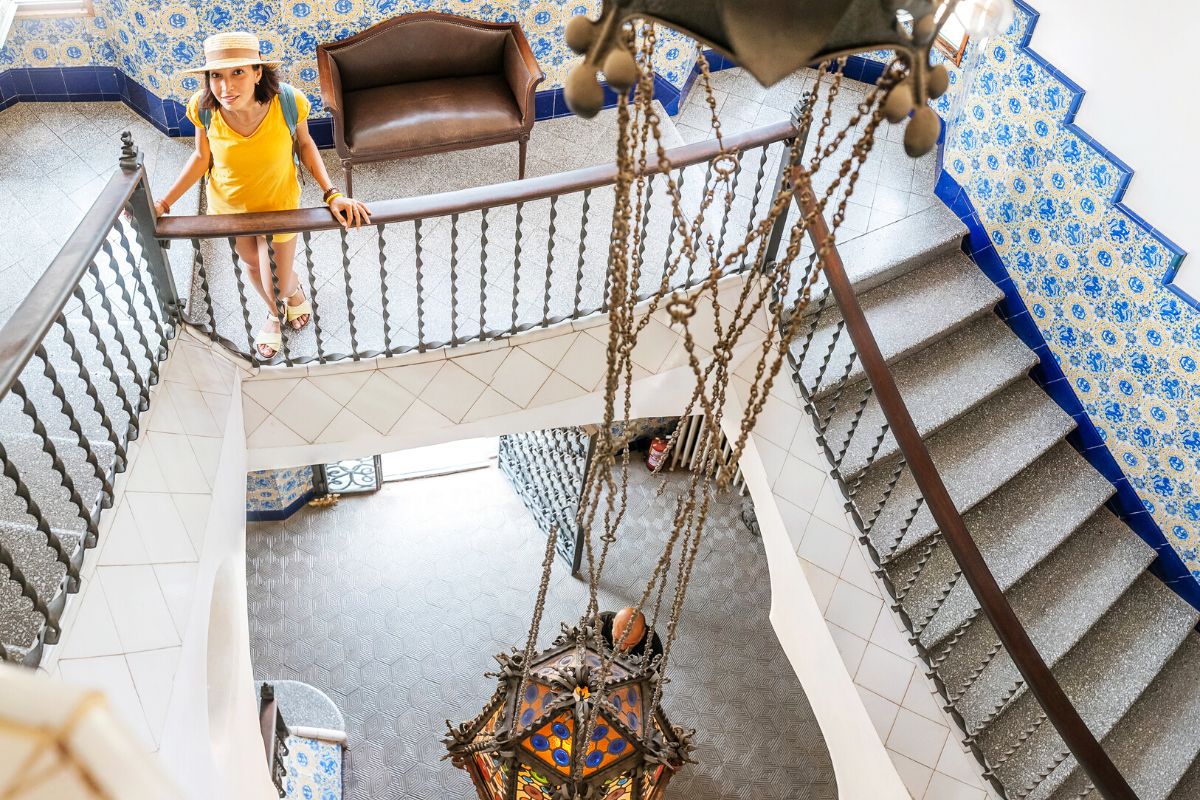
Get an architectural tour into the history of another one of Gaudí’s magnificent pieces of art, the Torre Bellesguard, also known as the Casa Figueres, a house with a tall tower located north of the city center of Barcelona.
Take a guided tour with a knowledgeable tour guide, offering their unmatched research, stories, anecdotes, and interesting legends of this place, offered in either English, Spanish, or Catalan, starting at 16 euros.
Overflowing with fascinating decor on the inside, very much matching the exterior stylings of Gaudí, you’ll want to take your time learning the stories behind everything.
Take a look at the tower with a four-armed cross, various mosaics going up the tower, and various other religious symbols.
51 – CosmoCaixa Barcelona

CosmoCaixa Barcelona is an interactive, fully immersive, and complete science museum, unlike anywhere else, that not only re-teaches those lessons we struggled with in school but also entertains beyond belief, both adults and children.
Walk down the beautiful spiral staircase, taking guests to the basement of the 5 floors, all sharing interactive activities and real-life examples of topics in geology, physics, meteorology, chemistry, technology, math, and more.
See how the pendulum swing indicates the earth’s rotation, create a tornado with your hands while learning how nature creates them, or get educated on how certain math equations apply to everyday life.
Located in the heart of the city, tickets start at 4 euros, and children under 16 years of age enter for free.
52 – Design Museum of Barcelona
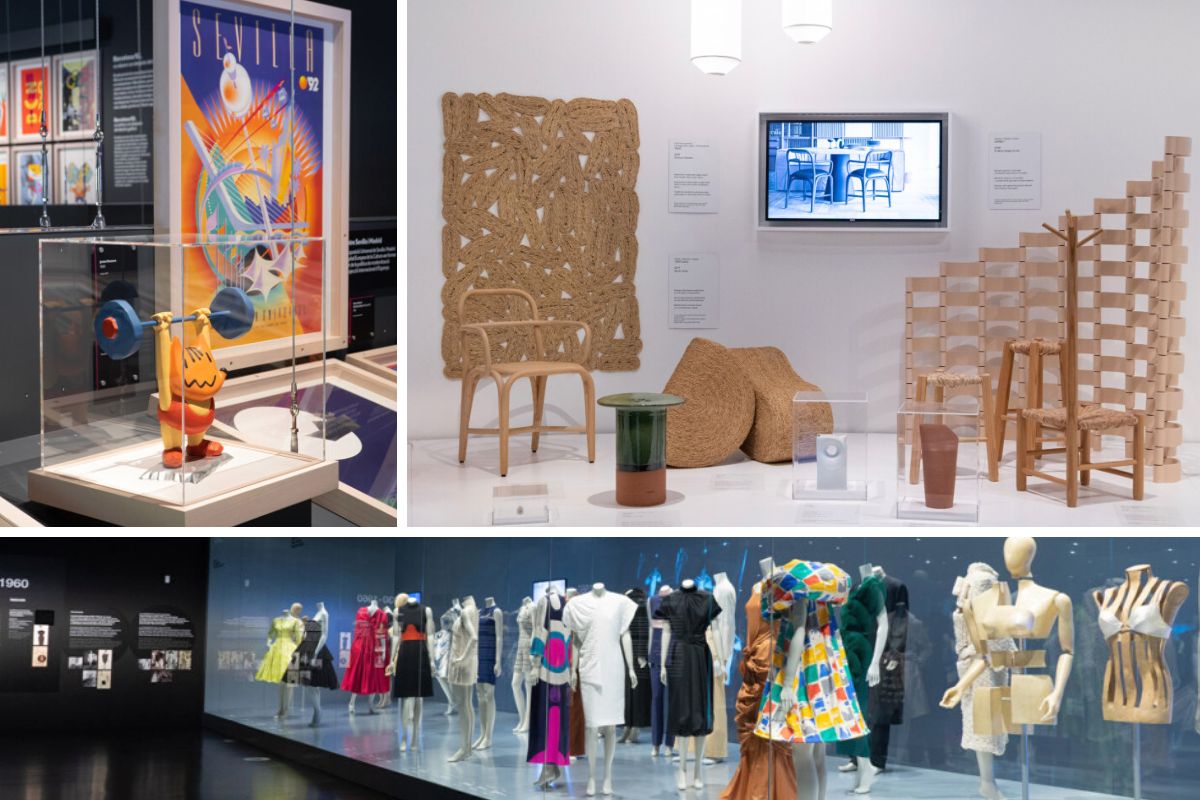
Combining other applied arts museums in the disciplines of graphic arts, ceramics, and textiles, the Design Museum of Barcelona was created to house these areas of art, and more, including fashion, advertising, and other forms of contemporary art.
Explore the 4 levels of the museum, each focusing on an area of art, sharing examples of Catalan designs, poster prints, the art of fashion design throughout the times, and learning about the artists that created waves in their art expertise.
Built in a way to follow chronologically, visitors will be taken all the way to the Renaissance, and go forwards through time, learning about the progression of art and design in Catalonia and Spain.
The museum is located in the heart of the city center of Barcelona.
53 – Monastery Món Sant Benet
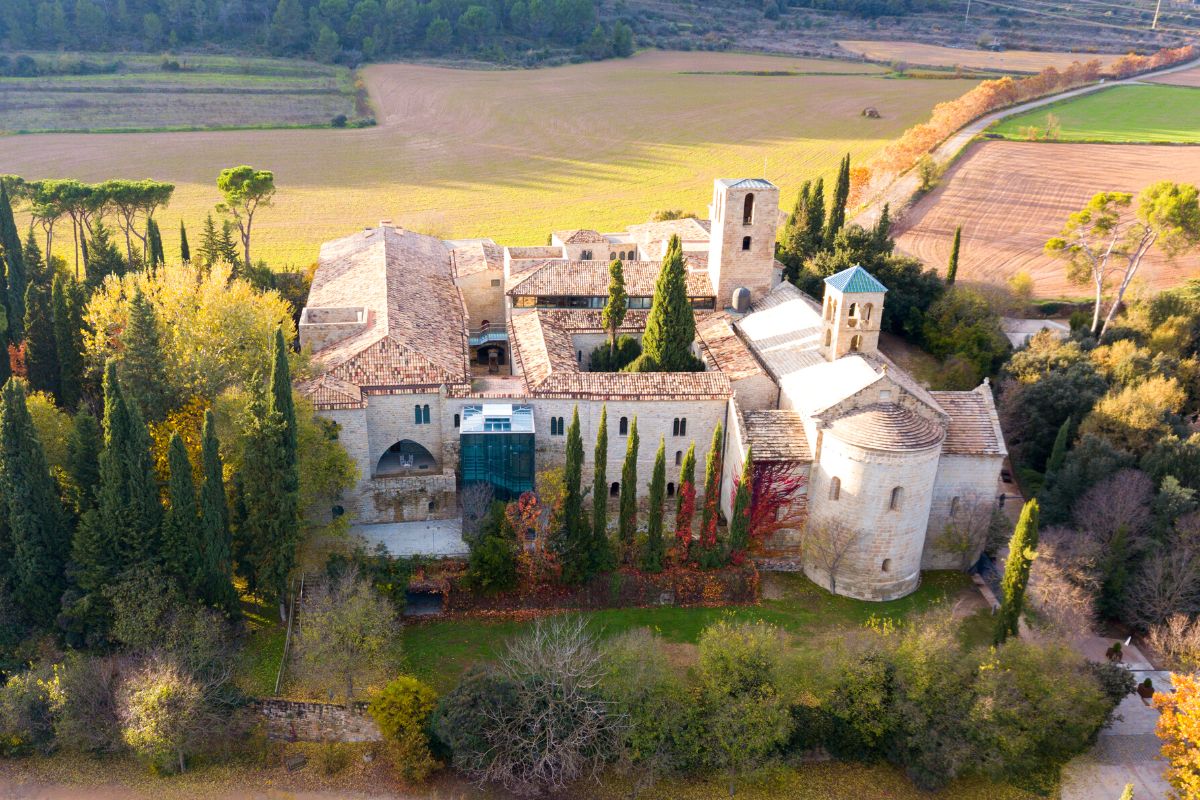
The Monastery Món Sant Benet is a touristic complex, where the main sight to see is the antique Benedictine monastery, dating back to the 10th century.
Marvel at the different architectural designs represented, including Gothic, Romanesque, Baroque, and Modernism, as you step inside the complex, and through the hallways adorned with strong, age-old pillars learning about the church and the crypt, wine cellars, and galleries.
Visitors can check out the Fundacío Alicía, a food research institution, whose goal is to educate people on creating better eating habits. Step inside for the different, fun activities they also have in store.
Check out the special experiences, ranging from Stories of Wine in the Monastery to The Enigma of the Monastery Jewels, and various fun family activities.
54 – Ferrari Land
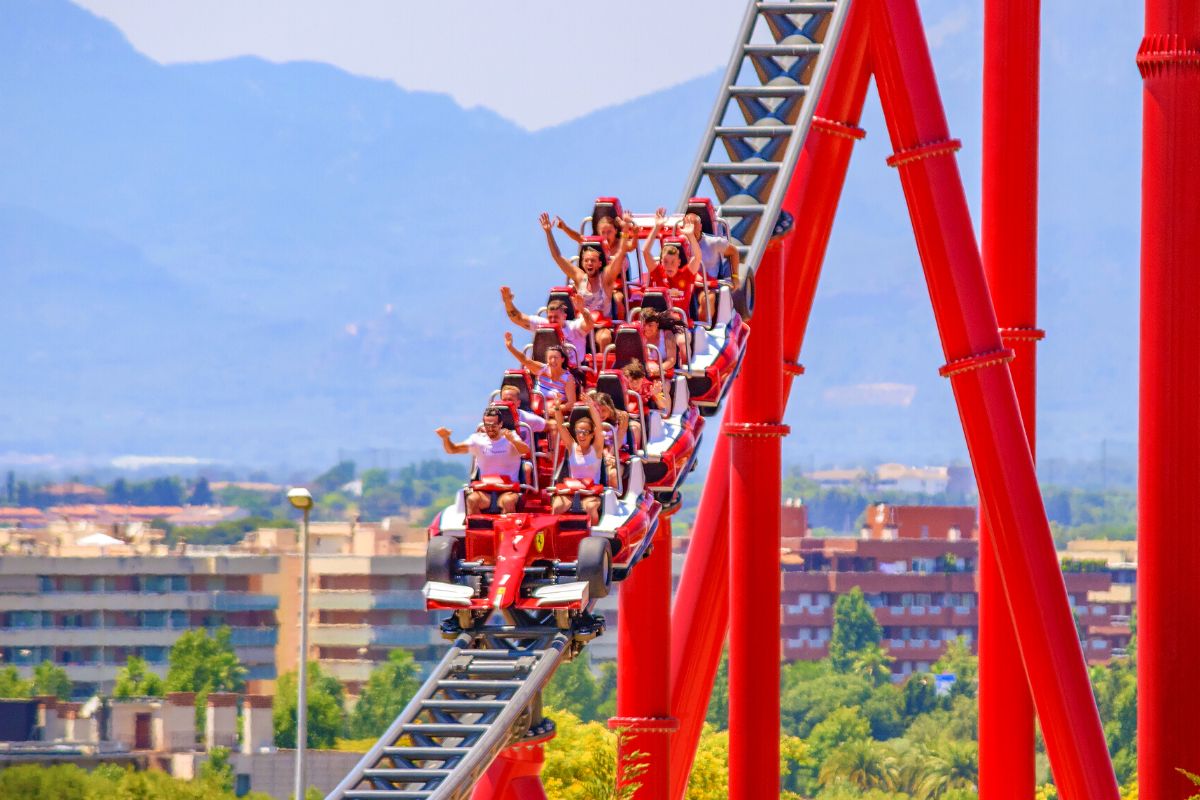
One of the fun things to do in Barcelona is to unleash your inner child or bring your actual child to Ferrari Land, a themed amusement park located 1 hour away from Barcelona.
Enjoy the more than 14 different rides and games, while strolling through a car-themed amusement park, adorned with Italian-inspired buildings and architecture. Italian inspired is also the wonderful dining options inside, offering the best of Italian classic dishes.
Walking in, you’ll be able to better learn about the famed luxury car brand, while feeling the adrenaline rush of a race car driver, with free-falling rides, race tracks, and spinning rides that turn your world upside down momentarily.
Enjoy the various dance shows and live entertainment as well as a choice of restaurants, Ferrari-themed.
55 – Museu Frederic Marès
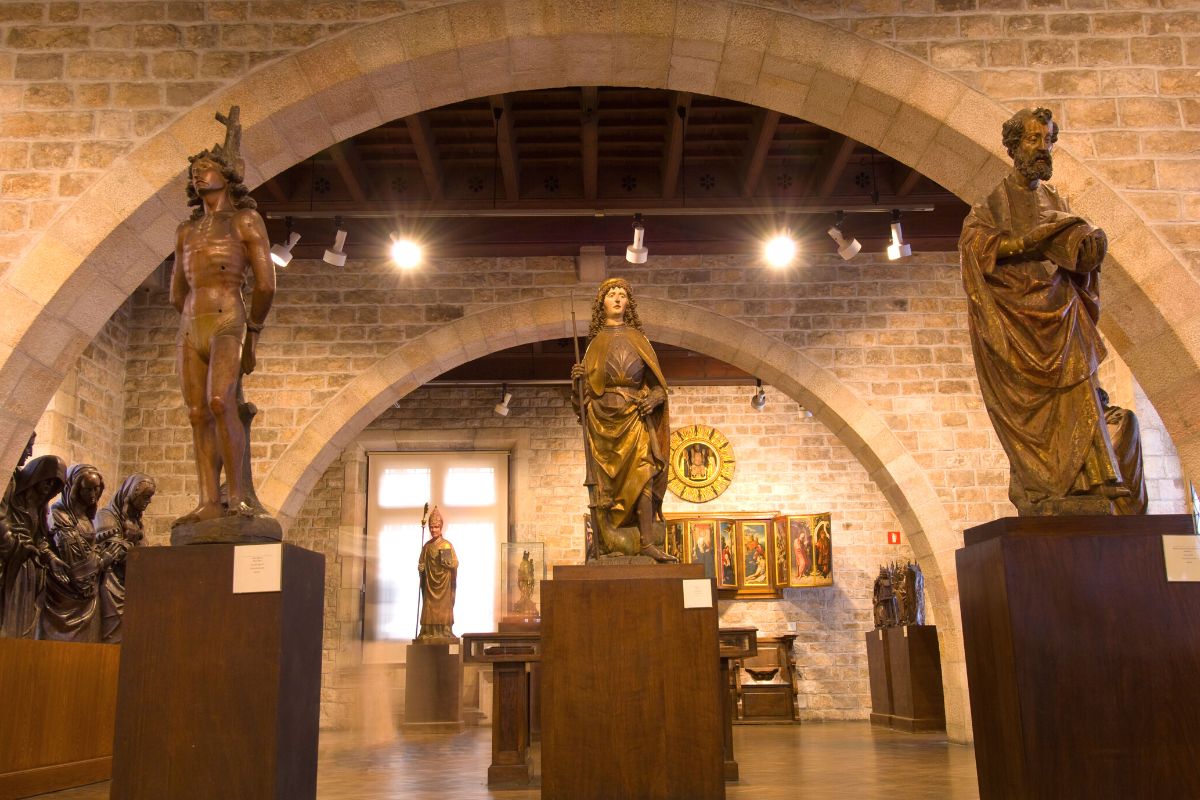
Visit one of the largest sculpture collections in Spain inside the Museu Frederic Marès, located in the Gothic Quarter, behind the Cathedral of Barcelona.
Inside, view the immense collection of Spanish sculptures, with origins from between the 12th century to 19th century, as well as other relics collected by the sculptor Frederic Marès, who lived to be 99 years old.
Throughout the museum, visitors will find examples of different collections, from religious sculptures and crucifixes, and statues of the Virgin Mary, to items belonging to the wealthy class of Barcelona in the 19th century, such as glasses, combs, and brooches.
A sculptor and avid collector of art throughout his life, Marès decided that when he passed (in 1944) he’d donate his collection to the city.
56 – Palau Sant Jordi
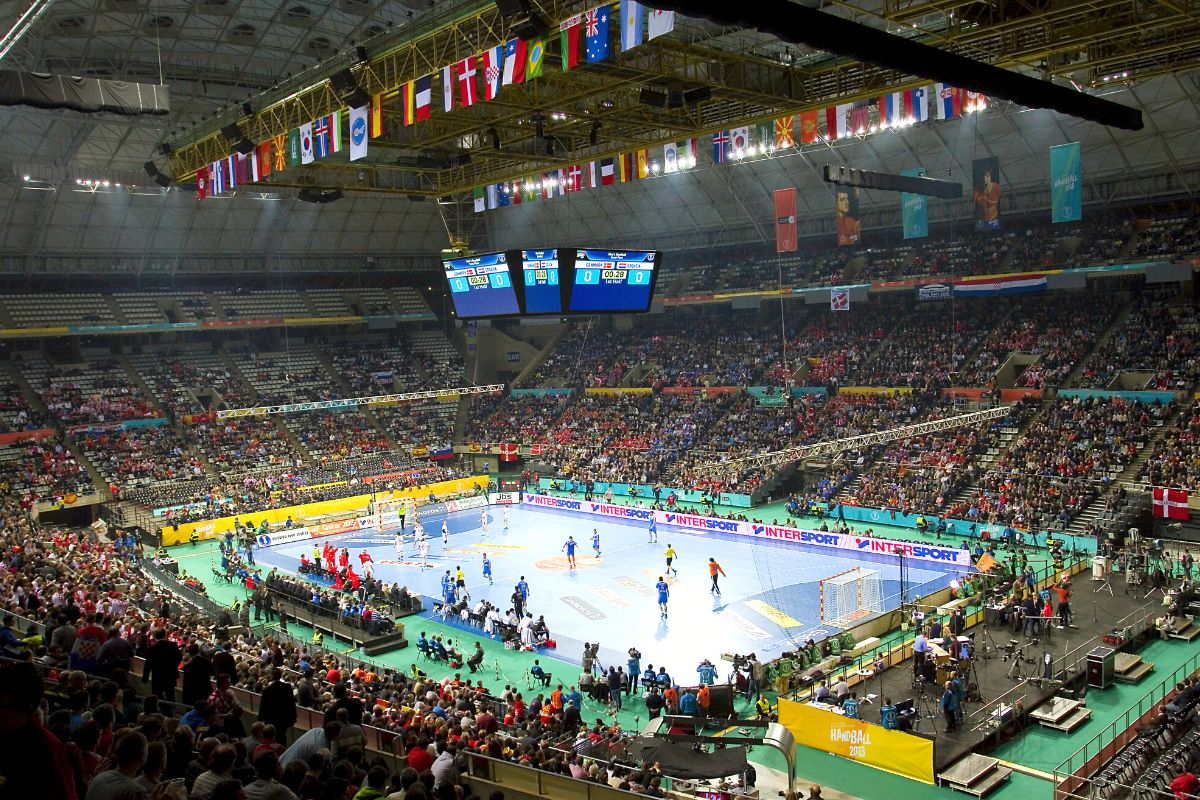
Palau Sant Jordi is a sports complex that serves as a venue for large sporting events as well as cultural. Built in 1990, just in time for the Olympics of 1992, designed by a Japanese architect.
Inside the sports complex, situated on Montjuic, the capacity of the Palau Sant Jordi is around 17,960 people. Today, the sports complex is used for a variety of sporting games and concerts mainly.
If you are attending a concert or sporting event in Barcelona, there is a good chance that it may take place at this stadium.
Entrance to the sports complex is free of charge when it is not in use.
57 – Olympic & Sports Museum

Also located in Montjuic is the Olympic and Sports Museum, deepening the appreciation of sports and its contribution to society and individuals, the learning of the Olympic Games, and various exhibits with relics detailing sports and Olympic history in Spain.
Learn about the other sporting events like the Tour de France or the Formula 1, and how these different sporting events influenced a time in society when periods were starting to change amidst oppression and war.
The museum officially opened in 2007 and is located next to the Olympic Stadium, meaning that during a tour of the museum, visitors will also get to see the other parts of the Olympic complex.
Check out the innovative technology, allowing guests to race alongside Olympic champions in “real” time.
58 – Monasterio de Pedralbes
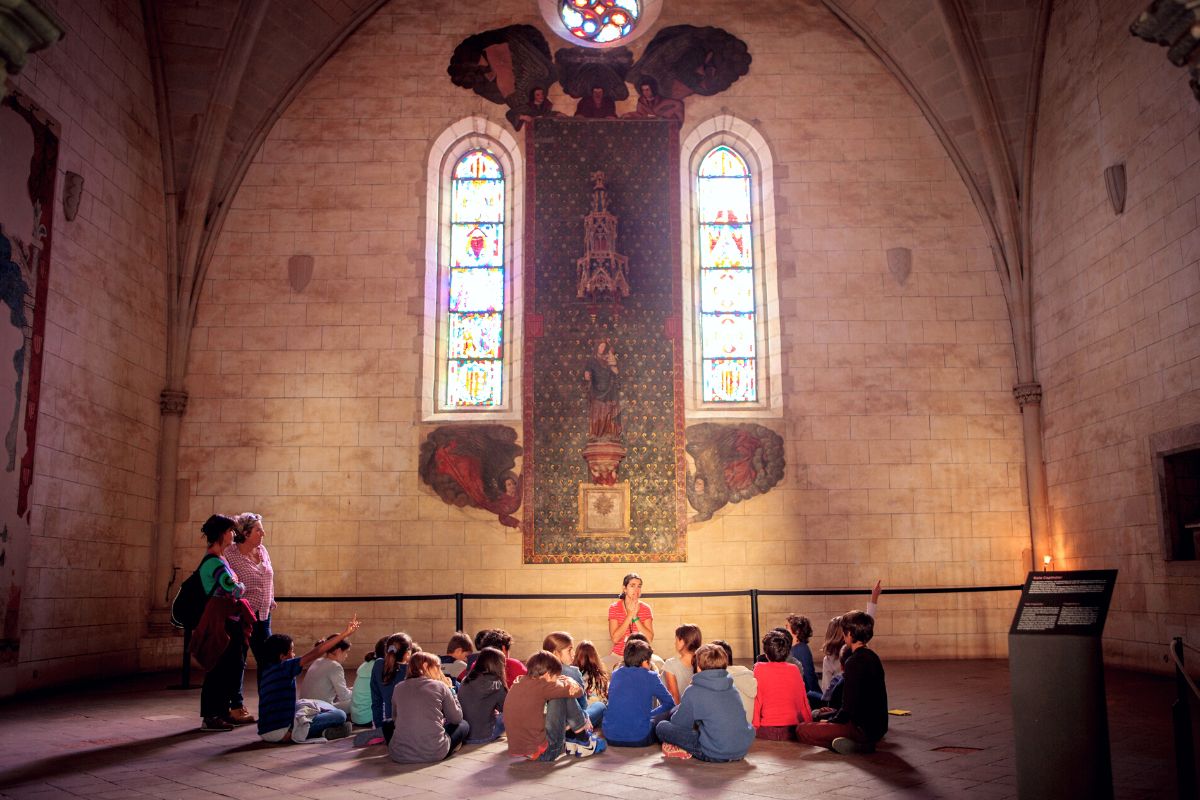
Unlike many religious constructions of its time, the Monasterio de Pedralbes was quickly constructed in record time, allowing the facade and design of the monastery to remain in a single architectural style, Gothic.
The name “Pedralbes” signifies white stones, which was the color of the stone as the foundation of the monastery.
Enter the religious space, and see the tomb of Queen Elisenda, the frescoes inside the chapel of San Miquel, dating back to 1343, and the museum housing various artifacts from the monastery, from items used every day, to paintings.
Step inside the quaint and quiet gardens, to enjoy a bit of seclusion from the hustle and bustle of Barcelona.
The monastery is located 21 minutes from Barcelona’s city center.
59 – Serra de Collserola Natural Park
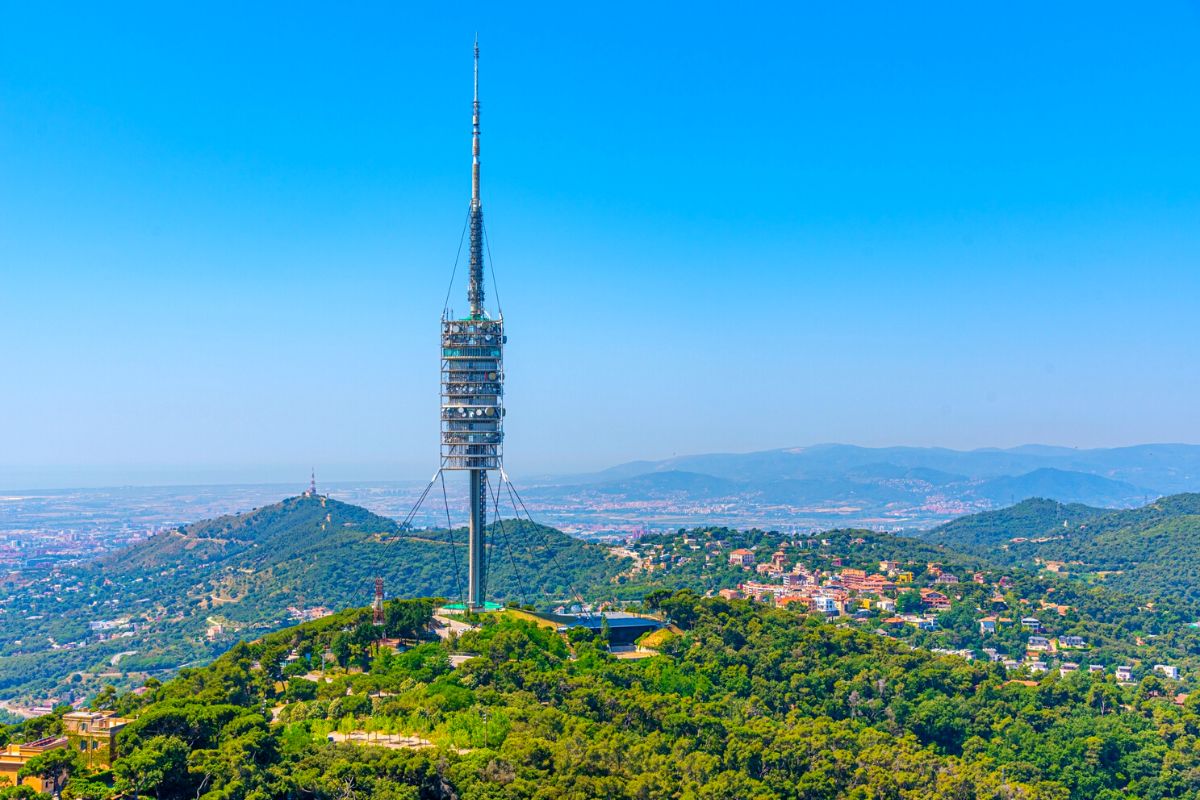
Spanning 8,000 hectares is the Serra de Collserola Natural Park, considered to be one of the largest green spaces in the city of Barcelona.
Walk through the abundant walking paths, or take a jog or a picnic under the shady trees, surrounded by plants typical of the Mediterranean. See examples of Aleppo pines, and a variety of wildlife.
While on your walk, you may stumble onto old churches and chapels, and other important buildings that offer a historical break in between the nature escape.
The park first opened in 1987, and since then, it has been a hot spot for both locals and tourists to enjoy themselves, especially on hot summer days.
Join a walking group and enjoy the sights in good company.
60 – Catalan Museum of Archaeology
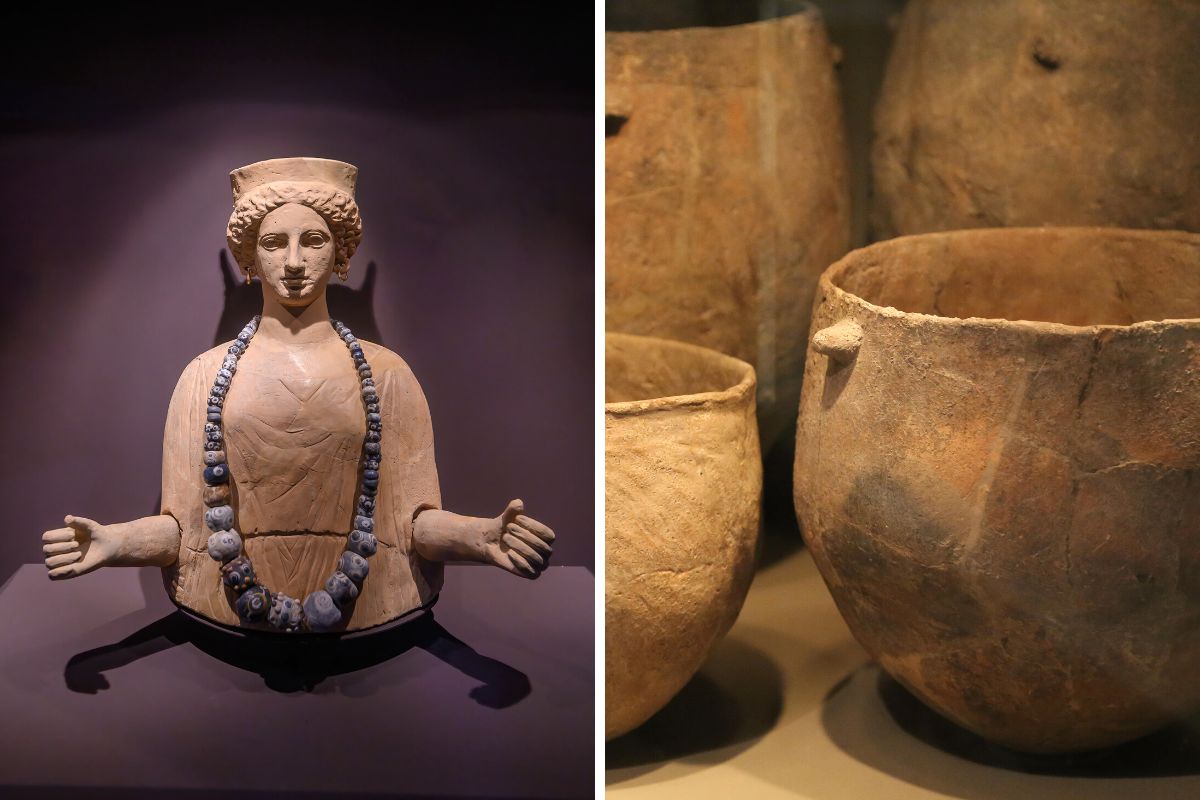
The Catalan Museum of Archaeology is a great place to begin your travels in Barcelona, to get a great introduction to the historical, societal, and anthropological introduction of the city.
The archaeology museum, with its multiple exhibits spread throughout the 4,000 square meters, situated within the vistas of Montjuïc, takes visitors down a journey to the prehistoric times of the land that is currently Barcelona, all the way to the Middle Ages, the Spanish Civil War, and today.
Housed inside the museum is the jaw of a Neanderthal dating some 53,200 years ago found in Spain, as well as treasures found near the coast, and examples of pottery from other civilizations.
Tickets start at 6 euros for adults.
61 – Mercat de Sant Antoni
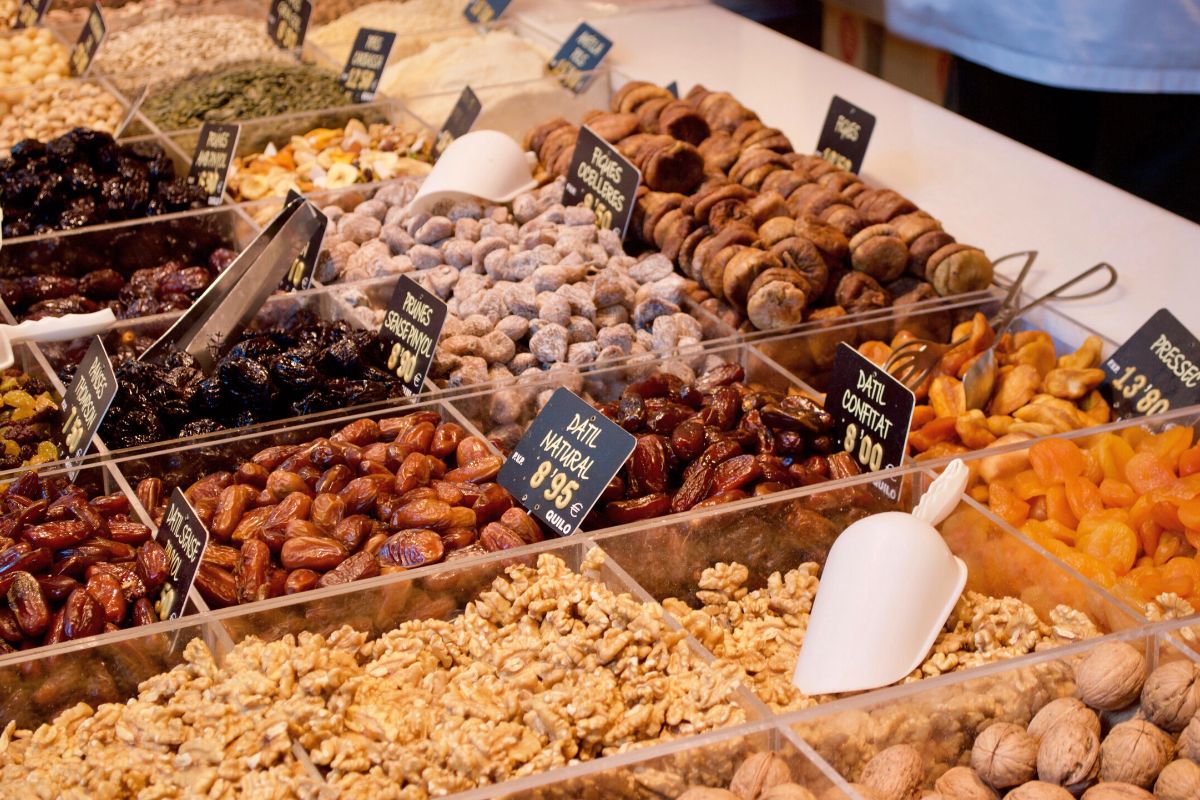
Visit the steel-framed, and covered Mercat de Sant Antoni, which first opened its doors to the public in 1882.
It is the perfect market to enjoy at your leisure, without bumping into crowds of people that you would typically find yourself surrounded by at other popular markets in Barcelona.
Offering exquisite food options like seafood tapas and drinks, stroll through the food hall to see what you’ll be enjoying for lunch. Also worthy of checking out are the vibrant vegetables, spices, dairy, and meat stalls, offering the freshest produce possible in the city.
Check out the book shops inside, as well as other boutiques unique to the market.
The market is located near the Raval neighborhood and opens every day 8:30 am – 2:30 pm.
62 – Museu de la Xocolata (Chocolate Museum)
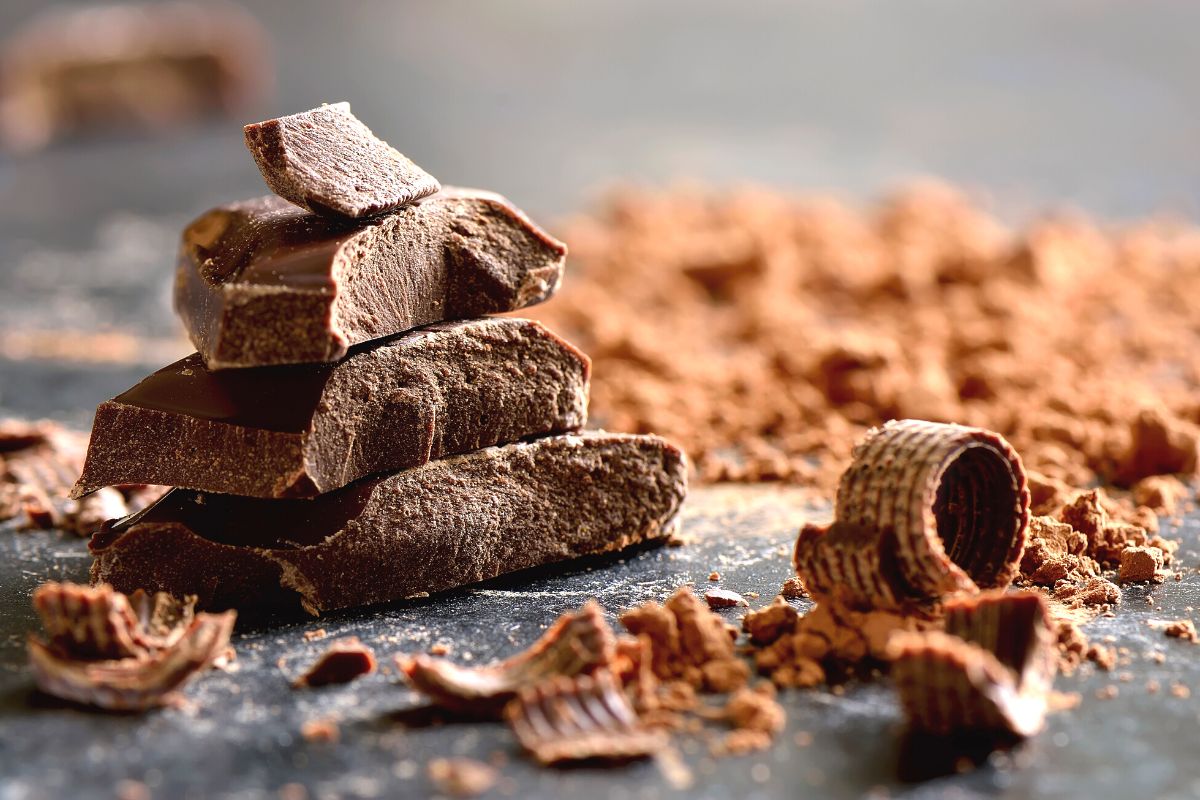
Chocolate lovers listen up, one of the must-stop attractions for you is the Chocolate Museum, located just a 4-minute walk from the Picasso Museum, the perfect treat to indulge in during your sightseeing.
Inside the museum, check out the installations covering the history of Chocolate, from when it was brought to Europe in the 16th century from South America to its popularity amongst the Spanish, even the Spanish military, as well as learning about the nutritional, medicinal and ritualistic properties the bean has.
Located in a historical building belonging to the Bourbon army, visitors will also learn about the creative inventions and desserts involving chocolate, at the hand of chocolatiers.
Enjoy the variety of activities and tastings, designed for each age range.
63 – Centre de Cultura Contemporània de Barcelona
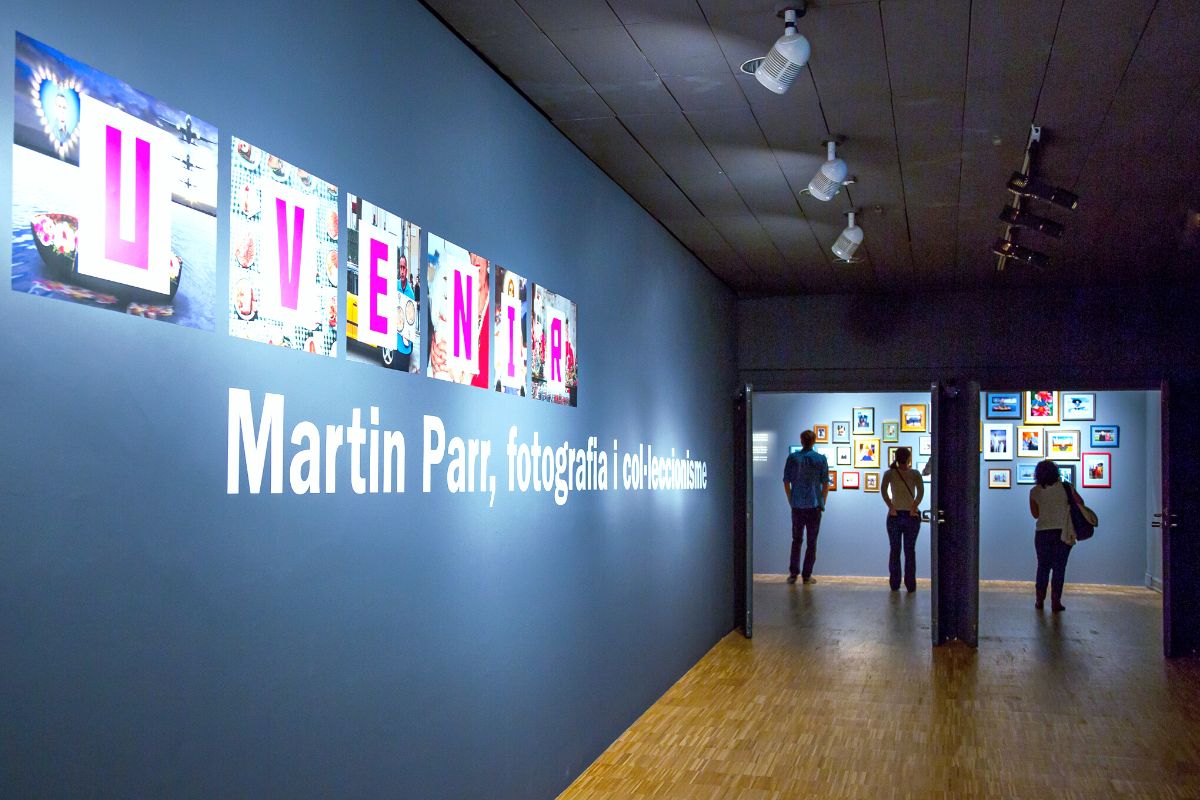
The Contemporary Cultural Center of Barcelona is a hot spot for all things urban and cultural activities. Step inside, and take a look through the multiple-floored space, where art galleries, rotating exhibitions, debates, lectures, and film screenings take place.
Check their online website, to view the events calendar, and be up to date with the different events happening during your stay in the city. Attend one of the many live concerts that take place inside the cultural center, ranging from folk music to Spanish classic guitar sessions, and more.
The cultural center has many interactive exhibits, guaranteeing a fun and inclusive experience in learning more about Barcelona’s art scene. Be sure to purchase your ticket online ahead of time.
64 – Gardens of Mossèn Costa i Llobera
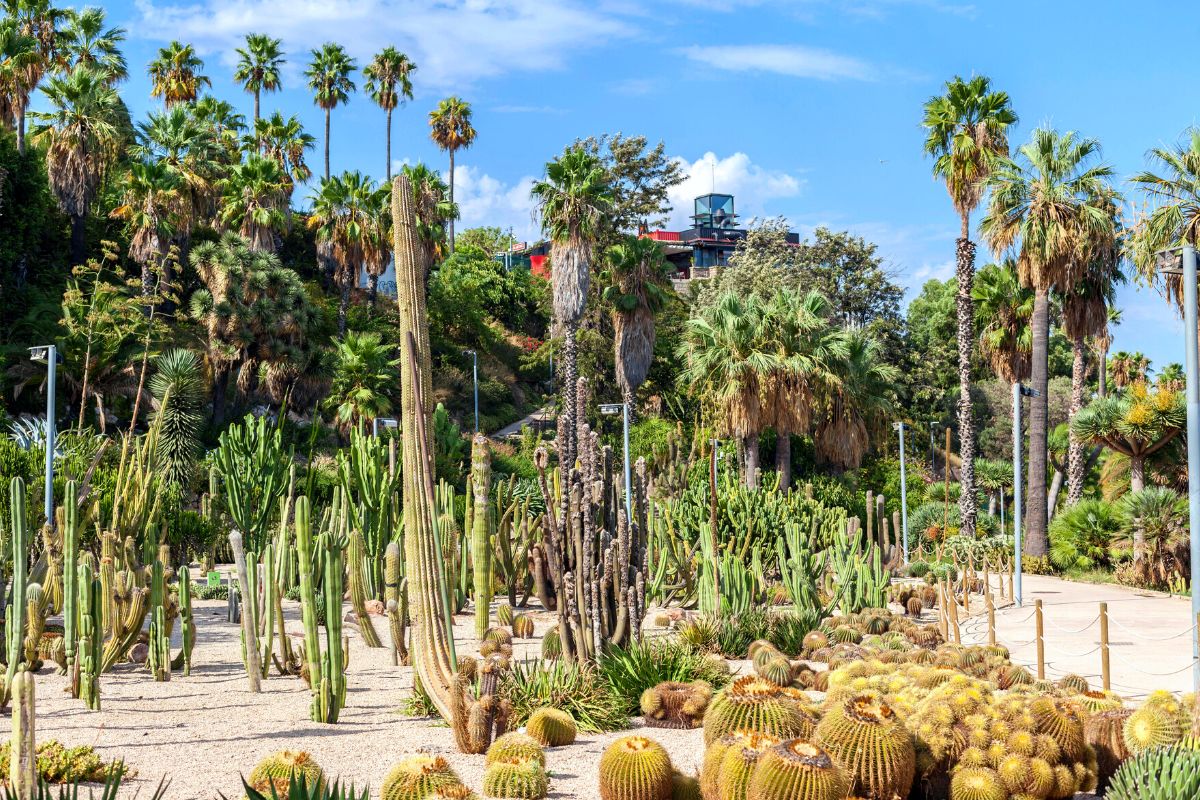
Feel like you’re in a different world at the Garden of Mossèn Costa i Llobera, a succulent and cacti garden situated beside the sea, and far from the city center.
Since its opening in 1970, the garden has been continuously growing and expanding, offering incredible views of the Old Port, the sea, and Montjuïc.
Explore the succulents and cactus plants, but also look closely at the other exotic plants making up the colorful splendor of the garden, like aloe, and other specialized plants from Mexico, Argentina, Morocco, Australia, Brazil, and more.
The gardens have made their mark on the New York Times’ top 10 best gardens in the world for their distinct beauty, unique to other gardens within Spain.
65 – Icebar Barcelona
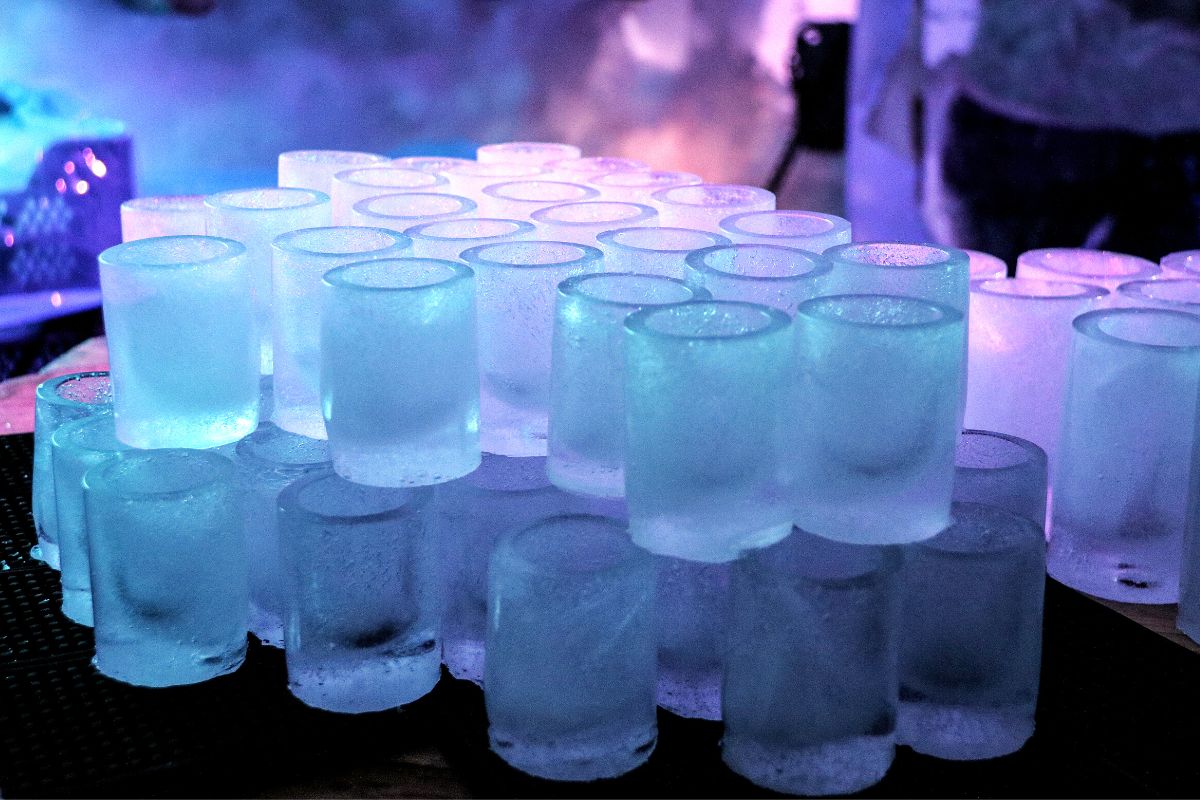
For a unique bar experience, consider checking out Icebar Barcelona, offering hot and cold options for a grand time.
Completely opposite to the usual weather in Barcelona, the ice bar offers visitors a cool break from the heat of summer, while enjoying the ice lounge with ice sculptures, and unique drinks concocted especially for those frigid temperatures.
No need to pack your own jacket, as tickets include warm clothes, except shoes, so please pack accordingly. Want to take a break from the cold? Step up to the open-air “Hot” Bar, situated on the beach, or the fresh Beach Garden Bar.
This unique bar is located on Somorrostro beach, and it’s suggested to book tickets online for easier access and a discount.
66 – Port Cable Car
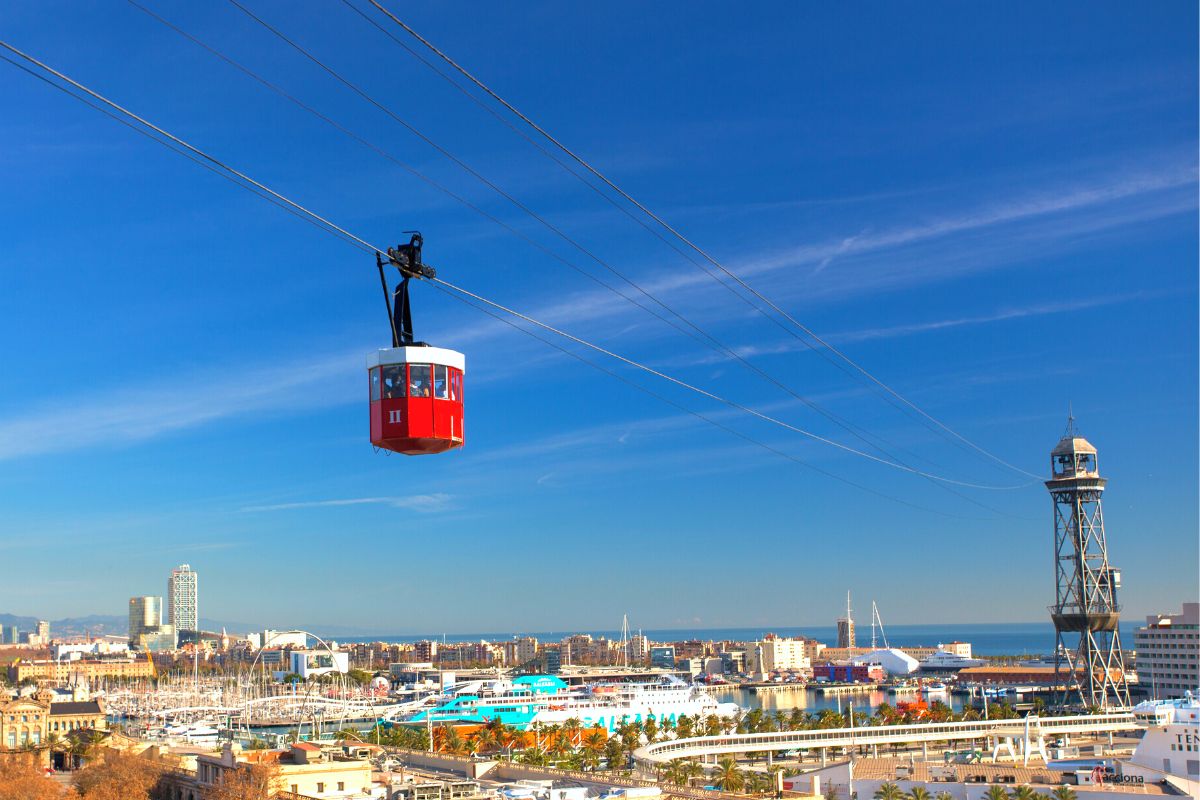
Take your fun to new heights inside the Port Cable Car, adding to the list of 2 other fun cable car options to enjoy Barcelona’s spectacular sights. Take a journey from the Port of Miramar, all the way to Montjuïc, taking in the sweeping views of the city and sea below.
Open every day of the year, except for Christmas, the Port Cable Car is a great option to plan for, especially during sunset hours to feel like you’re in a movie. The journey takes around 8 minutes to complete and has 2 stops: the Miramar station and San Sebastian Tower.
To best prepare for the journey, purchase your tickets ahead of time for 16,50 euros roundtrip.
67 – El Born Centre de Cultura i Memòria
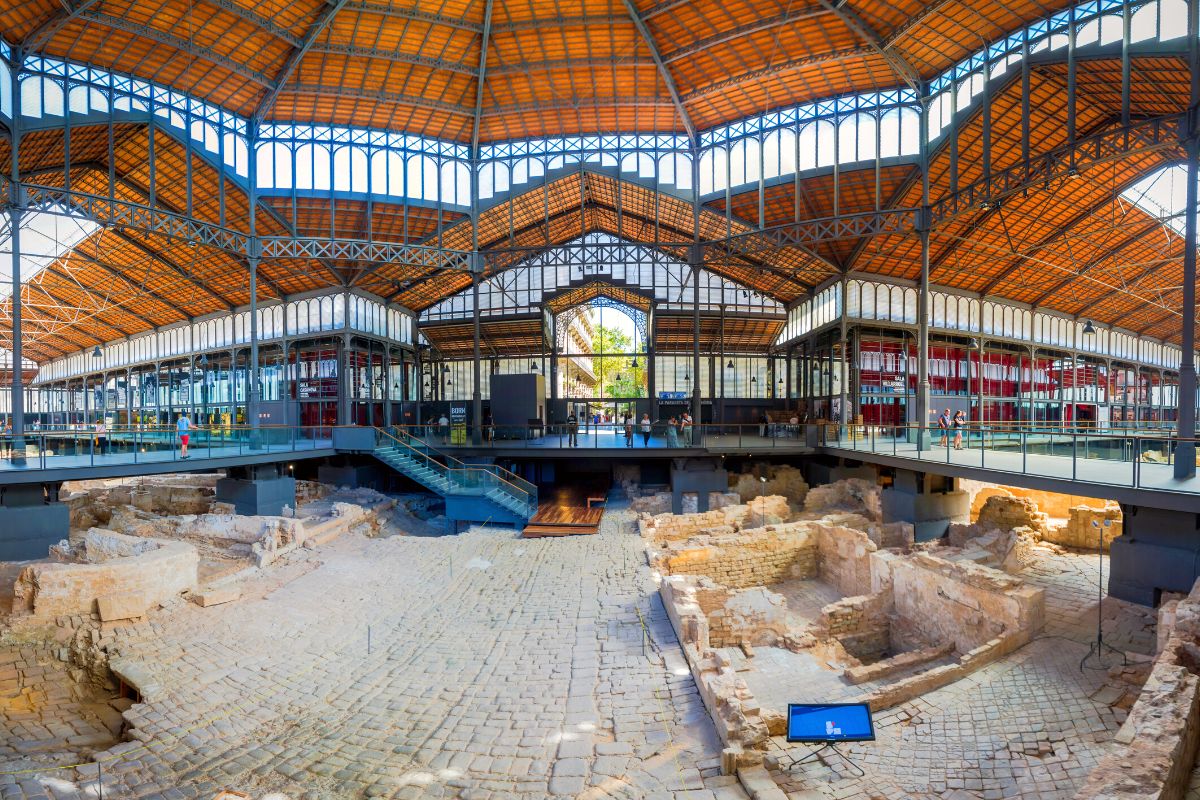
Walk inside El Born Cultural Center, located just a 4-minute walk from the Picasso Museum.
Once you enter, you’ll be greeted with an impressive archaeological site, said to be the foundation of the city, and specifically, a market that is so well conserved, that visitors can identify the homes and even streets.
Walking a bit further, check out the educational galleries, overflowing with thought-provoking exhibitions, showcasing artifacts gathered from the excavation of the archaeological site, as well as galleries hosting temporary cultural exhibits.
Check out the exhibition, “Barcelona 1700. From Stones to People” or “A Family Walk through the Year 1700” for a small fee.
The space is free to enter, and audioguides are also available upon request, free of charge.
68 – Virreina Palace
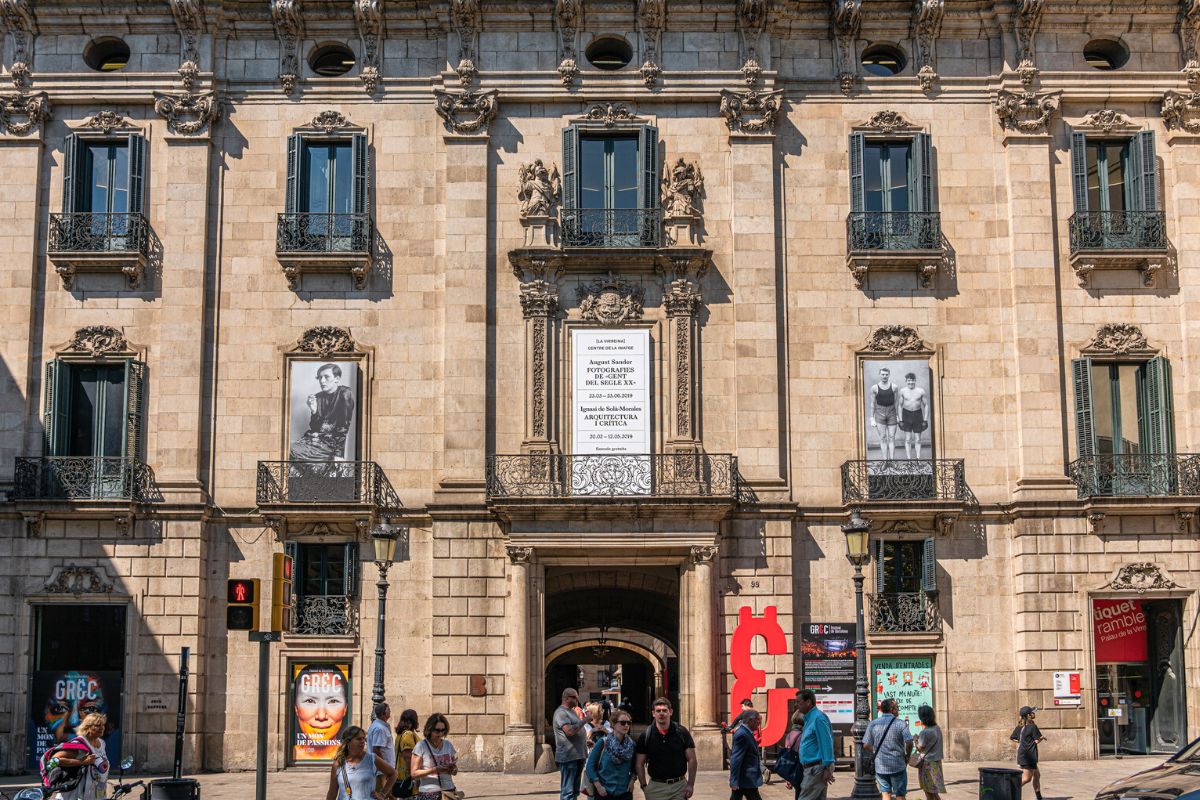
Located centrally in La Rambla, is the Virreina Palace, a collection of contemporary art pieces and artistic images designed by Barcelona native artists.
Housed inside a historic structure dating back between 1772-1775, take note of the outstanding architectural style, reminiscent of the Baroque style, with an attention-grabbing facade, a beautiful double staircase inside, and an increased amount of light flooding the inside.
Many of the city’s cultural activities take place here, so make sure to check their events calendar to see what is happening while you’re visiting Barcelona.
Entry to the museum is free.
69 – Catalonia in Miniature
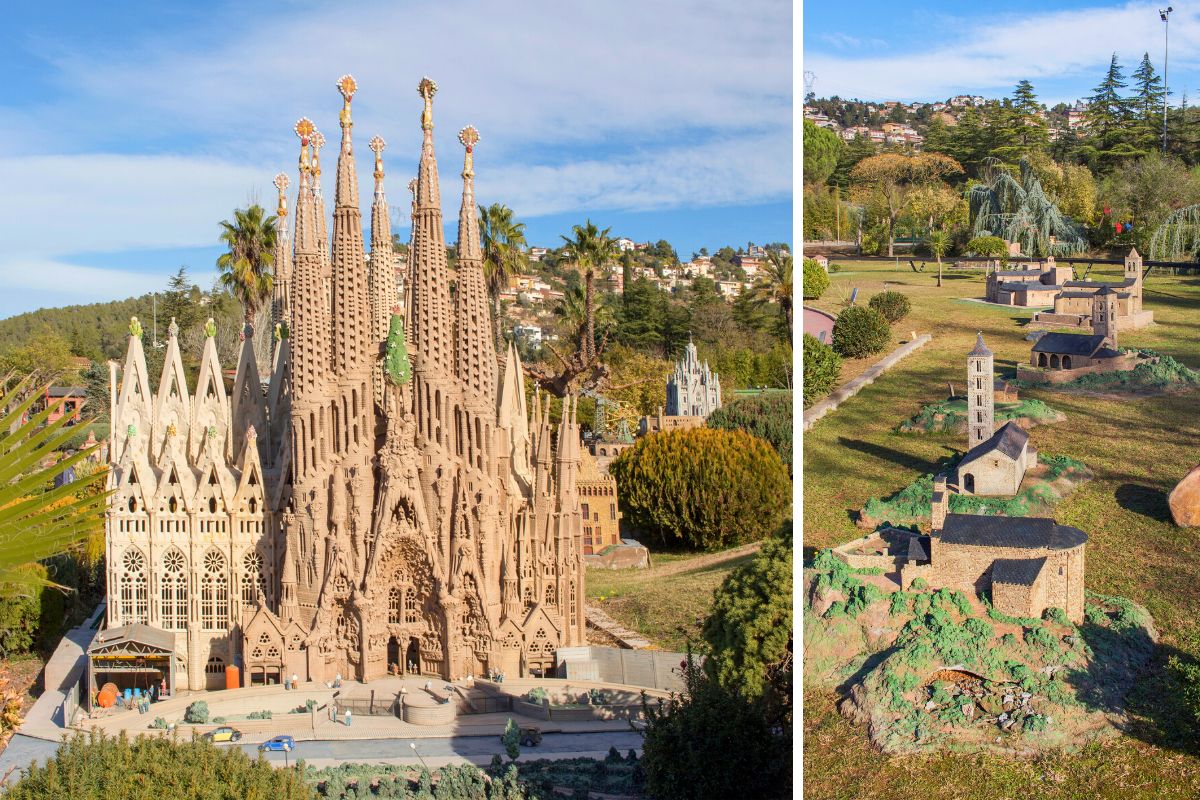
Zip-line your way above the most emblematic miniature replicas of major sites in Barcelona, from the Sagrada Familia to the Barcelona Cathedral, the Gothic Quarter, and more.
Covering an overall 60,000 square meters, this park is known as the largest, miniature park in the world (ironically).
Feel like a giant, wandering the “streets” of Barcelona inside the miniature park, as you get close to the miniature replicas, taking in the incredible details and work of each model in the park, which opened in 1983.
Bring your children to enjoy the curiosity of seeing so many sites about their size, making them feel like they are in make-believe land.
Purchase your ticket ahead of time online in order to receive a 15% discount.
70 – Rambla De Mar
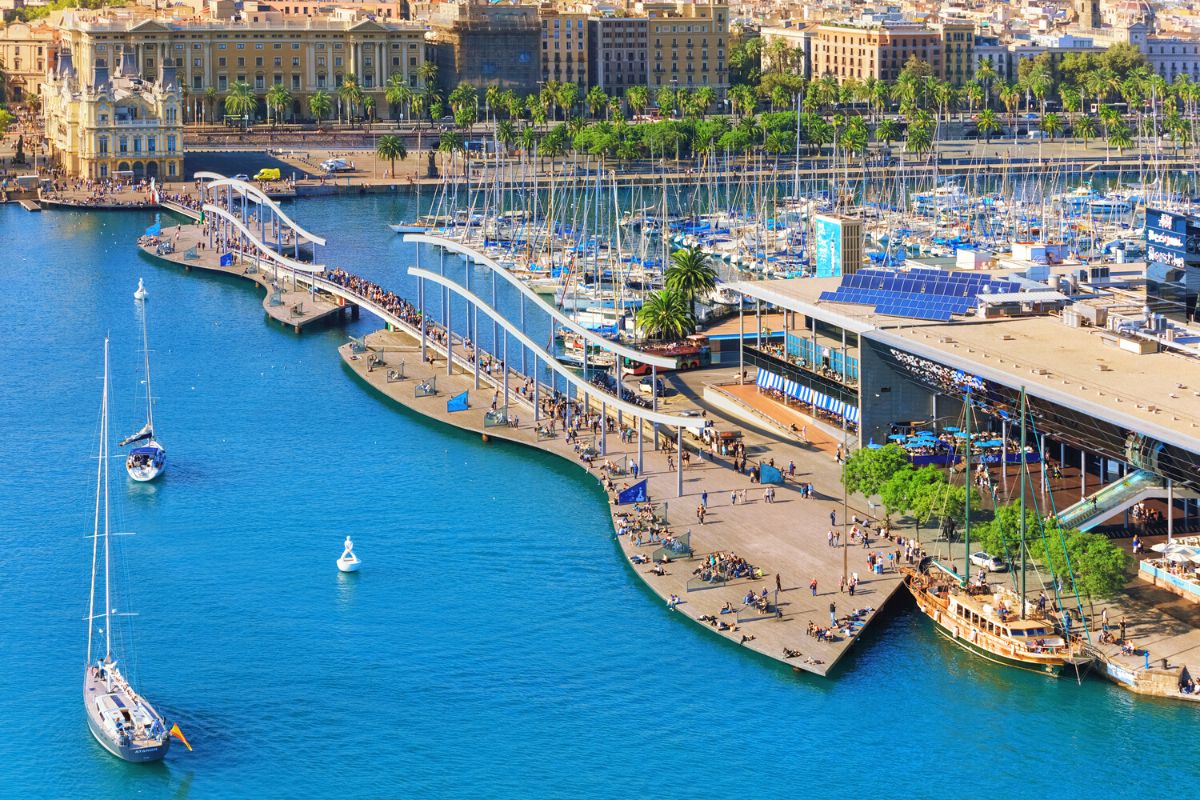
Check out Ramble De Mar, a wood bridge/promenade, showing wonderful views of Montjuïc and parts of the Gothic Quarter, and of course, the stunning sea.
Taking shape of the wavy waves of the sea, the wood promenade also has tall glass windows placed on the edge of the promenade for any kind of strong winds or splashing water that may jump out.
The promenade is free to walk and encouraged to take advantage in between walking and sightseeing.
The Rambla De Mar is located at the end of the street where the Colombus Monument is. Stroll all the way through the bridge, connecting guests to shopping and local eateries.
71 – Torre Glòries
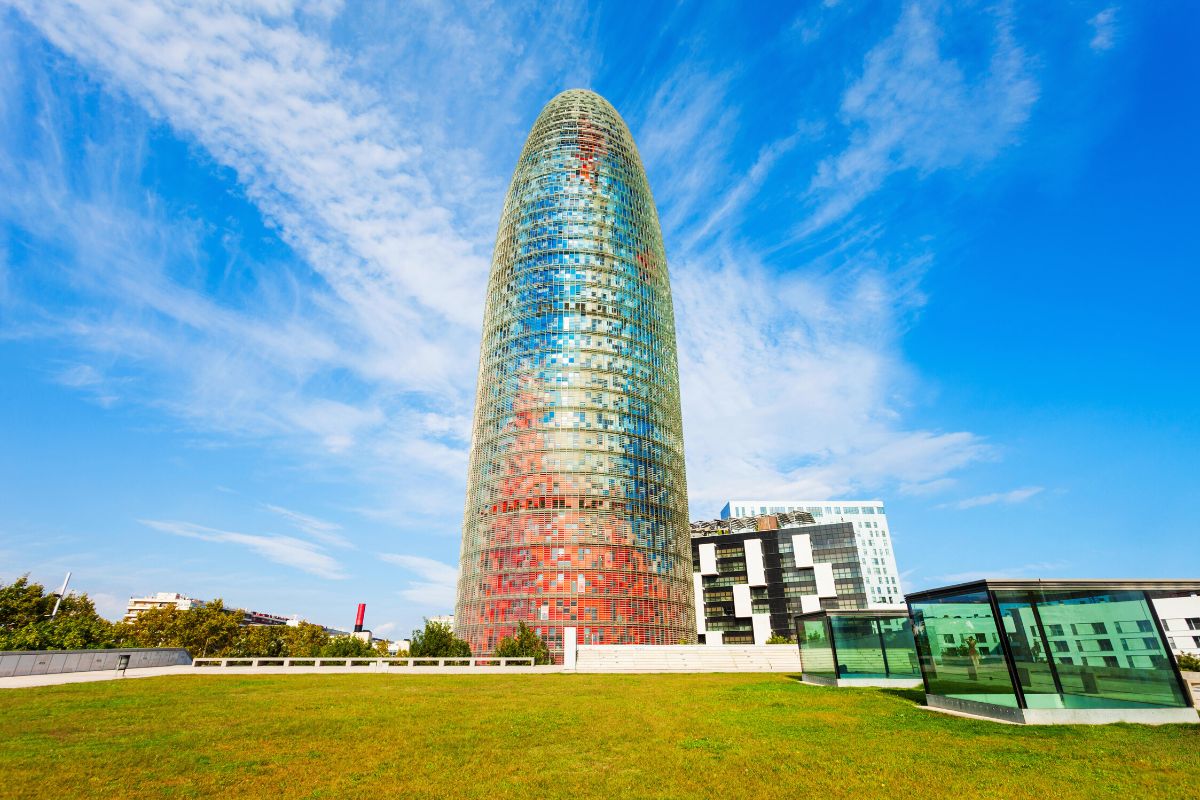
Also known as the Torre Agbar, meaning waters of Barcelona in Catalan, the famously bullet-shaped tower situated beside the Mediterranean Sea is called the Torre Glòries.
More than a modern example of architecture in Barcelona, it is also the signifier of the beginning of the technological district of the city.
The exterior architectural makeup of the tower is made up of glass, meant to reflect the waves and colors of the sea. Towering over the sea, it stands 144 meters high, visitors can step inside and walk onto the spectacular observation deck for a fee.
Stop by the museum inside as well, to get insight into the inspiration for the tower, and its design and purpose, which just opened recently.
72 – Museum of Illusions

Full of double-takes is the Museum of Illusions, located between the famous La Boqueria market and the Barcelona Museum of Contemporary Art.
Visit the museum and check out the various paintings in a different way, coming to life in their 3D versions, step inside and be the main focal point of one of the many famous paintings of renowned artists.
Also fun, take a look at incredible food art, or jump inside the “dry pool” inside the Time Out Zone, proving time to fly by with fun.
Be sure to purchase your tickets online for a better rate, and make sure to check your ticket before purchase, as some tickets may include entrance to the Big Fun Museum, also a winner for child-like fun.
73 – Mies van der Rohe Pavilion
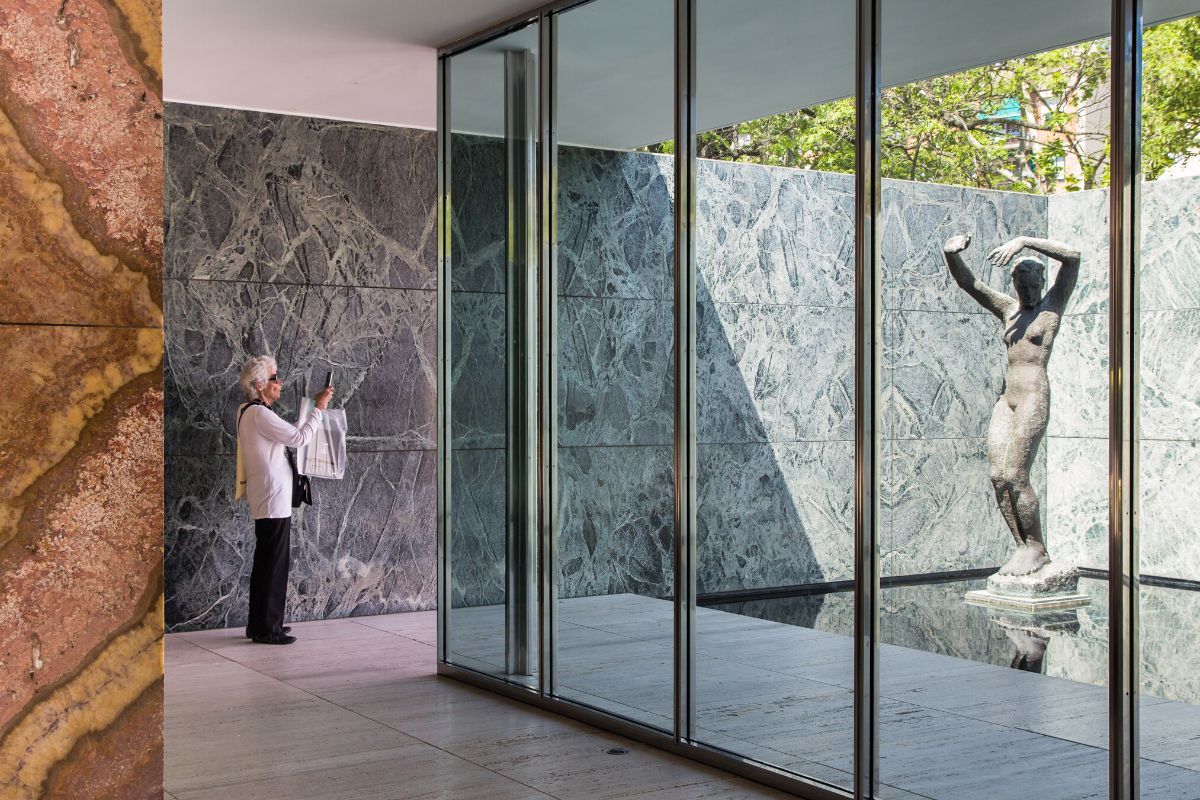
A cultural center worth checking out for its stunning and modern architecture is the Mies van der Rohe Pavilion, located southeast of the Barcelona city center.
Previously known as the German Pavilion, the pavilion dates back to 1929 when it was built for the International Exposition in Barcelona, by Mies van der Rohe, a German architect. After the exposition, it was torn down, but in 1983, a group of Catalan architects rebuilt it again, trying to recreate it back to its glory days.
Inside, visitors can check out the different activities and events, many of which are constantly rotating and provide fresh cultural and thought-provoking exhibits. Step inside the library, or take an audio-guided tour of the space, brimming with history and architectural anecdotes.
74 – Pedralbes Royal Palace
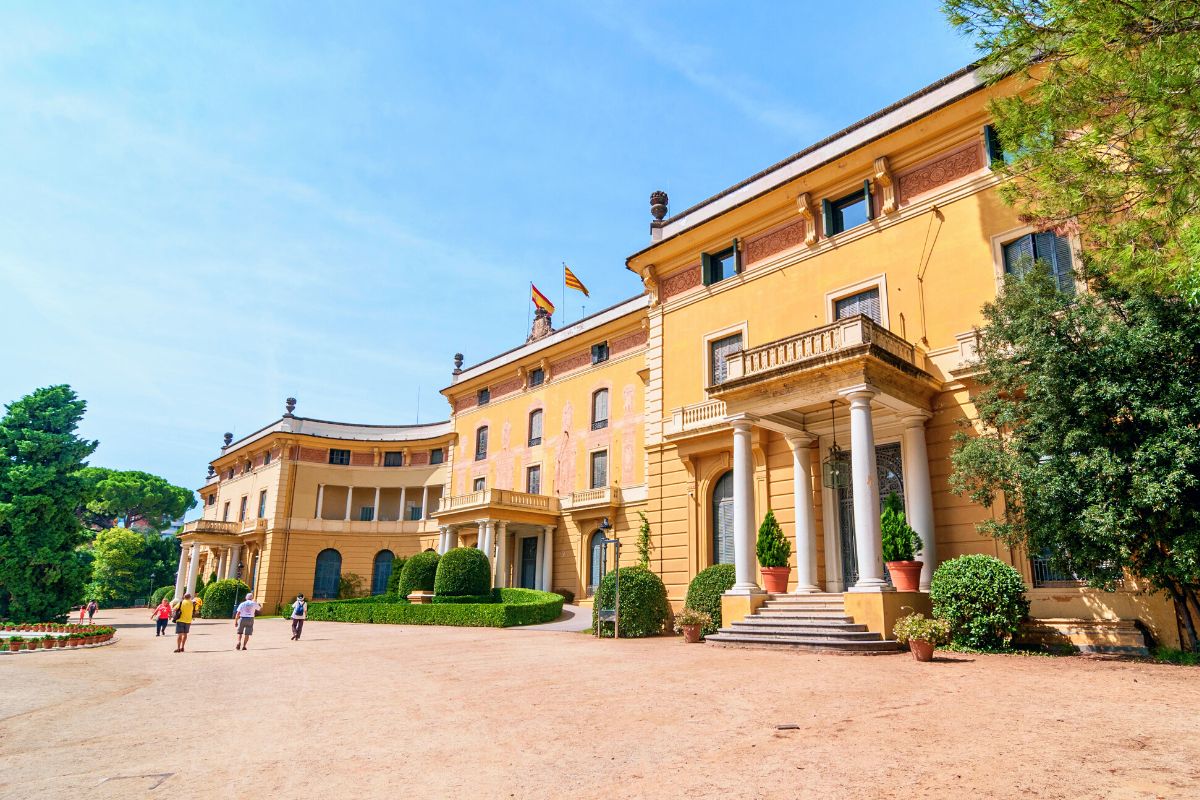
The Pedralbes Royal Palace used to be the official home of the Royal Family of Spain every time they would visit Barcelona, as well as the place where the Catholic King and Queen of Spain welcomed Christopher Colombus after returning from America.
Today, visitors can step inside, and view pieces of art, ceramics, and pottery from other countries, as well as special exhibits housing pieces by Picasso and Miró.
Walk into the beautiful gardens, designed with a geometric design, beautiful shrubs, trees, and flowers, including magnolia flowers, bamboo trees, and fragrant eucalyptus.
The royal palace is located west of the historic city center of Barcelona. Tickets to enter are available for 5 euros.
75 – Museu Egipci de Barcelona
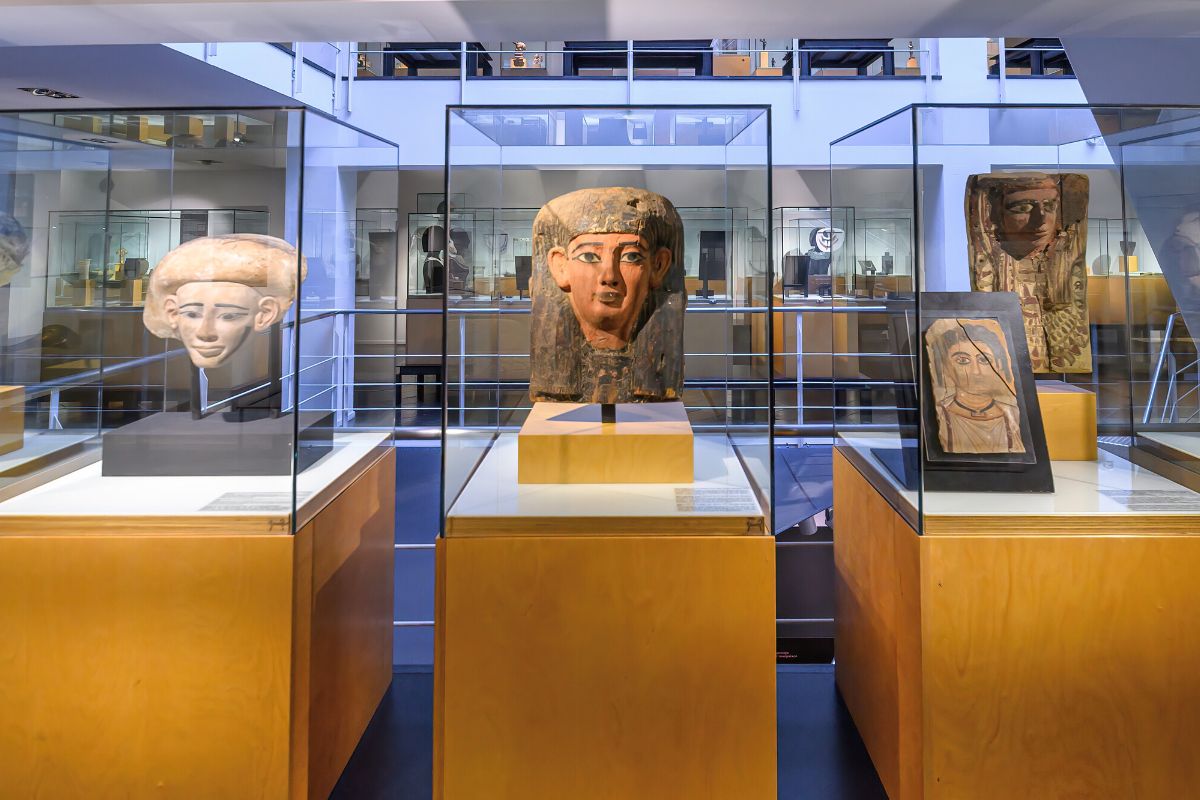
Visit Egypt while you’re in Barcelona inside the Egyptian Museum of Barcelona, where you can browse through multiple exhibits showcasing Egyptian sculptures, art, crafts, and accessories, telling the story of Egyptian history and heritage.
Learn about the hierarchy of ancient Egypt, funeral beliefs and different practices, ritualistic activities, and their deities.
Dispersed amongst 2 floors of exhibits and collections, check out their website to find what current exhibits are housed in the museum, as they are frequently changing, as well as check out the cultural events that take place.
Located 12 minutes away from the heart of the city, and accessible via public transportation, the Egyptian museum is a great rainy day activity to do in Barcelona.
Tickets start at 12 euros per adult entry.
Booking several Barcelona attractions?
With many museums and attractions to visit in Barcelona, one way to help streamline entry and save money is by purchasing the Barcelona Museum Pass or the Barcelona Pass.
Each pass offers skip-the-line, as well as saving money in the long run for each museum entry you’d buy an entry for separately.
Plus, the passes are valid for a whole year (one visit per museum) so if you didn’t visit one museum, but you’re back within the year, you can still use your pass. Make sure you compare the different options available and pick the right Barcelona attractions pass for you!
Visiting Barcelona on a budget?
A great way to see Barcelona on the cheap is to join a free walking tour, where a local guide will take a group of travelers around the city, teaching them about the sights, including helpful and good-to-know information.
Looking for the best Barcelona tours?
Choose from a variety of Barcelona tours, ranging from walking tours, hop-on hop-off bus tours, bike tours, an exciting segway or scooter tour, and for those who like the occult, a riveting ghost tour.
Cruise the Mediterranean Sea on a boat tour, or take to the skies on a memorable helicopter tour of the city. There are many ways to explore Barcelona, so make sure to take advantage of choosing a unique tour to show you around the city on land, sea, or air.
Final thoughts
Barcelona is a city brimming with extraordinary sights, culture, art, and history that are still alive, and co-existing with its promising future.
It’s truly no wonder around 27 million people travel to Barcelona every year, making it the most visited city in Spain, and within the top 20 most visited cities in the world.
We hope that our list of 75 best tourist attractions in Barcelona has helped inspire your next travels to the “city that inspires”.
Happy travels!

